August 25, 2019
Martha O'Kennon
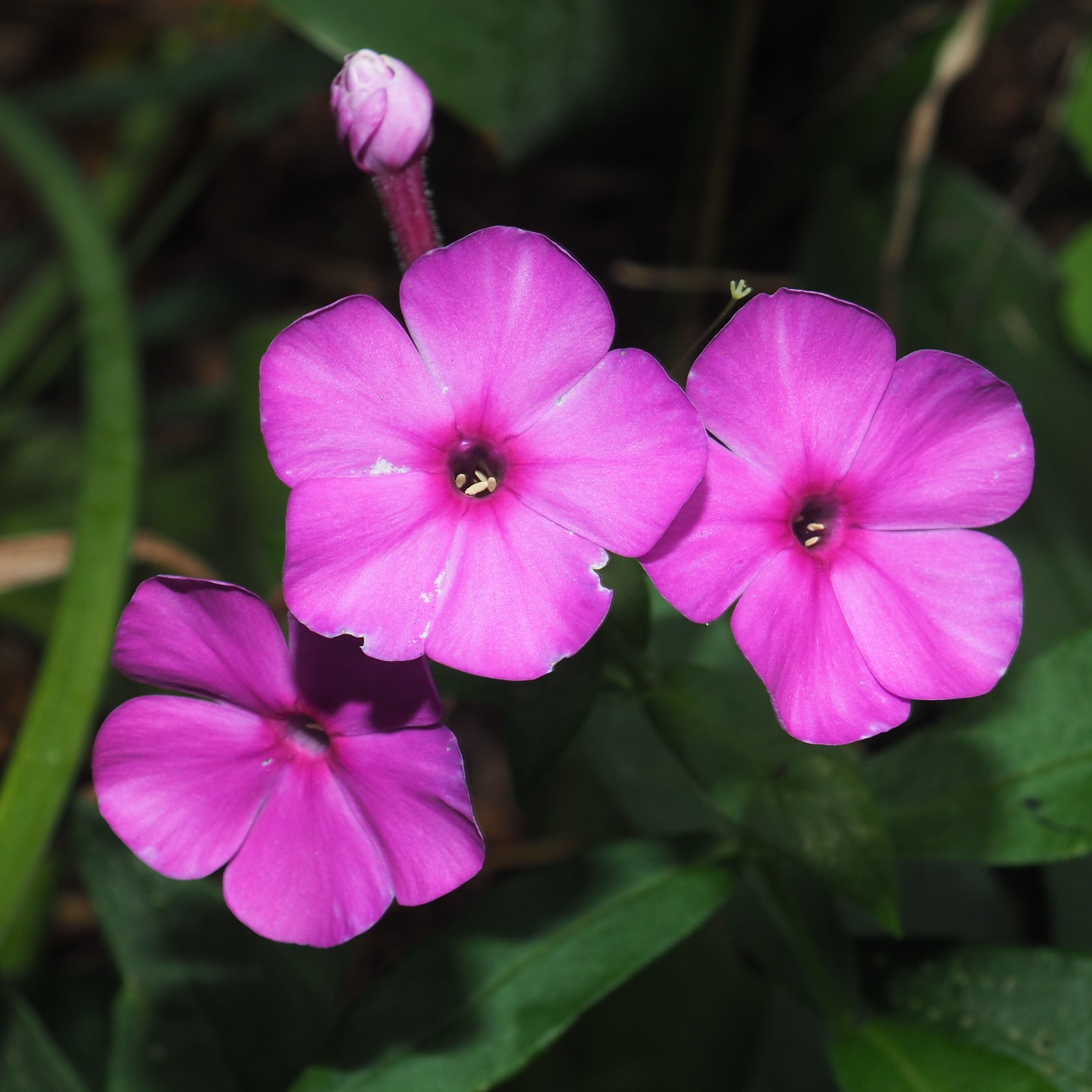
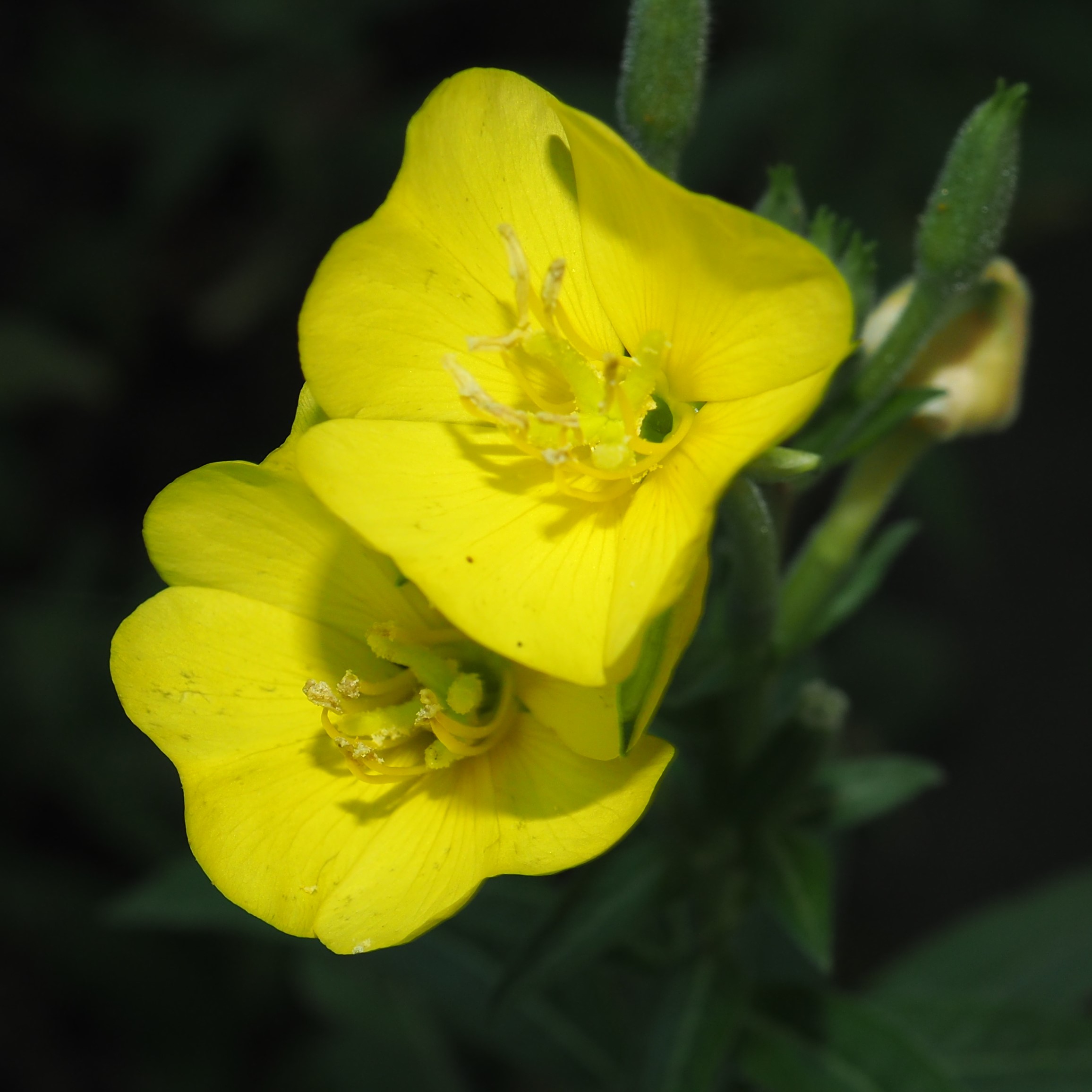
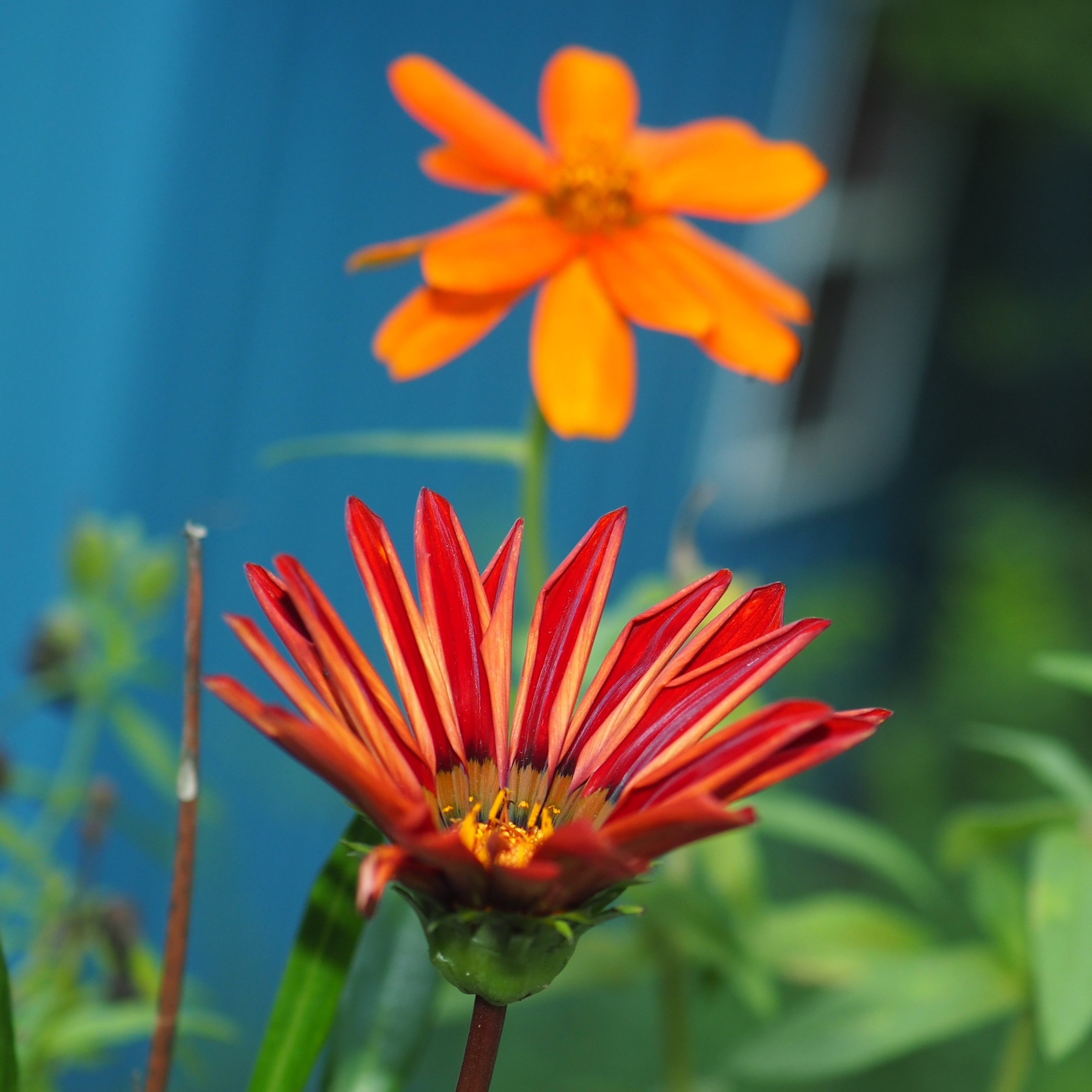
It's cooler! You saw last week the double rainbow following a nice thunderstorm. Since then we've had another one or two smaller showers, which is helping everything. A Phlox plant that I got a few years ago in a greenhouse bloomed this year. What pretty magenta flowers! The tall Common Evening Primrose is now blooming in the dusk, a couple of flowers at a time. And in the deck flower box, the gazanias come out with an occasional orange bloom.
Remember that there is information in the name of the file for each image. You can see it by mousing over the image - look at the lower left of the screen. Or you can click on the image to get to the (usually) larger image. Then the info is displayed in the address line above. Sometimes the second click will actually display a different view of the original image.
To imagine that last year seeing a Punctured Ant was very uncommon. For one thing, it was a new item on my Ant Horizon. But now I see them almost every day wandering around on something. Here's a picture with two Punctured Ants and one Small Honey Ant on a redbud leaf. The top and bottom ants are Punctured Ants (picture 2), while the middle one is a Small Honey Ant (picture 3).
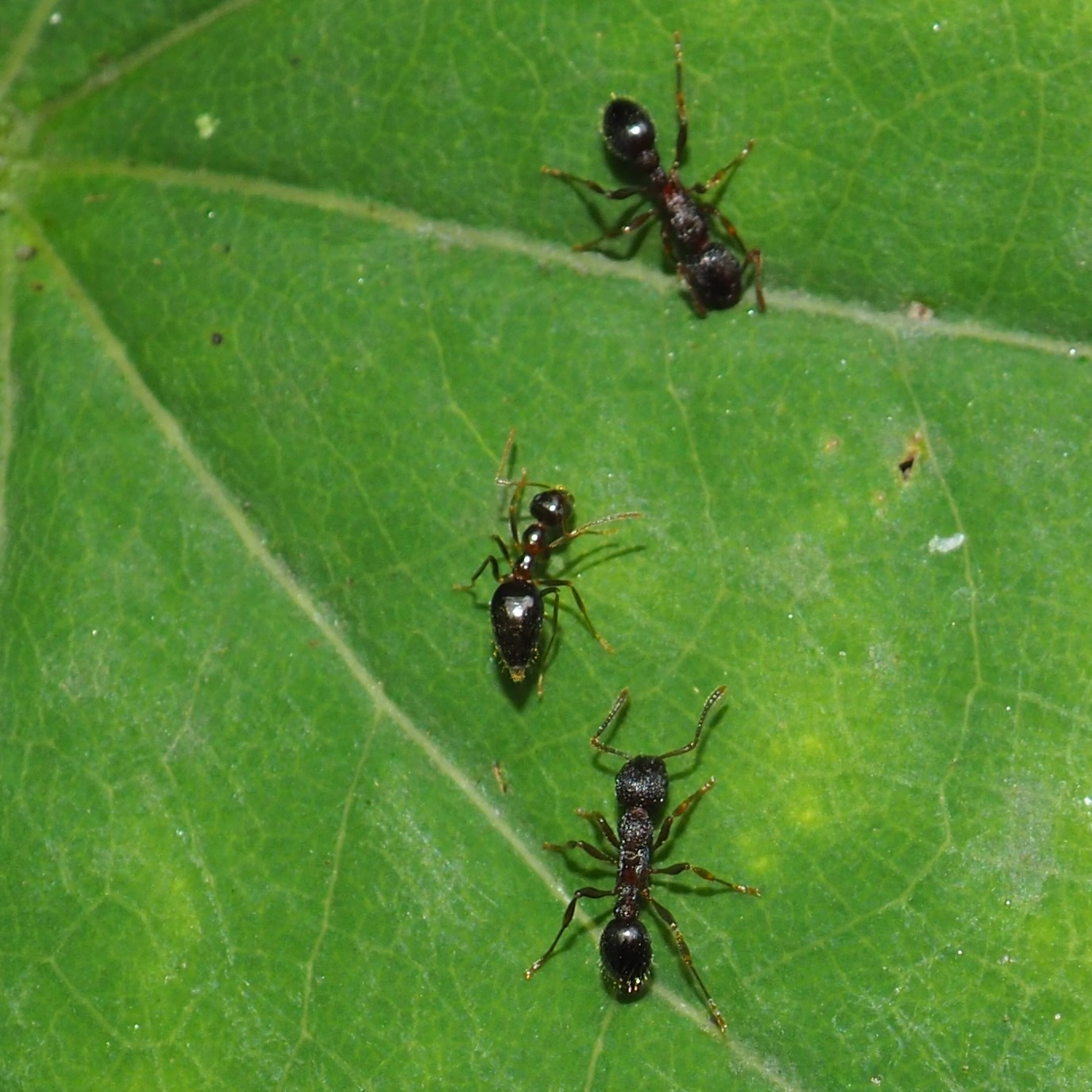
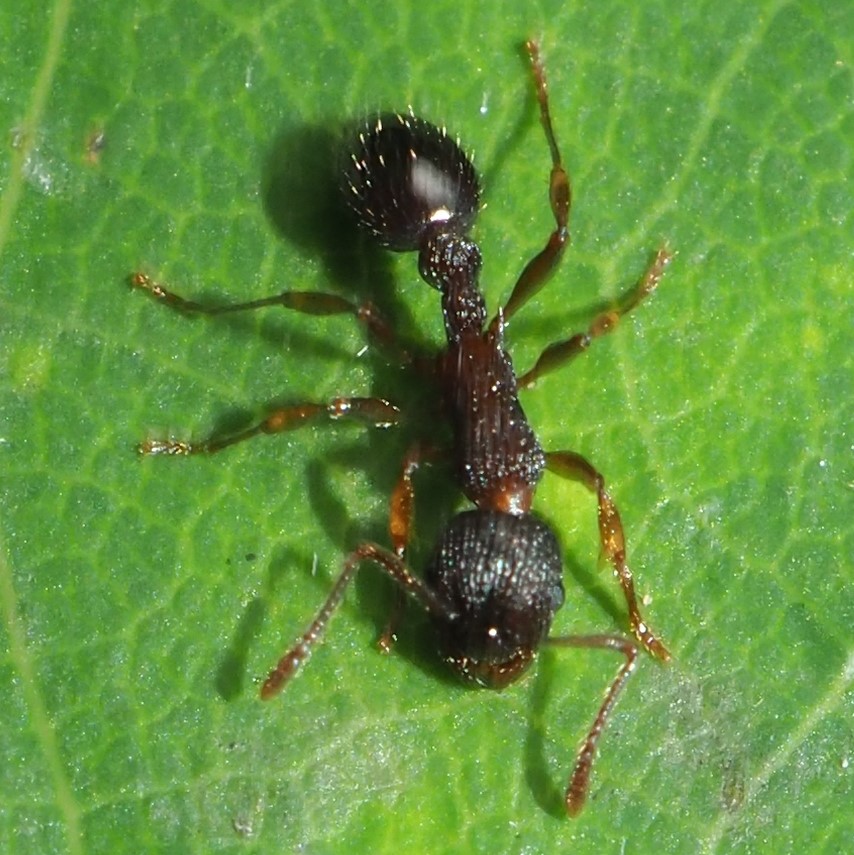
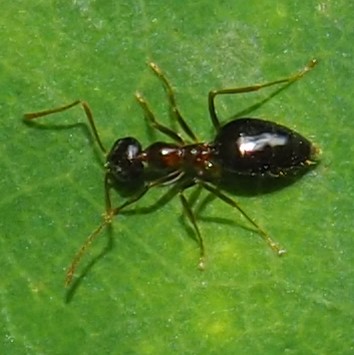
Of course, most of the ants running around on the shop siding are Carpenters of one kind or another. This one is probably a Carpenter or Sugar Ant. But in a shady spot on a Maple leaf in the east end of the garden there was what may be a Winged Ant or may be a kind of Scavenger Fly. Whatever it is, it flaps its wings very rapidly. I now think it is a Scavenger Fly in the genus Sepsis. The eyes gave it away. Look closely.
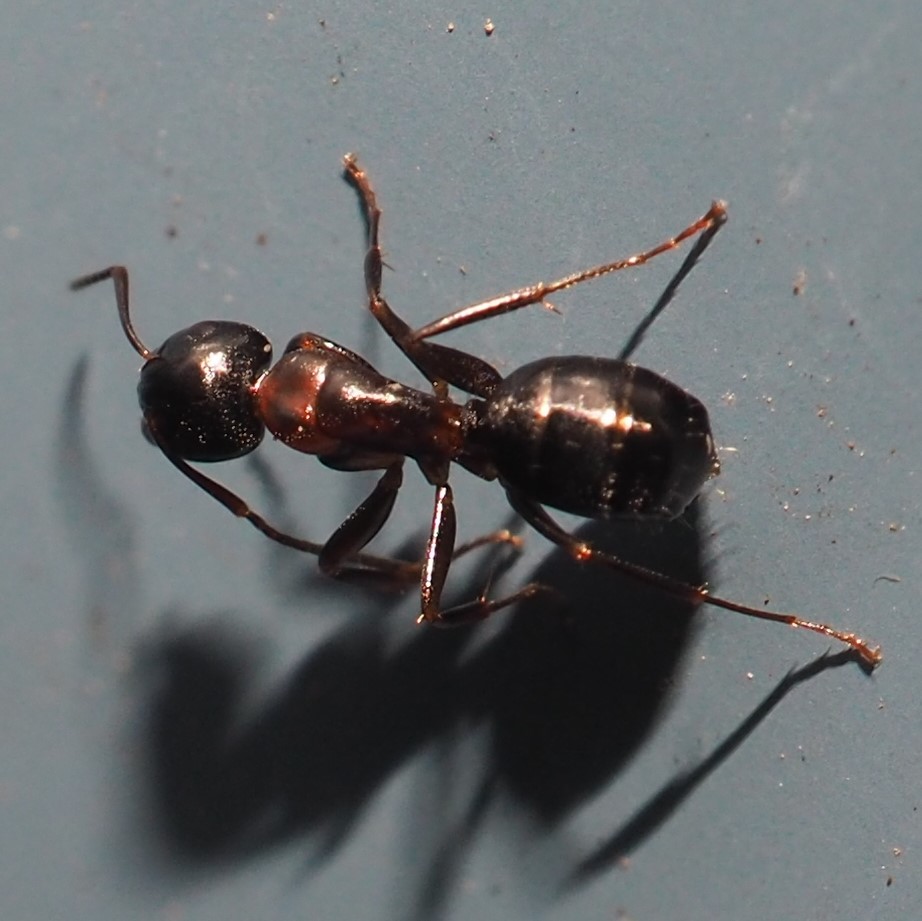
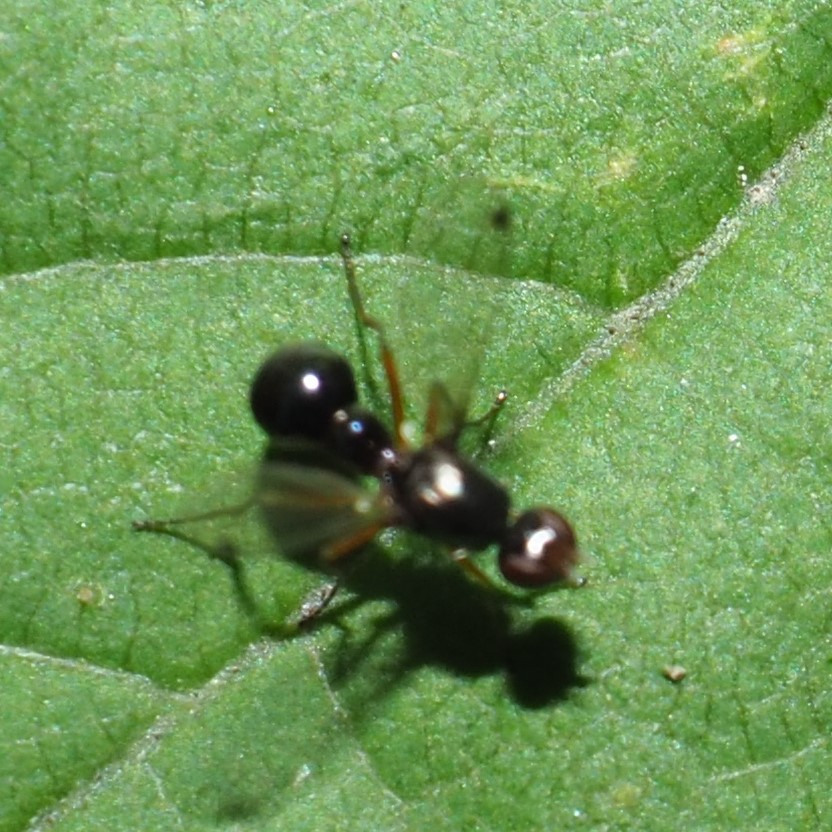

Here is my first Aphid of the year. Second is the barklouse Graphopsocus cruciatus, and third is another, Polypsocus corruptus. Fourth looks like Valenzuela flavidus.
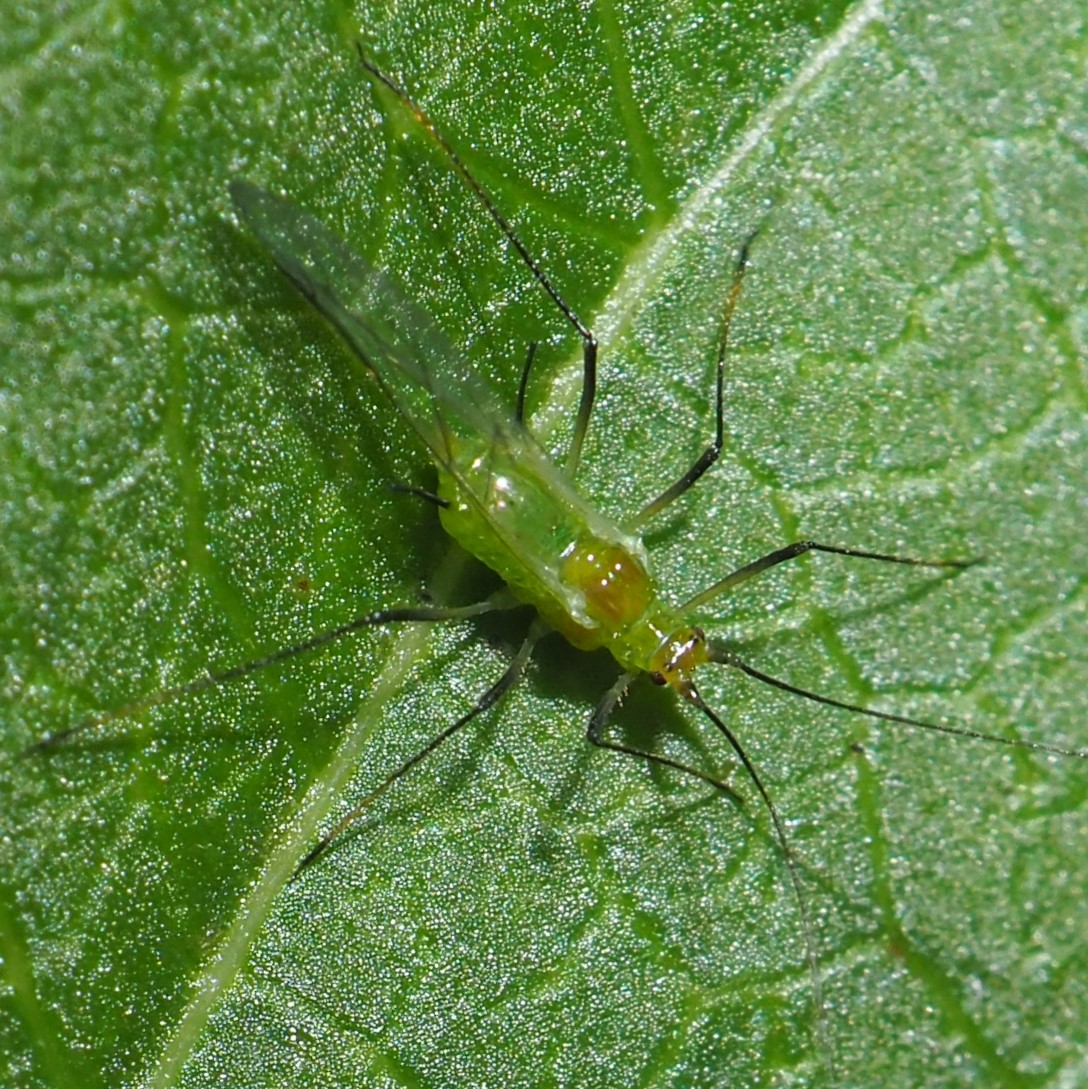
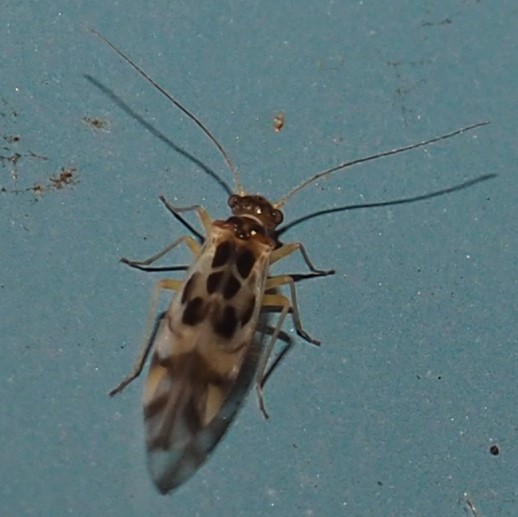
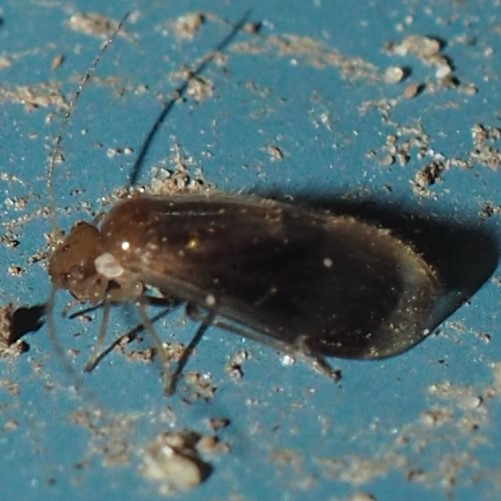
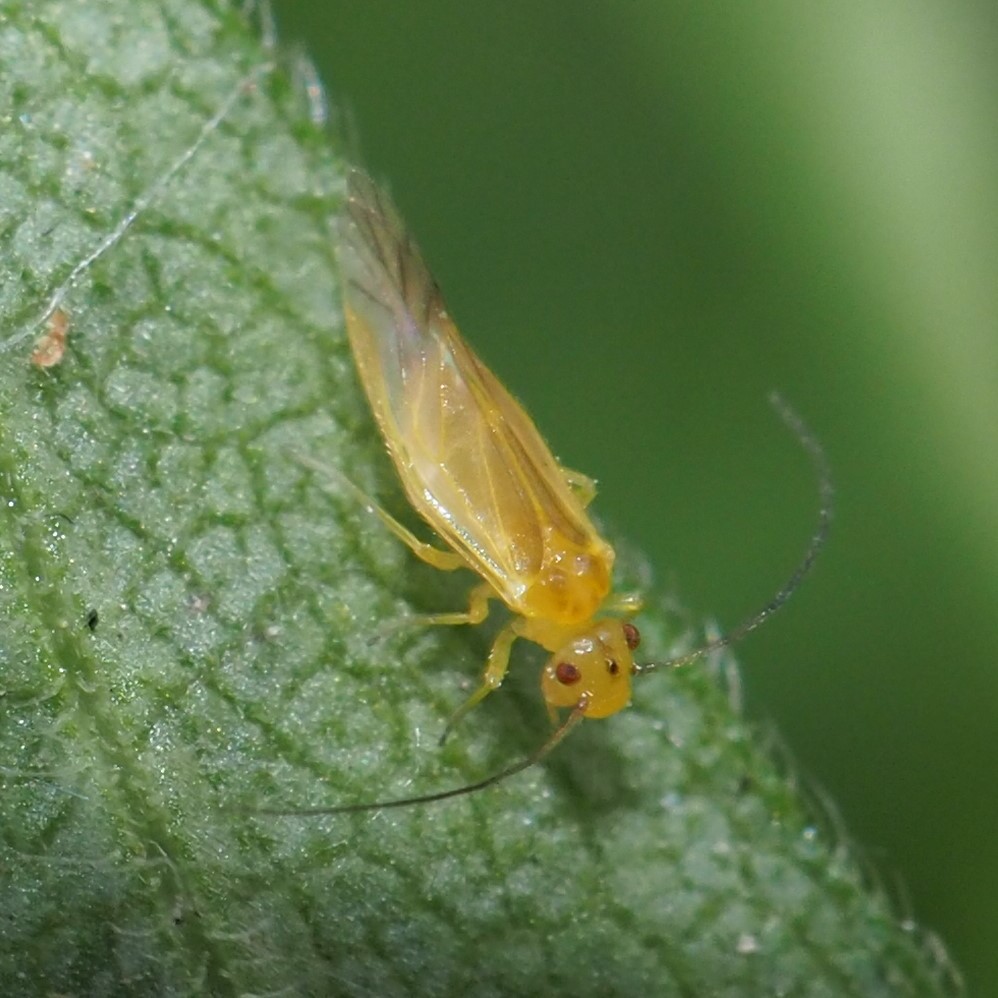
This tiny bee was on a Zinnia yesterday. When you click on the picture, there is something mysterious down near the bottom. Any ideas? Second and third move us into the Beetles, and probably represent a black Flea Beetle.
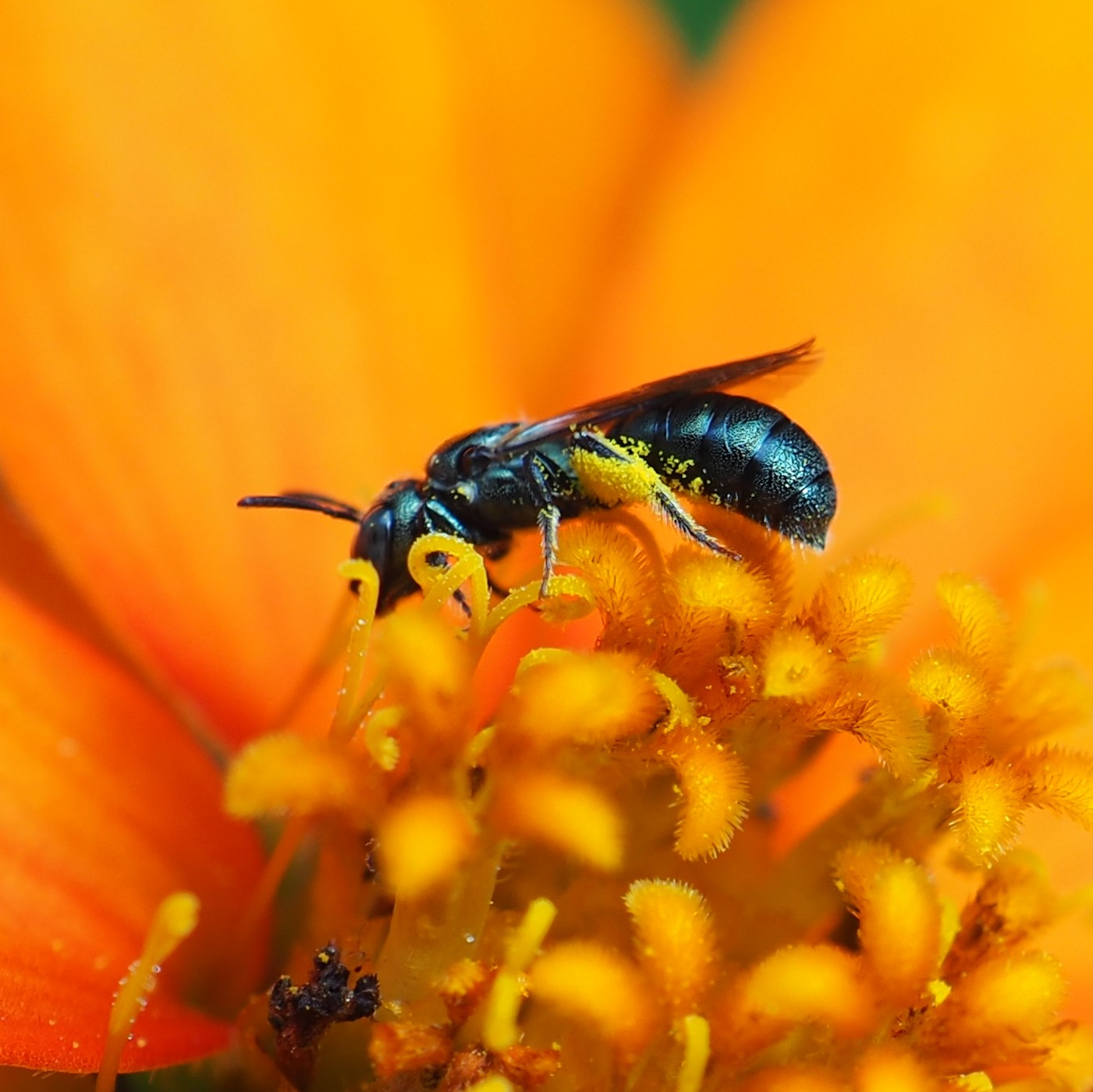
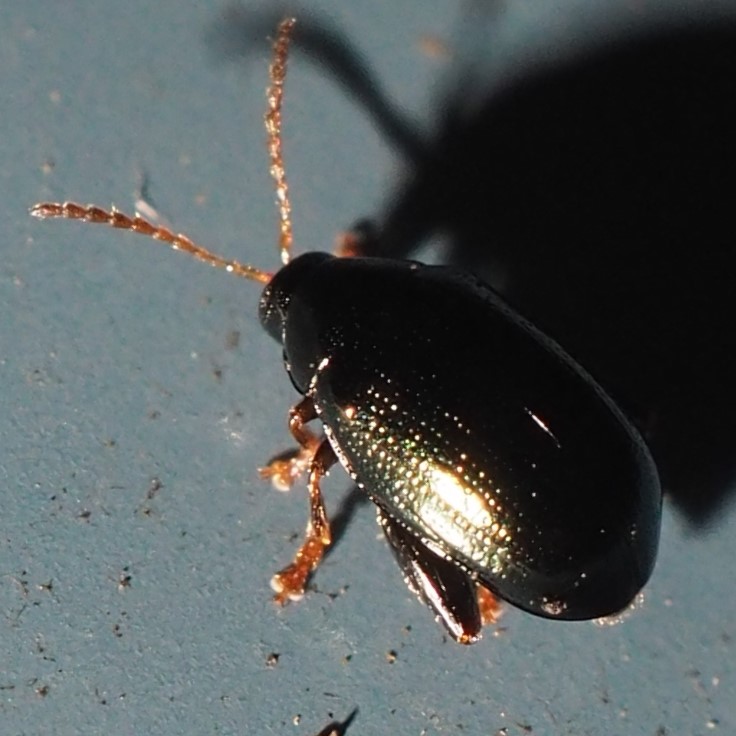
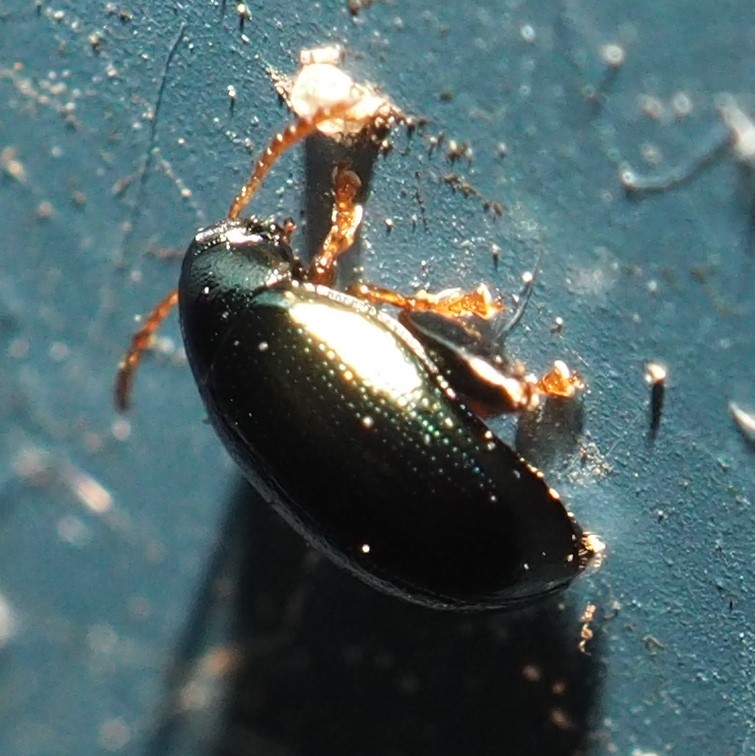
First and second, a Broad-nosed Weevil, a real cutie. Third is a Redbud Bruchid, partially hidden in a shock of golden Goldenrod which just opened in a few places yesterday.
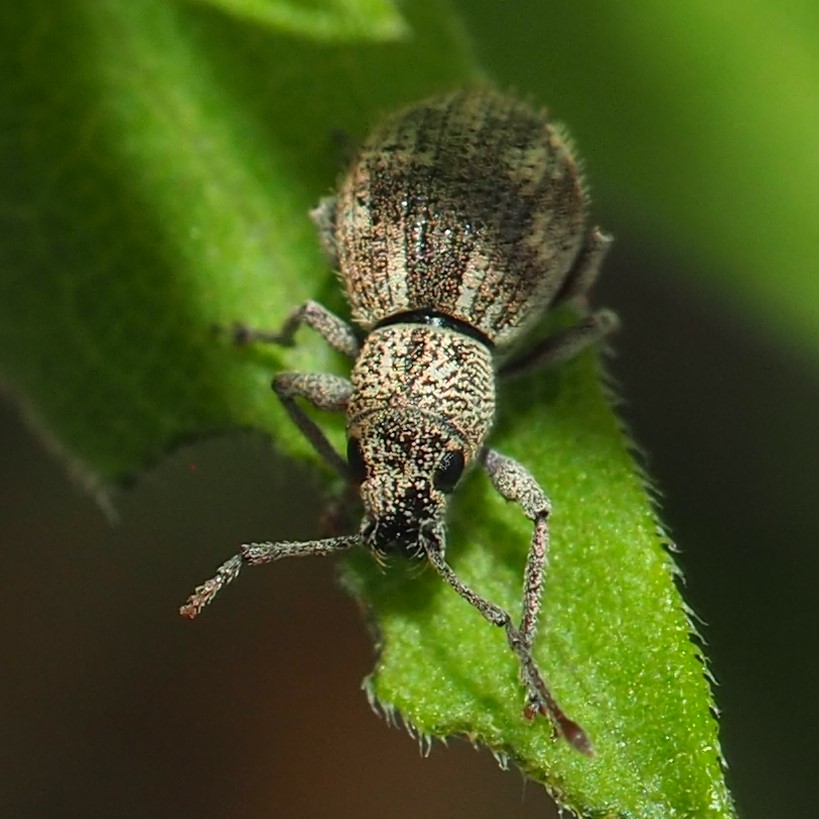
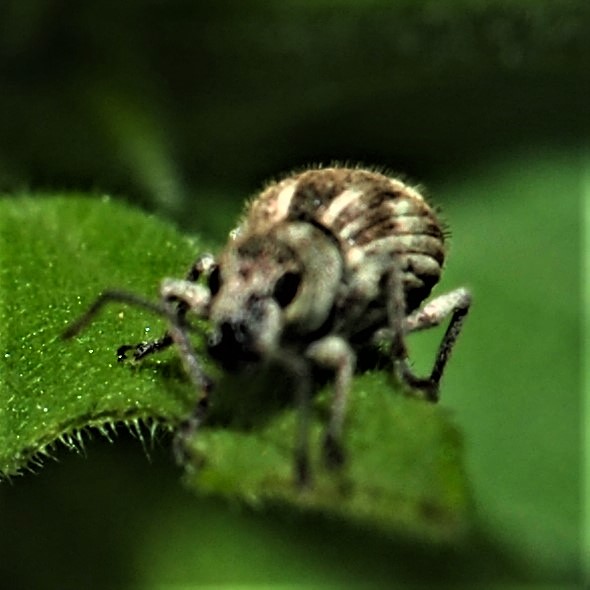
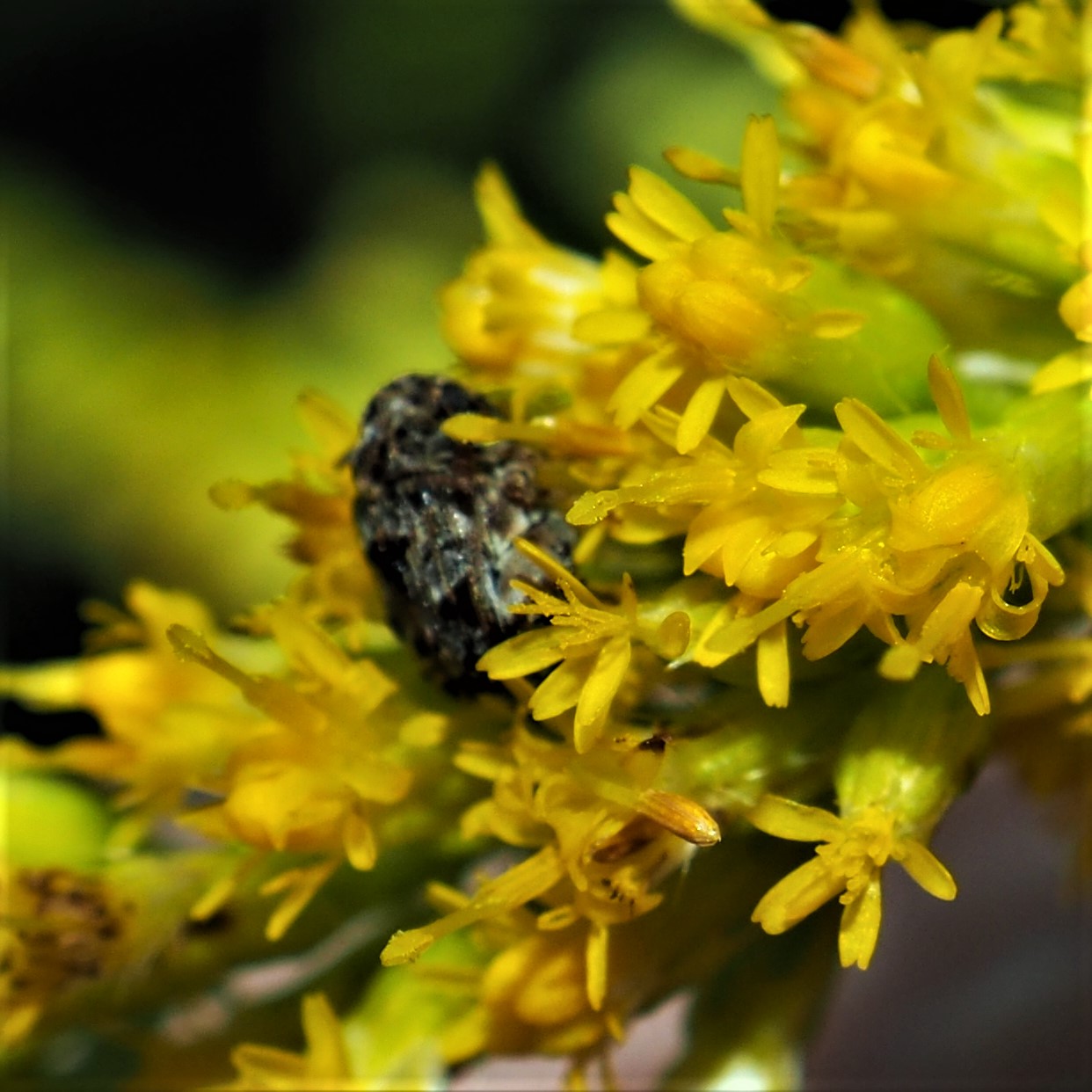
We are now into the Bugs. Let's start with those little jewels, the Leafhoppers. Our old favorite, the Candy-Striped Leafhopper, starts us off. Then one of my other favorites, the oft-seen Erasmoneura vulnerata. Then one of its relatives, in the genus Eratoneura, the yellow-patterned variety.
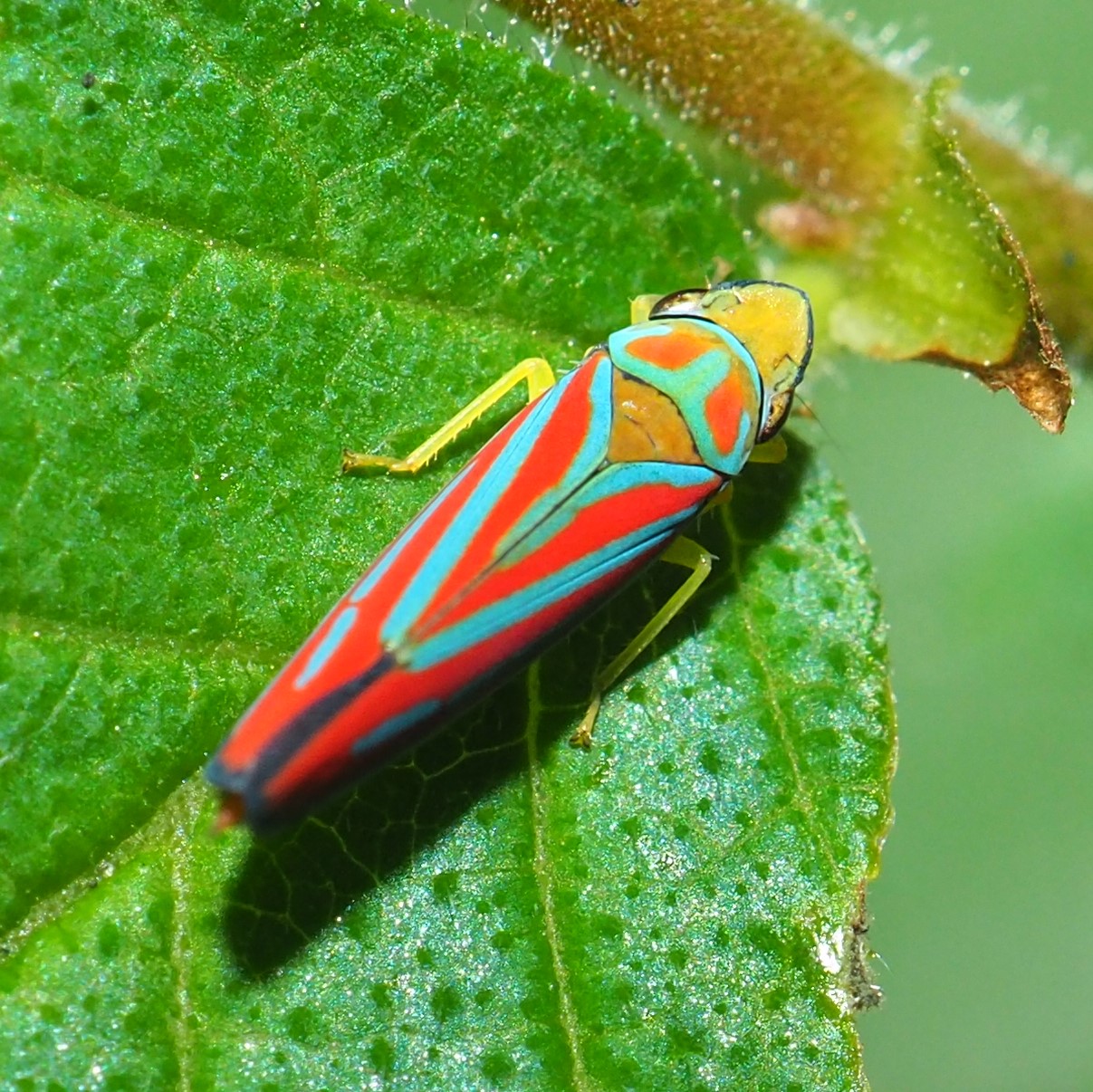
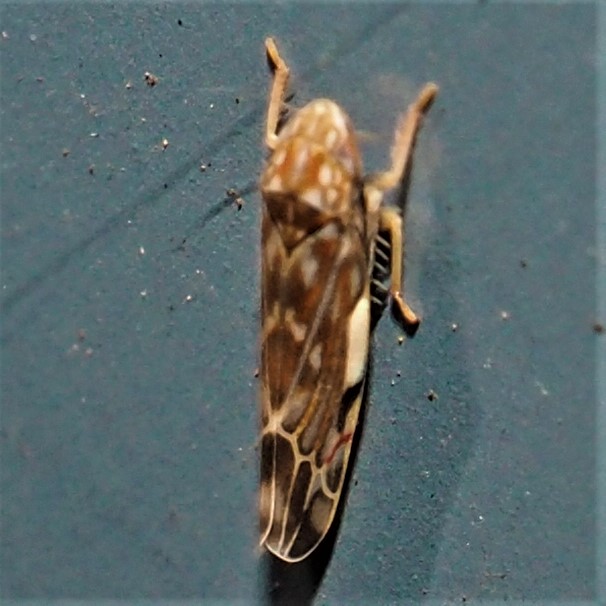
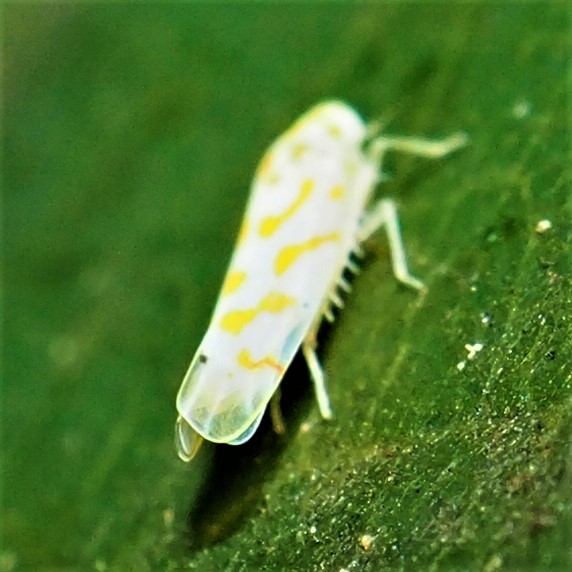
Here is a new Leafhopper. It looks a bit like one of the Scaphoideus - and it is - S. obtusus. Second is Jikradia olitoria, the adult form of the cute little curly-backed nymphs. Third is probably a Meadow Spittlebug. Fourth is one of the translucent Leafhoppers, probably of genus Graphocephala, peeking at us from behind a stem. That's seven kinds of Leafhopper for this week!
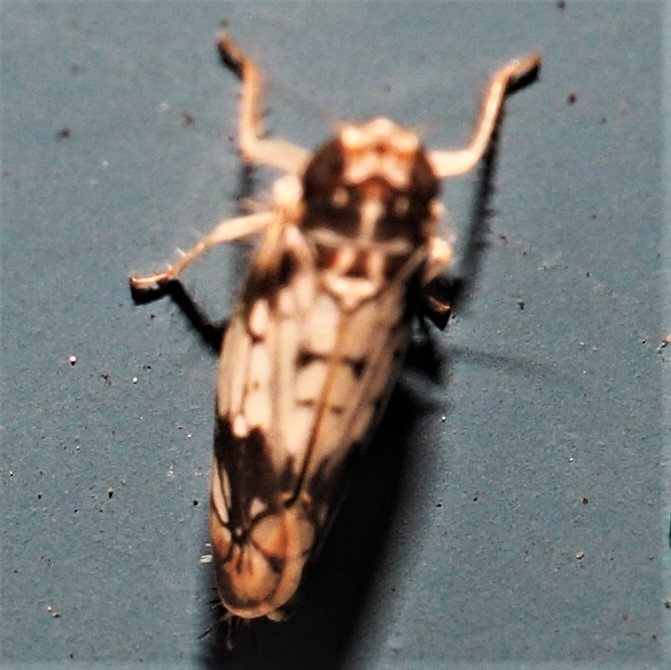
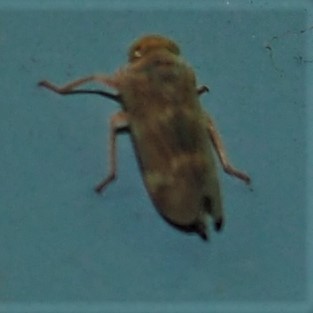
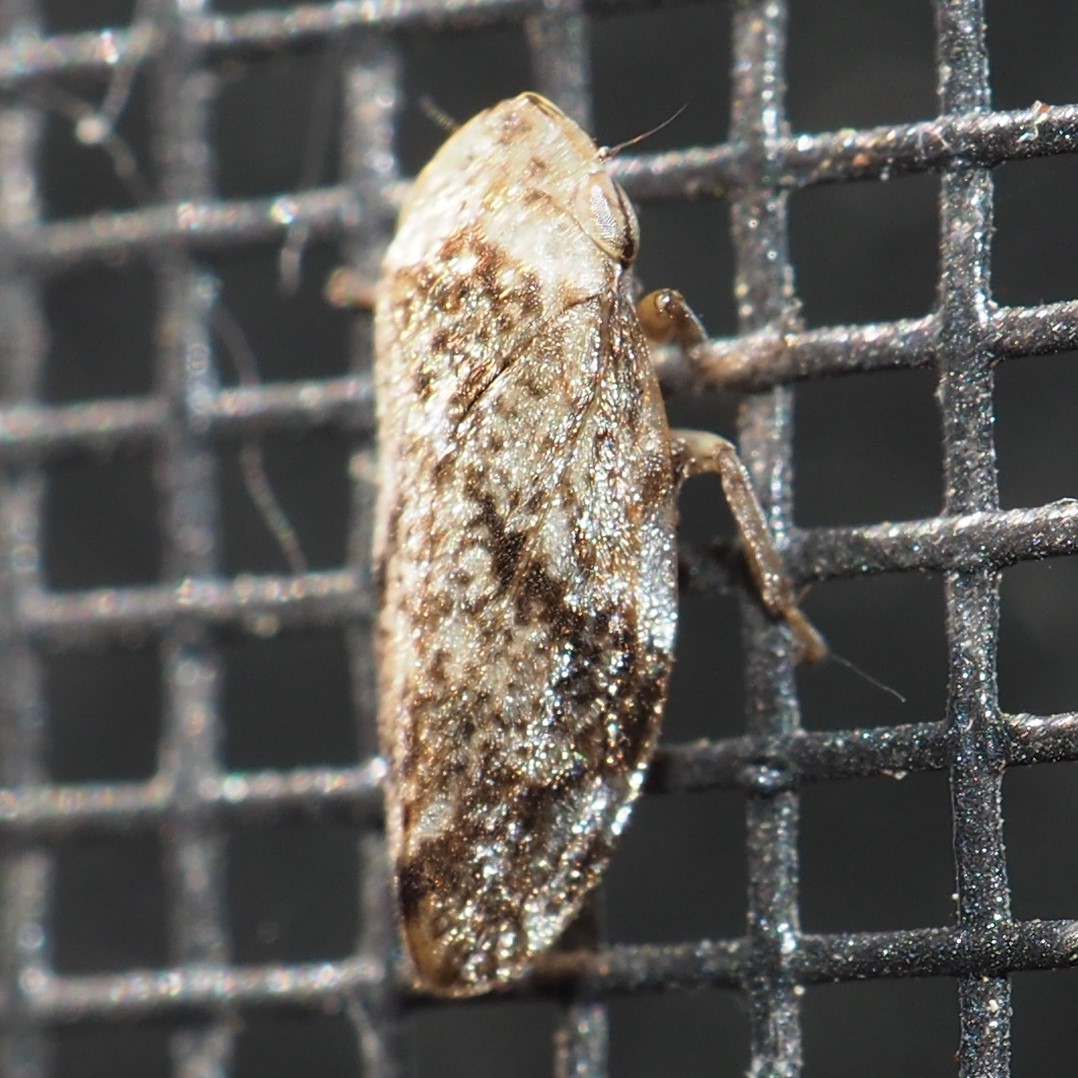
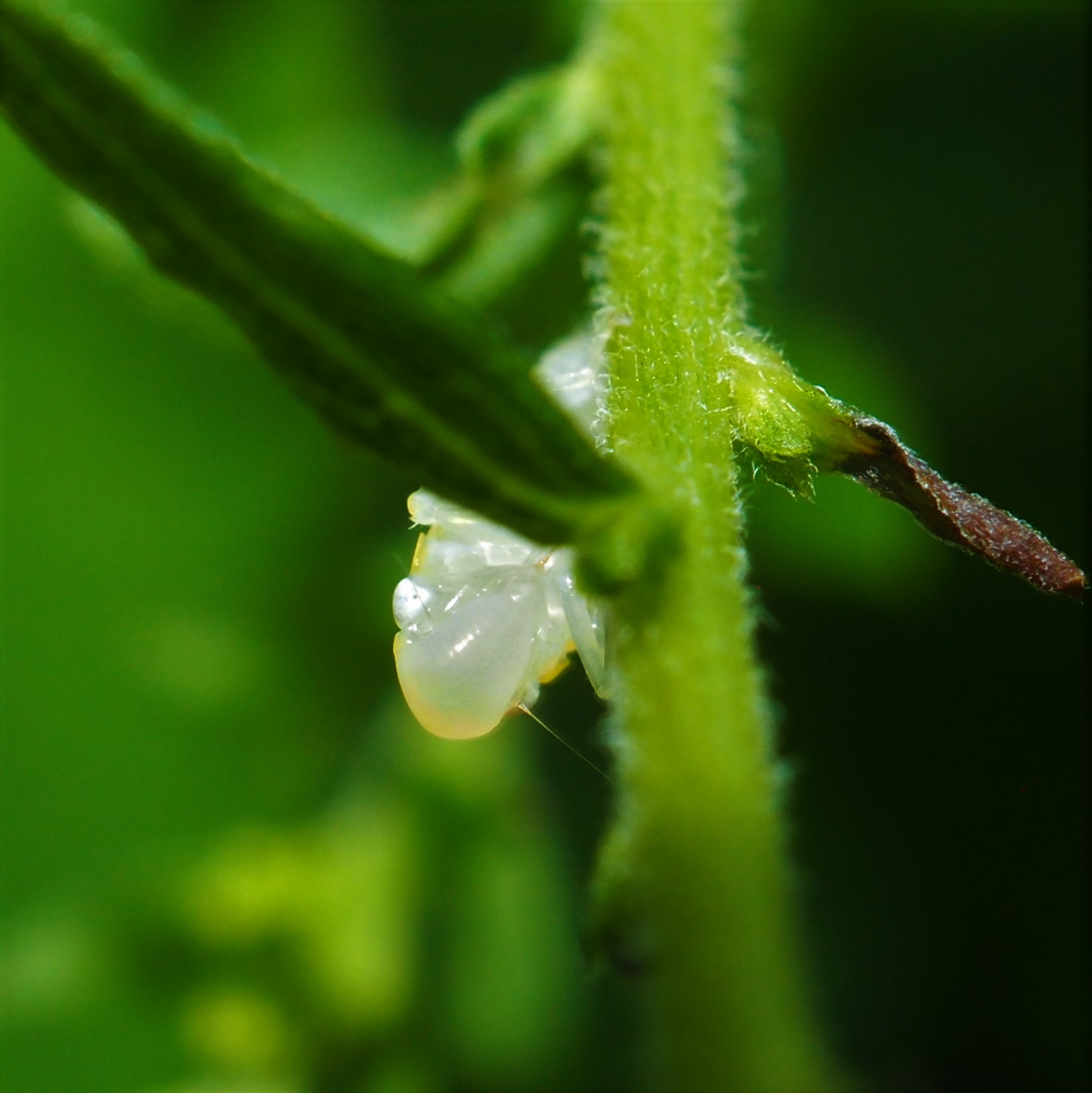
There were baby Assassin Bugs (Zelus luridus) all over the place this past week. But today was the first time in a year that I've seen an Ambush Bug. Look at the murderous front claws on this one (number 2). If you think you've seen this bug somewhere lately, you have - about a month ago - it's the adult form of that Ant Mimic, Paraxenetus guttulatus.
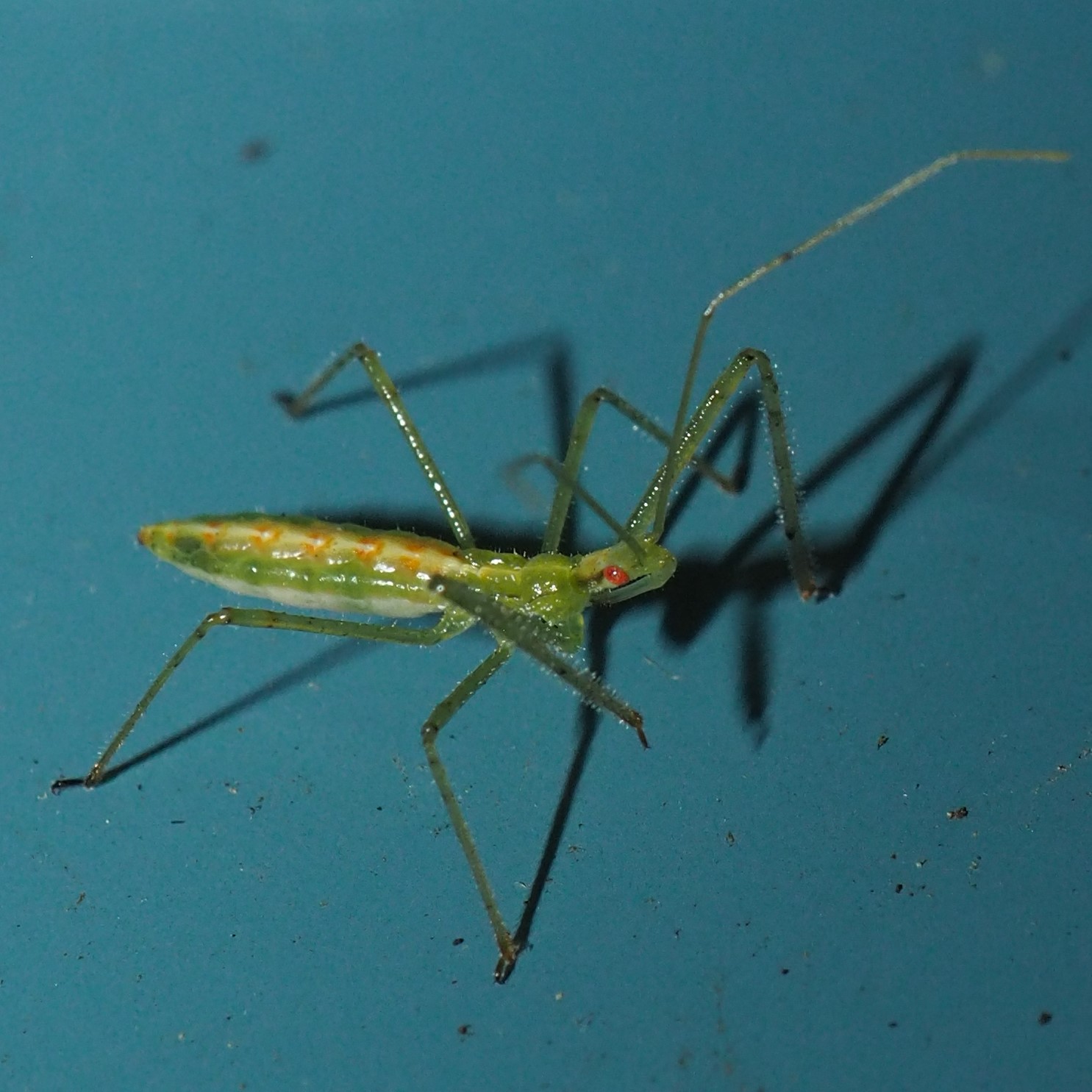
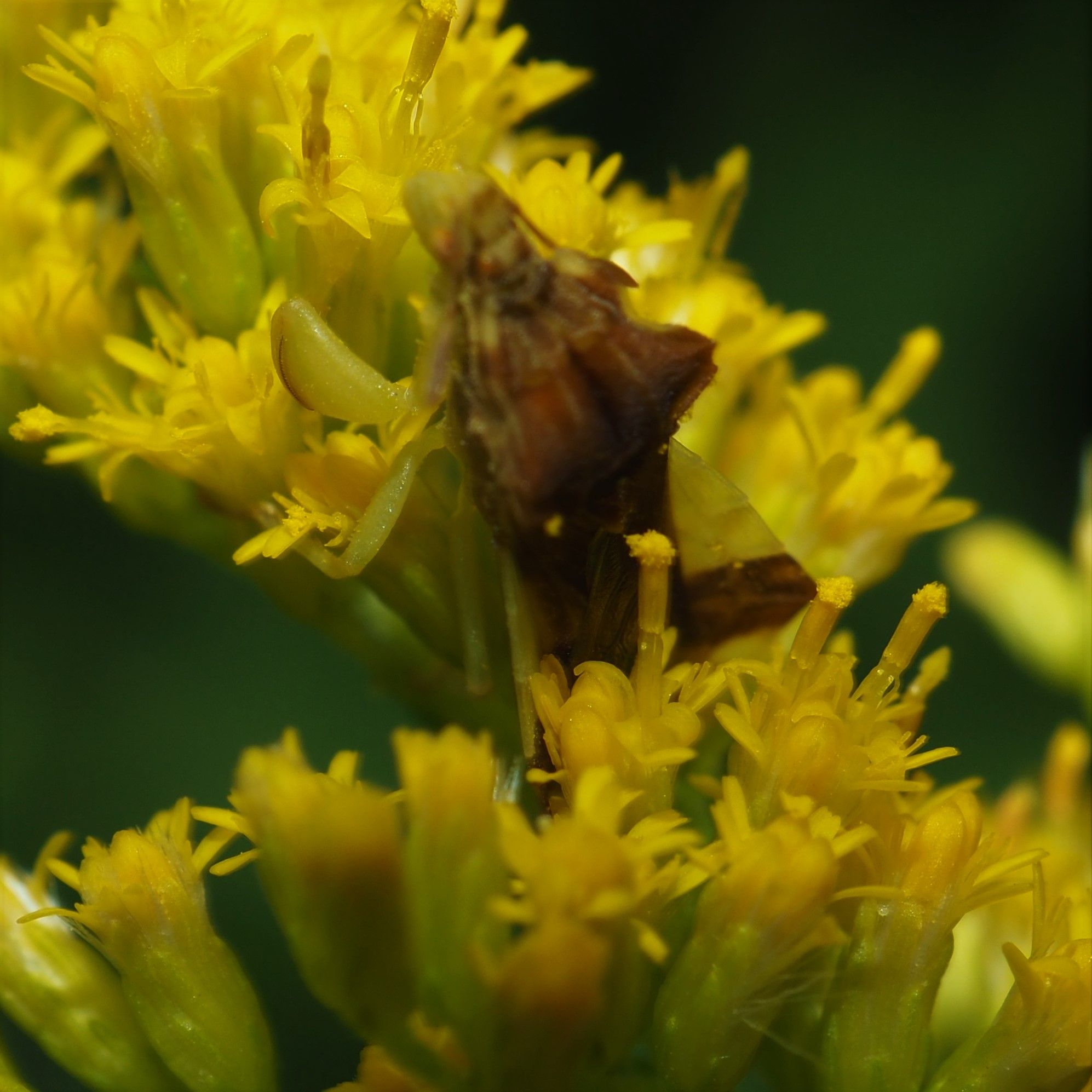
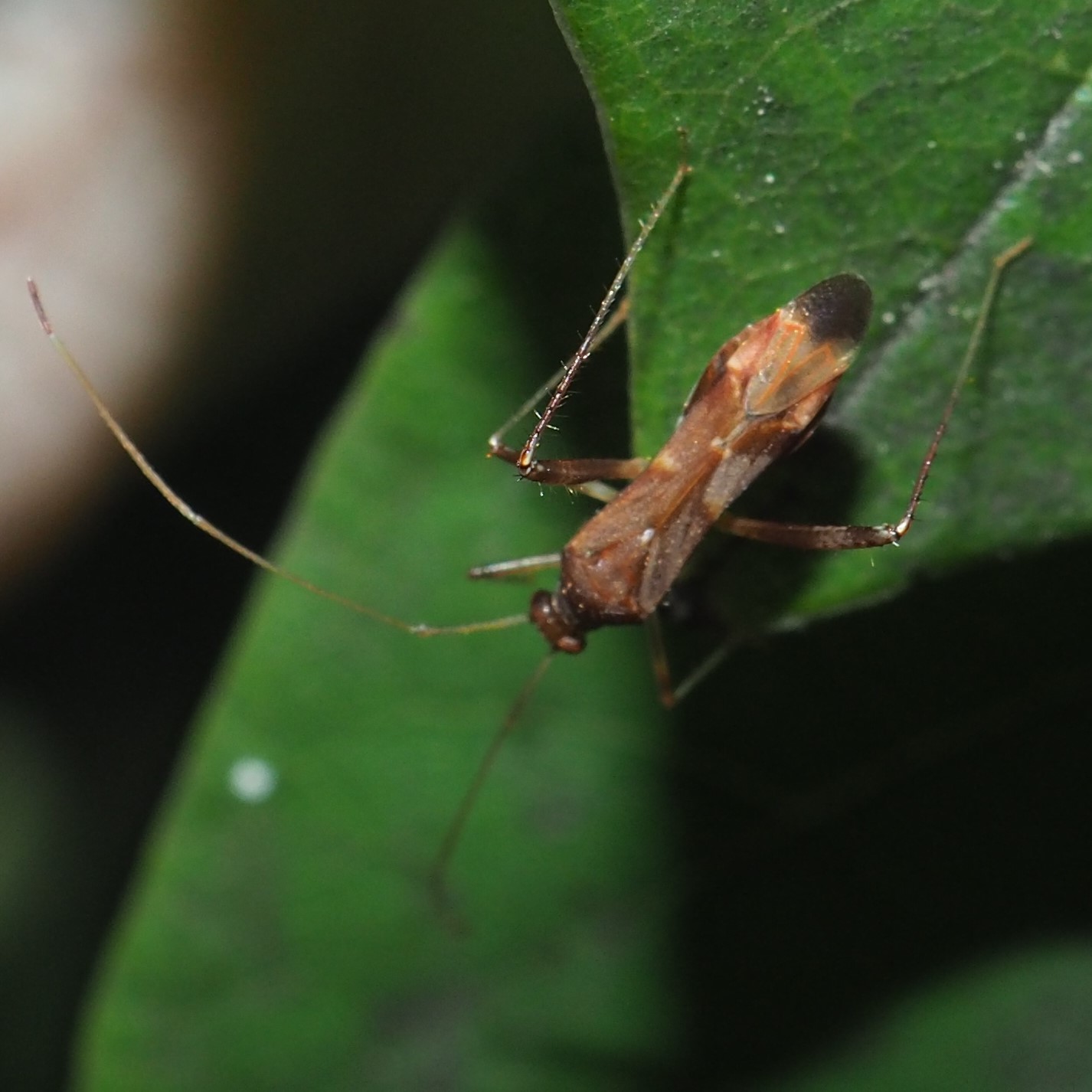
This bug is actually quite small and was seen patrolling the shop siding. That Seed Bug, Oedancala dorsalis, was out there again for the third week in a row. And this pretty little Stink Bug, Dendrocoris humeralis, was all over the place this week.
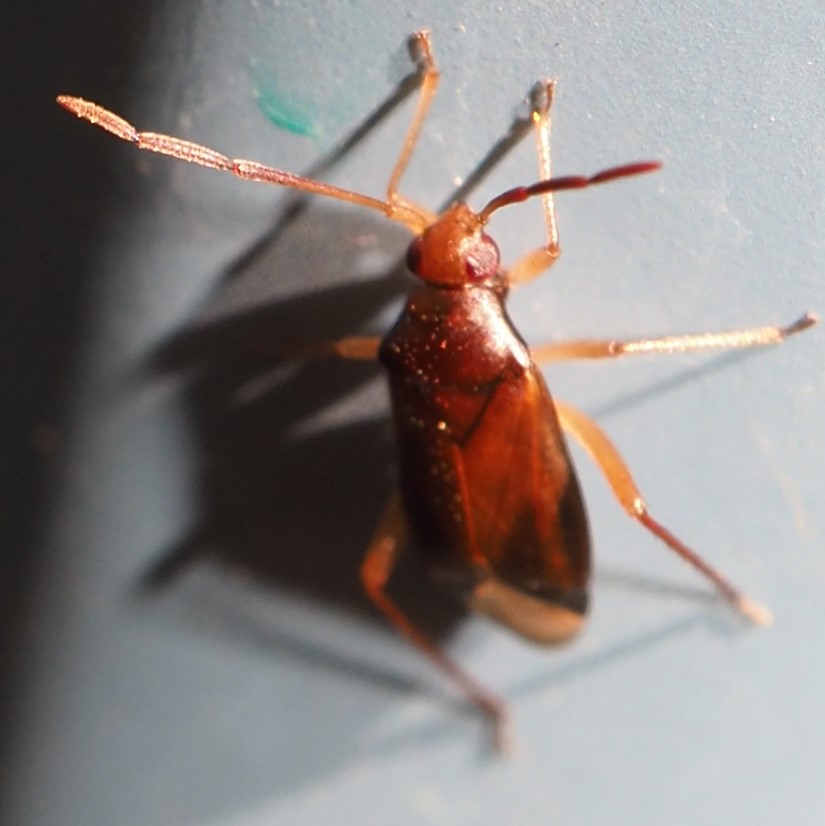
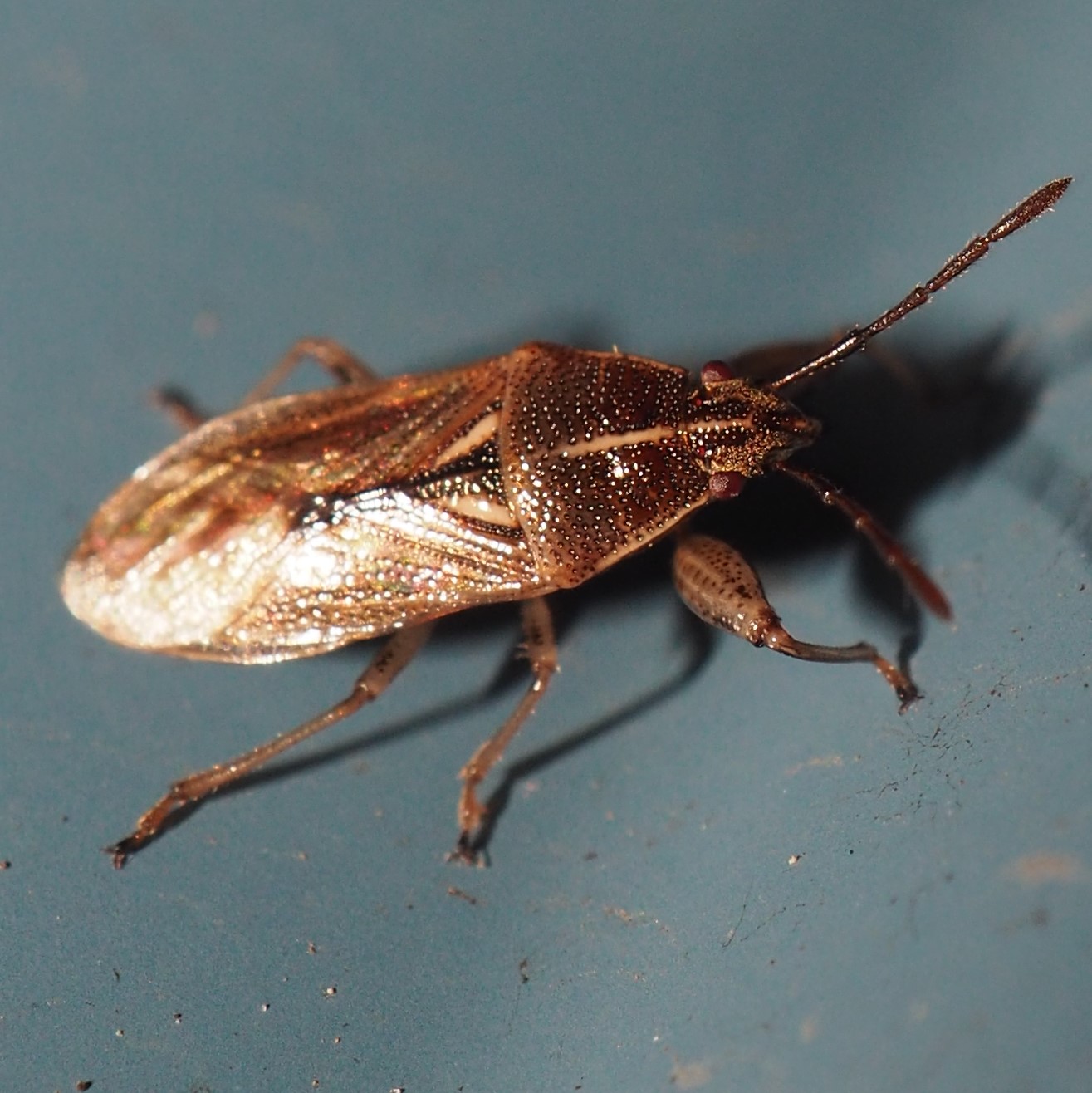
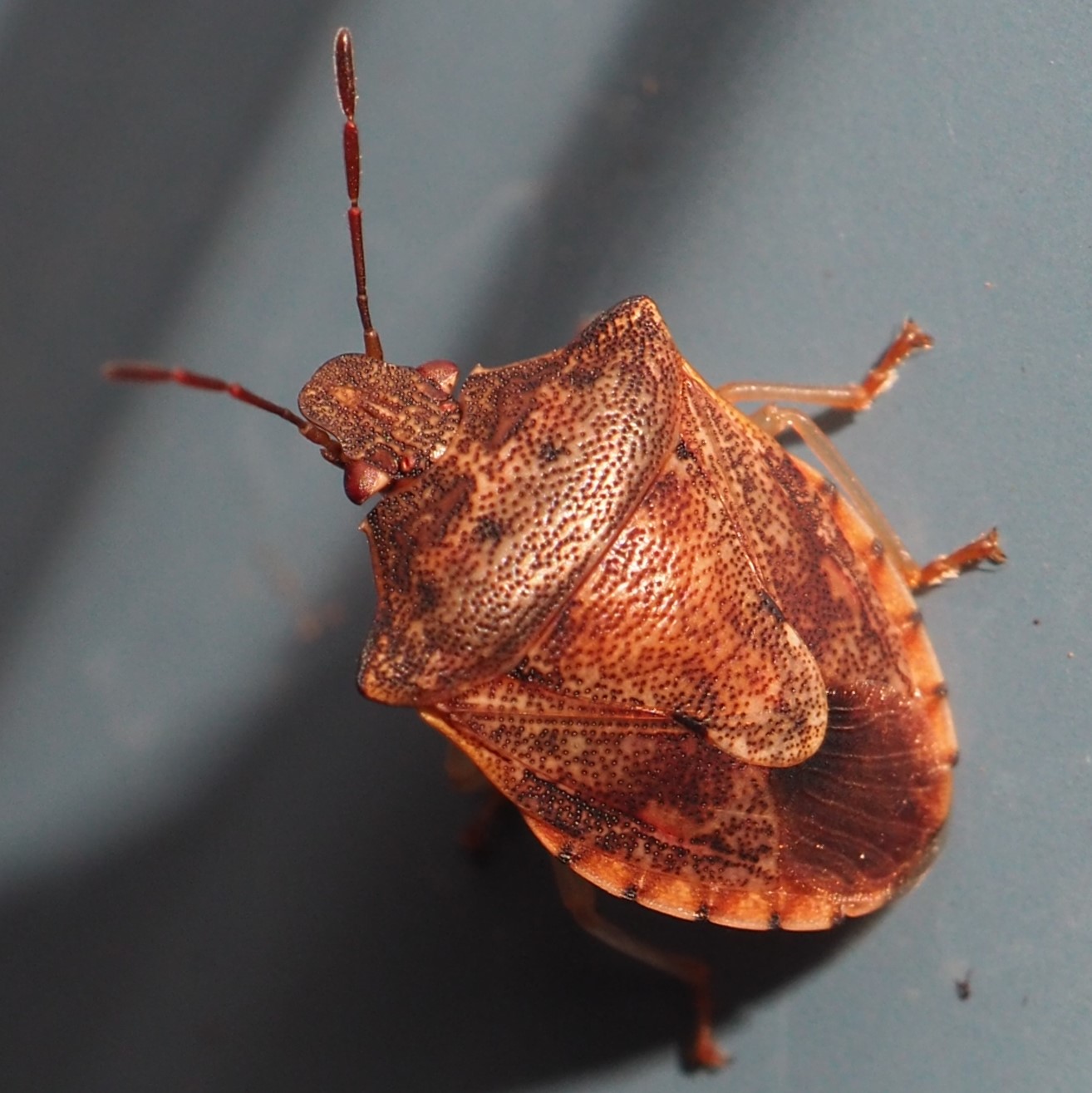
After all that news about the Two-mark Treehopper last week, I didn't see a single adult this week. But I did see some eggs. One of the ones in this set looks sort of as if it has been hatched out. Or it has suffered some wear and tear during those storms. There are still some Keeled Treehoppers in the Thistles, even though the Thistles have been ravaged by Four-Stripe Plant Bugs. I also bagged a Northern Dog Day Cicada that had died on the front step to the house.
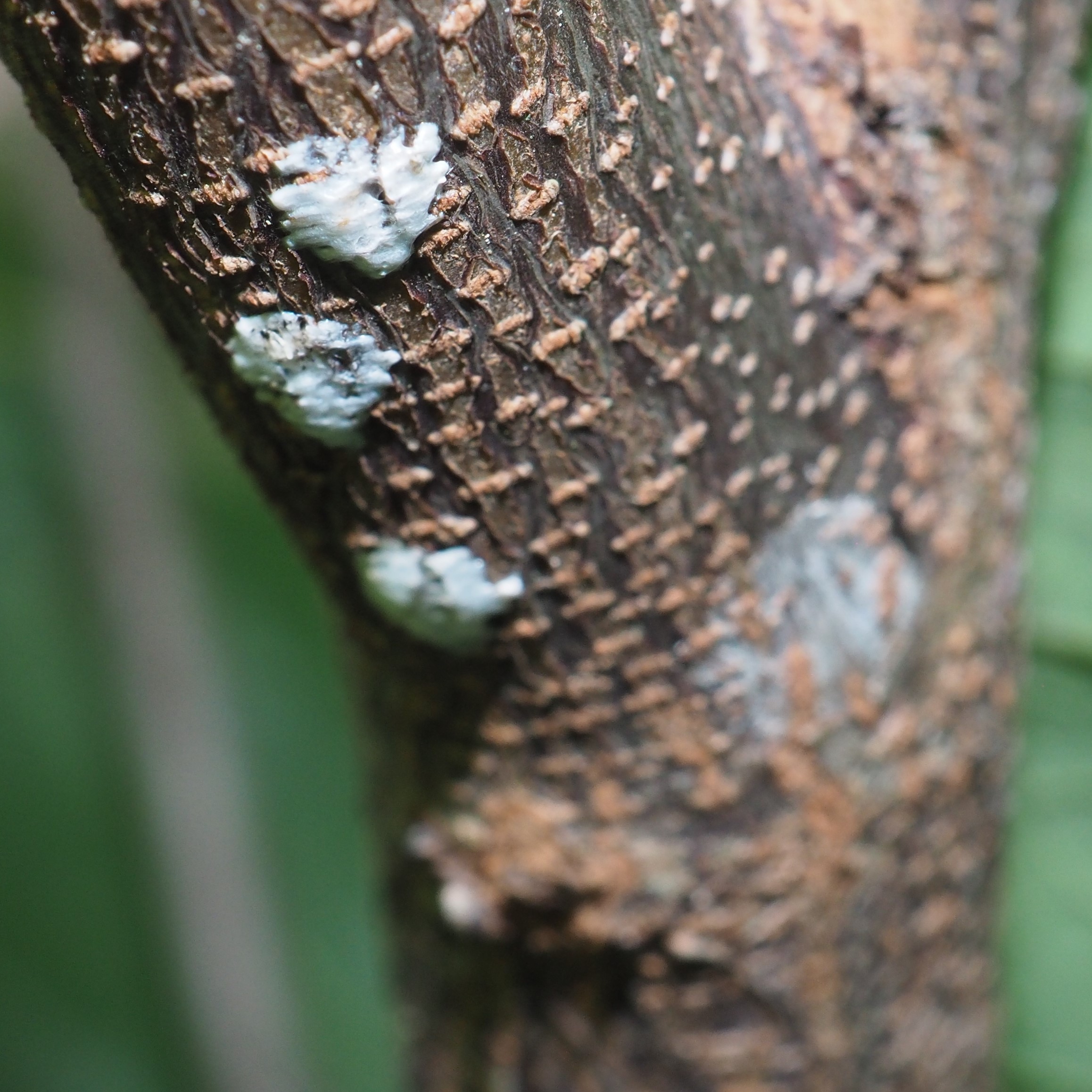
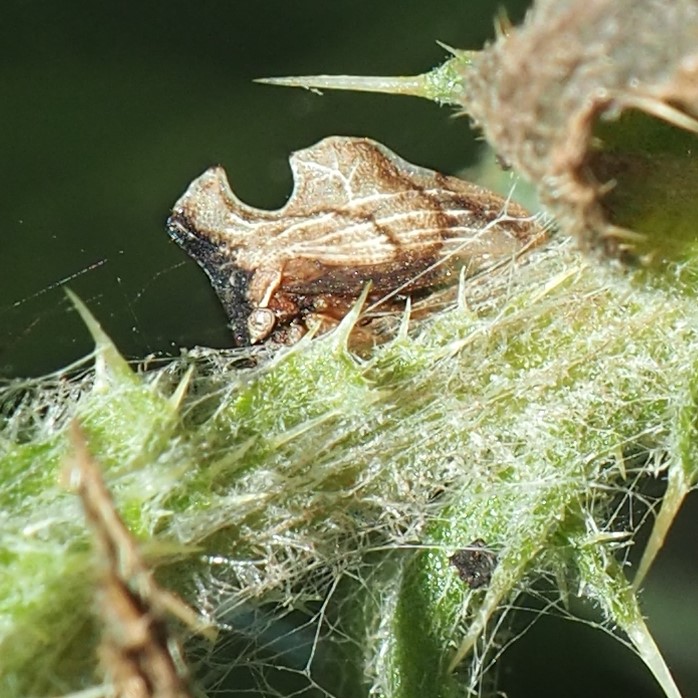
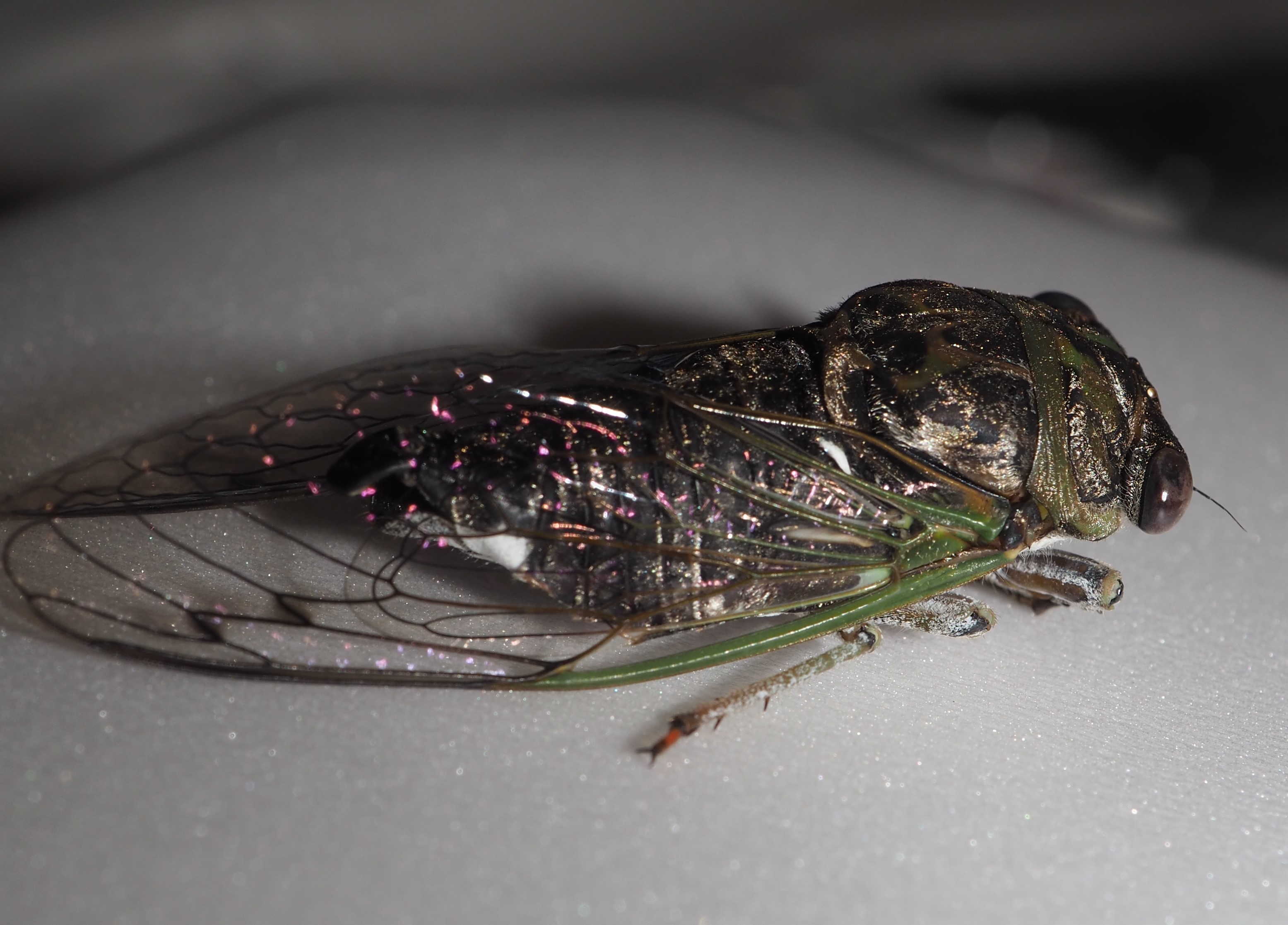
Today I was sitting by the pond when a Red-Spotted Purple Butterfly landed about 6 feet away. They are so skittish that I took a few pictures from where I was. Next are two Moths: one identified by iNat's ID App as the Double-striped Scoparia Moth,
Scoparia biplagialis; and the other not identified. There are so many that look just like this one.
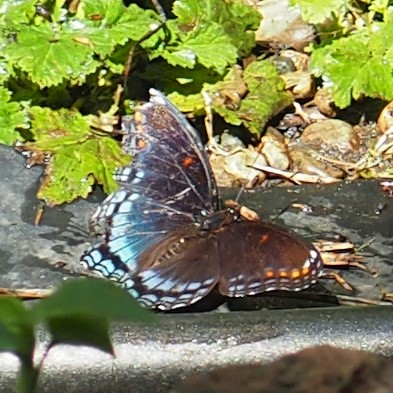
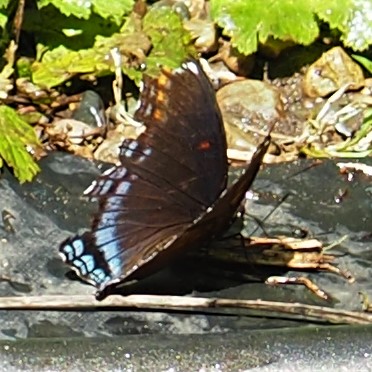
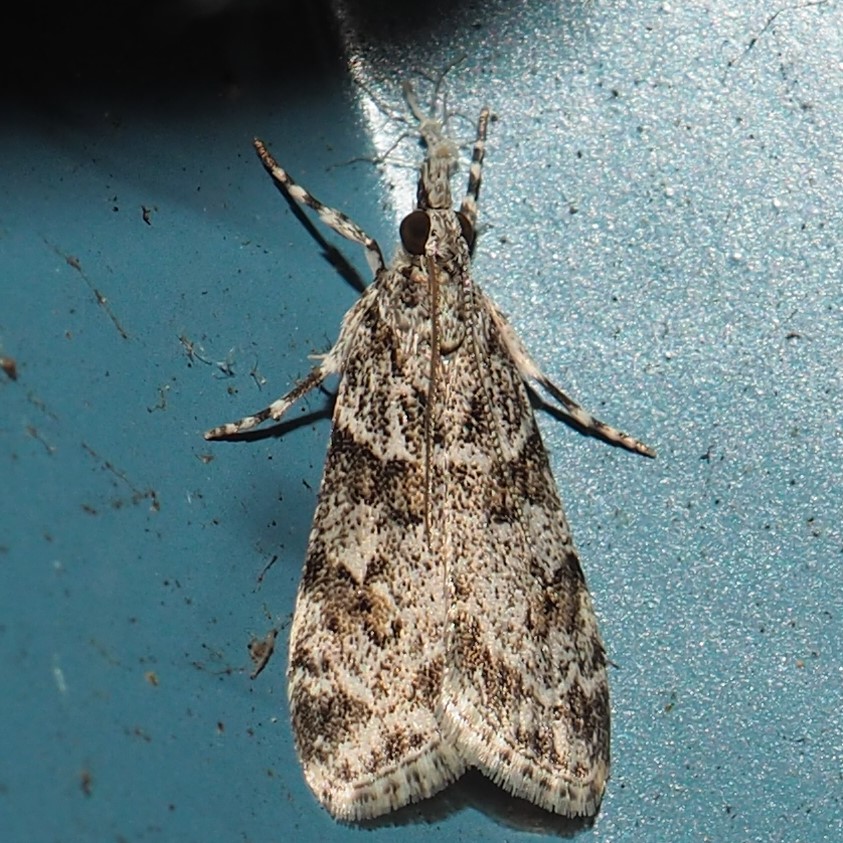
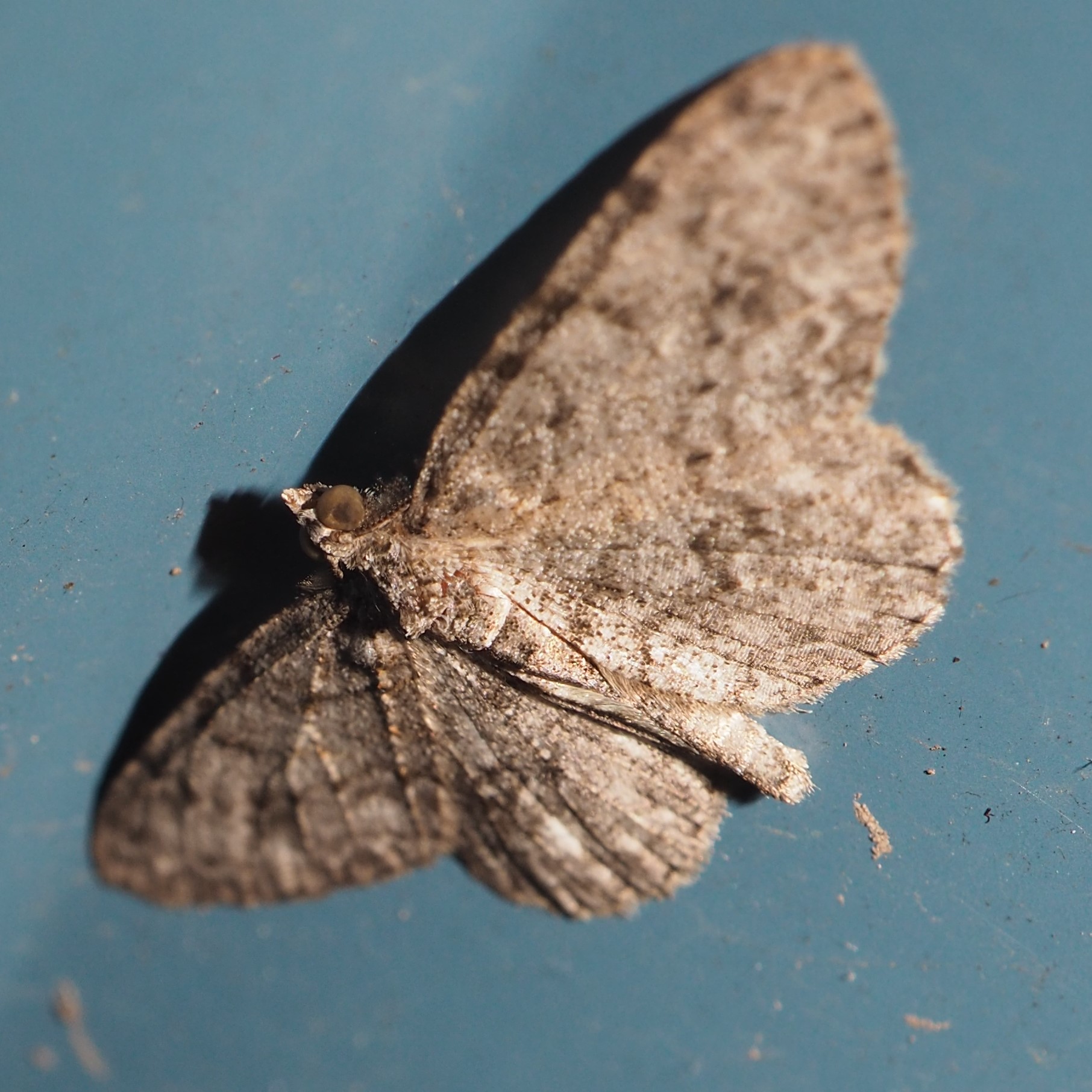
This first one, the Norway Maple Pigmy Moth (makes sense since we have so many Norway Maples), is quite common here. I've never seen the second one, but the third one (showing itself off now that the Goldenrod is out to show off against) is also common. This tiny looper fell onto me from a tree, I think.
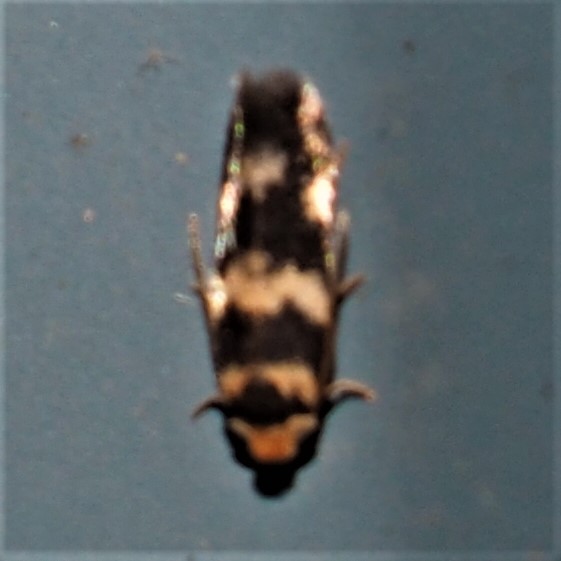
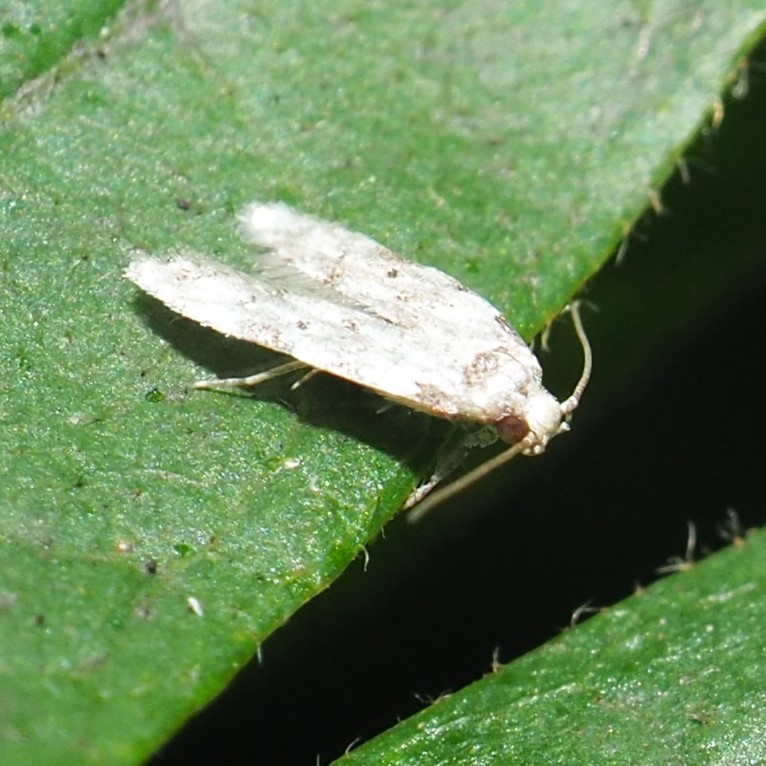
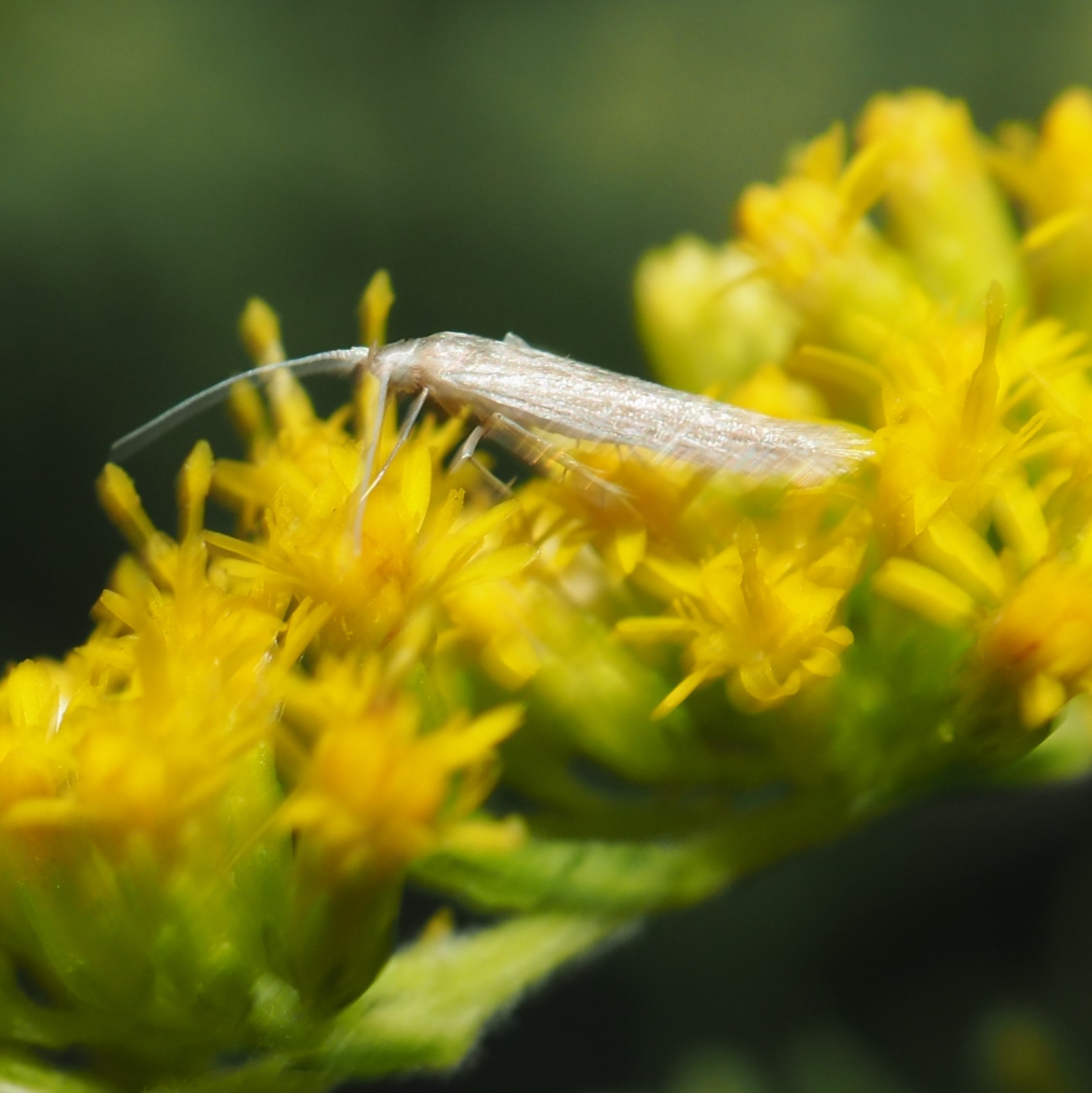

That little cricket we saw last week was still in the same place throughout the week. It turned out to be a Pine Tree Cricket. I think it likes that tall old Blue Spruce that drops things on top of the shop. It was very patient and finally rewarded me with a cool head shot (number 3). Yesterday this grasshopper suddenly jumped and showed itself right next to me!
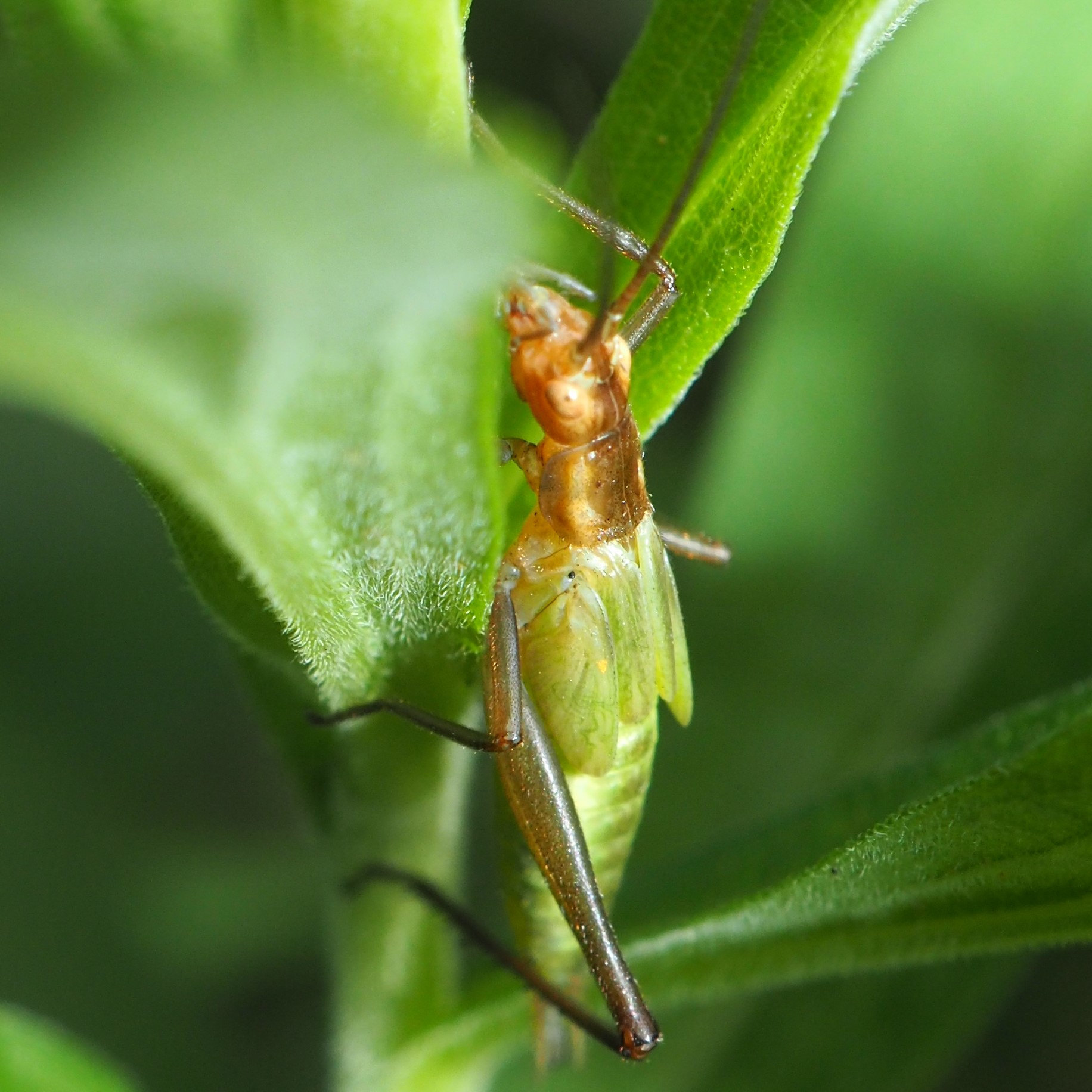

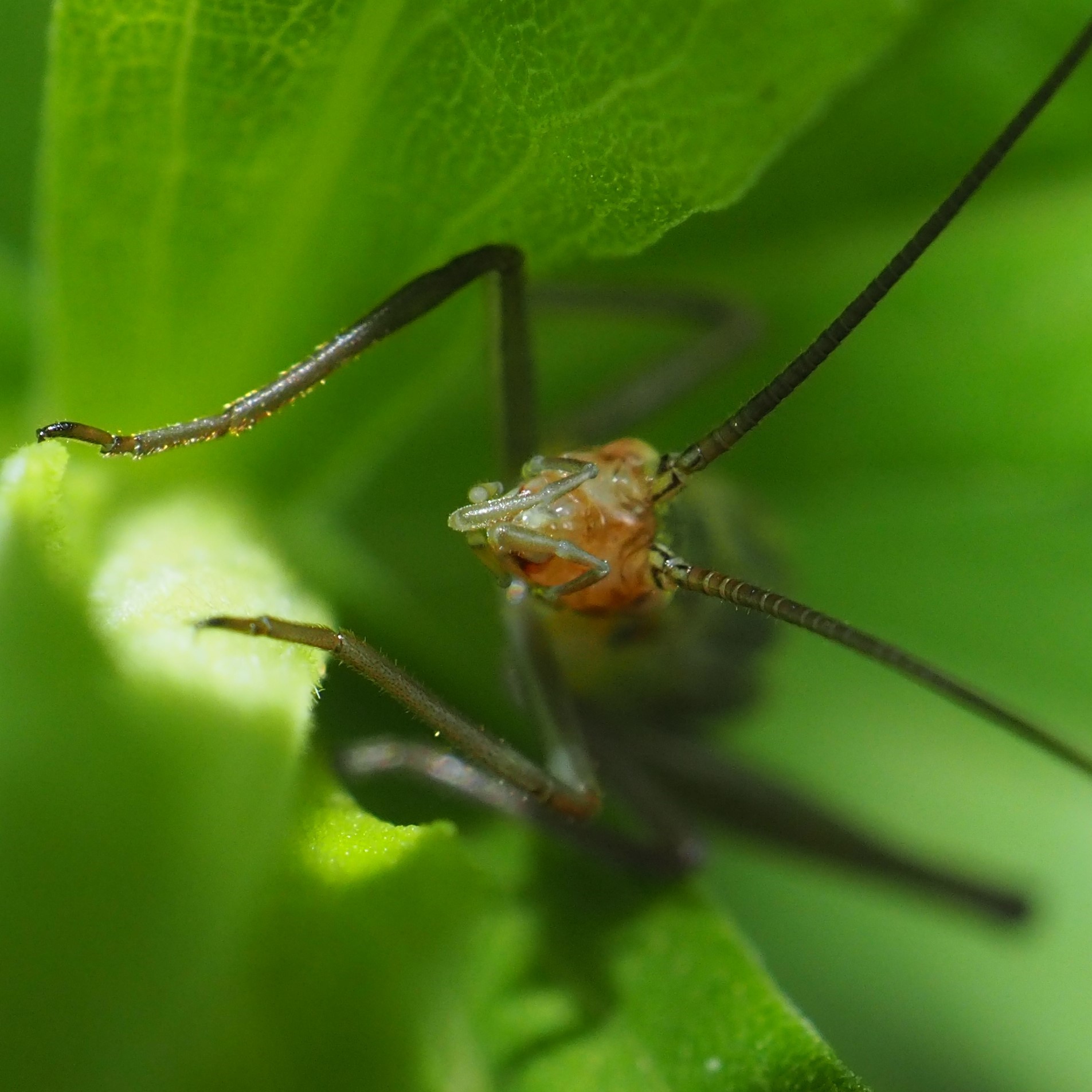
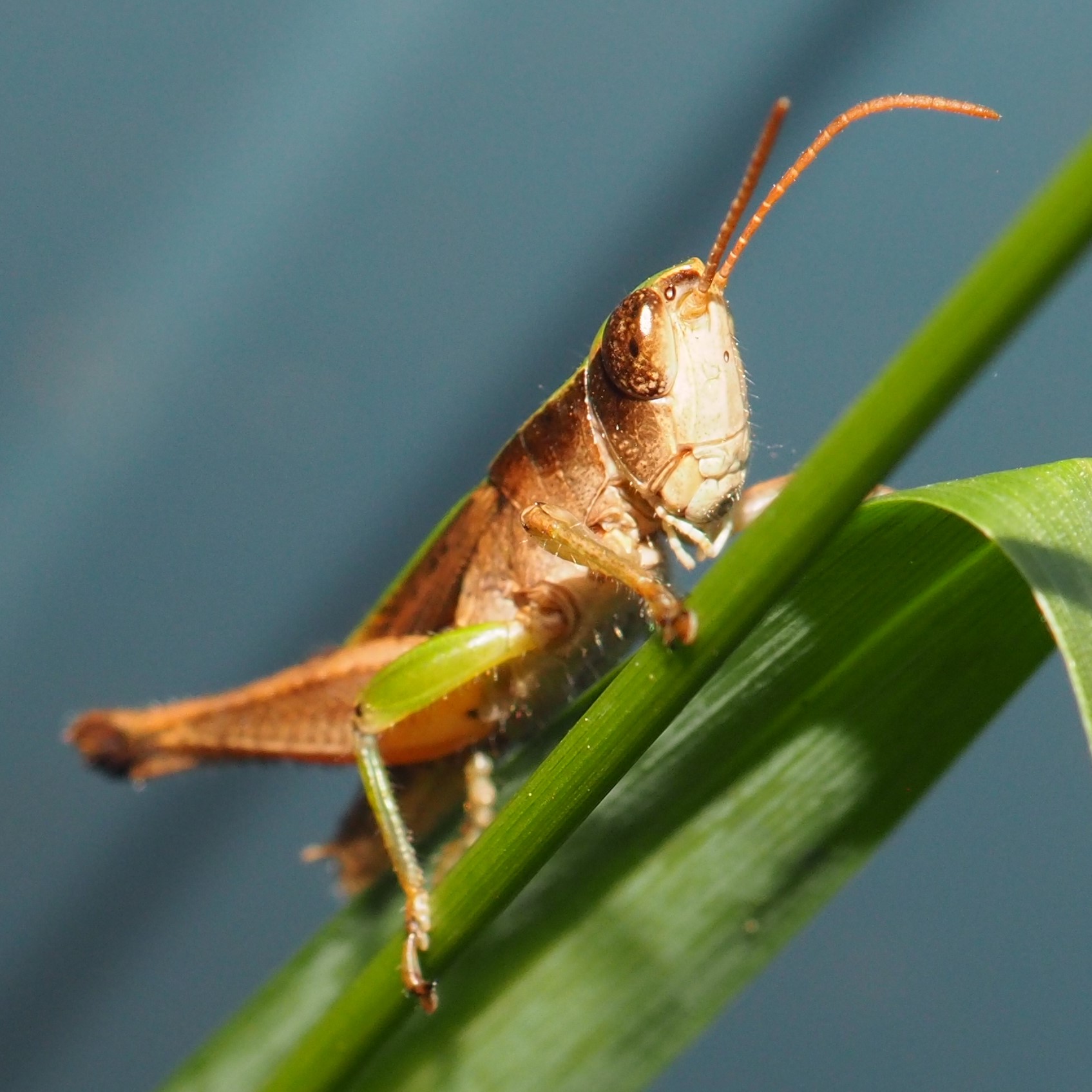
Remember those Meadowhawk dragonflies we have seen so often? Well, yesterday the red version showed up on a Japanese Anemone bud. For days I've been watching a black wasp with white spots flying around but it never stopped on a flower or anything else. Well, yesterday (are you getting sick of hearing "well, yesterday"?) I was sitting by the pond and a large creature in black and white was resting on a rock. Here it is with its wings moving very fast. And here it is! Isn't it magnificent? But what is it? Not a wasp. A bee? No, a fly. It's a Bee Fly, in fact a Tiger Bee Fly (based on the beautiful pattern on its wings).
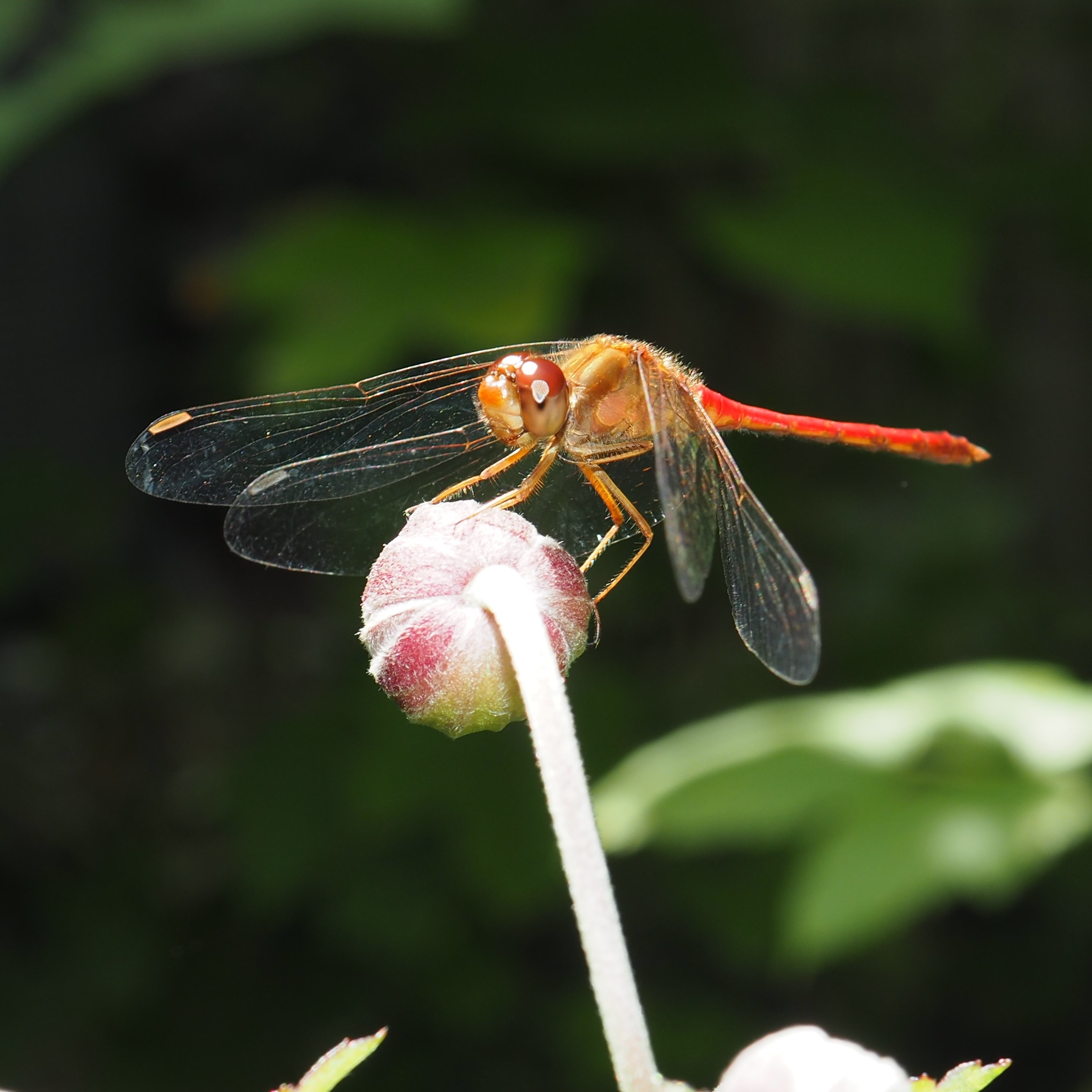
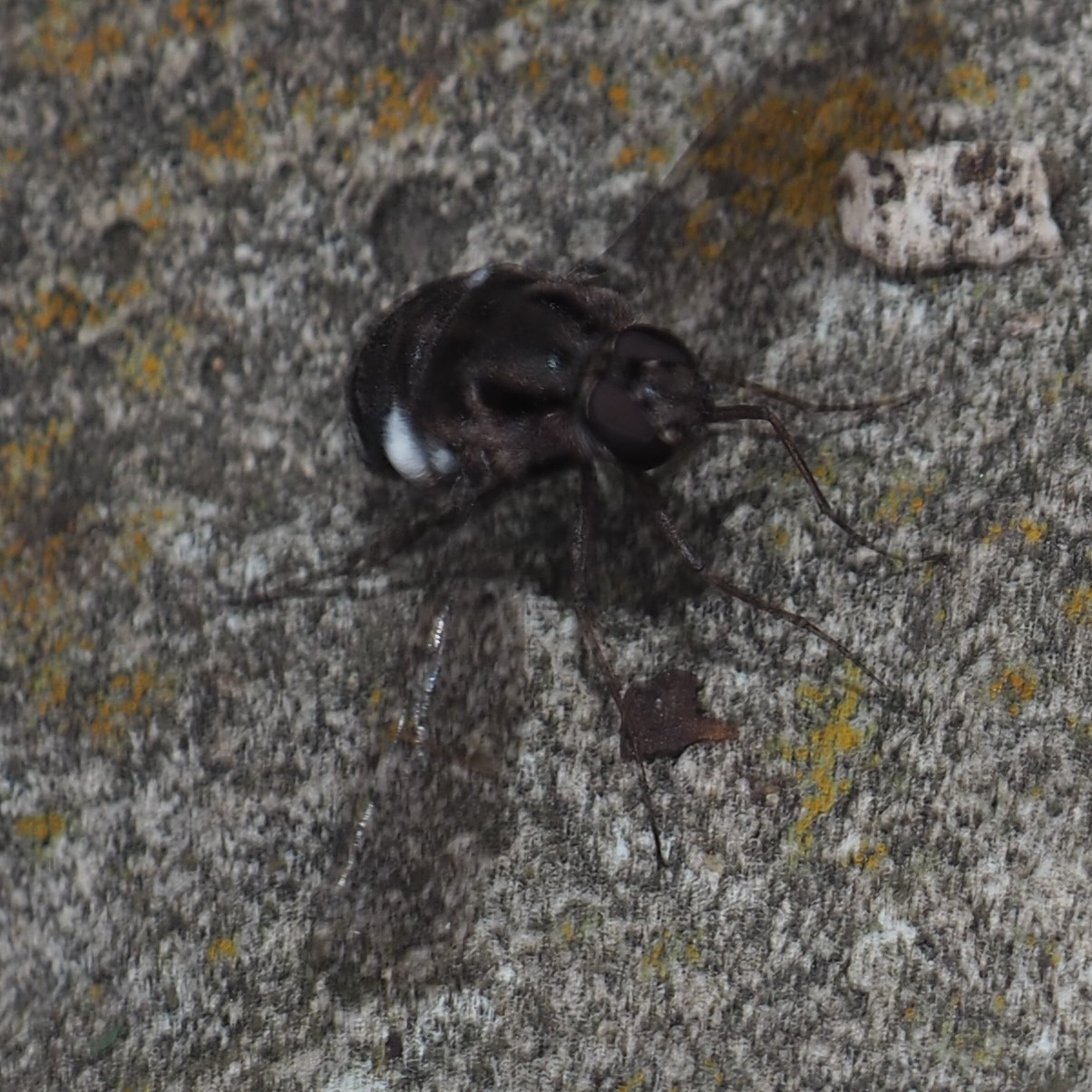
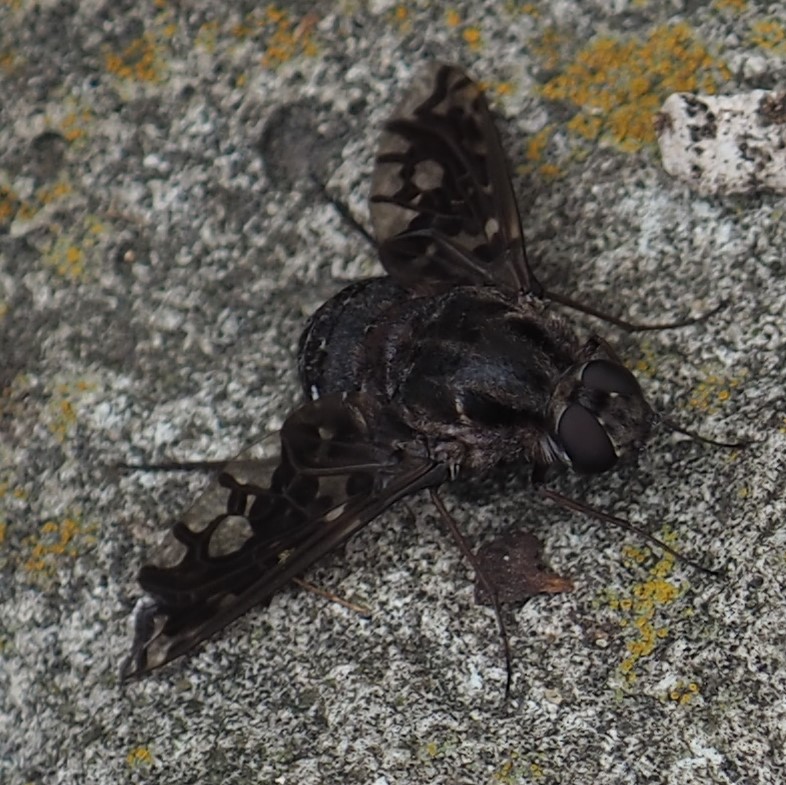
We've now segued into the Flies. As usual we start with this Crane Fly that seems to mimic a block-printed pattern on its wings. And move alphabetically past this little orange Fruit Fly, and this Gall Midge. I used to wonder why the Gall Midge was named that until lately, when I start to see galls and to wonder what produced them.
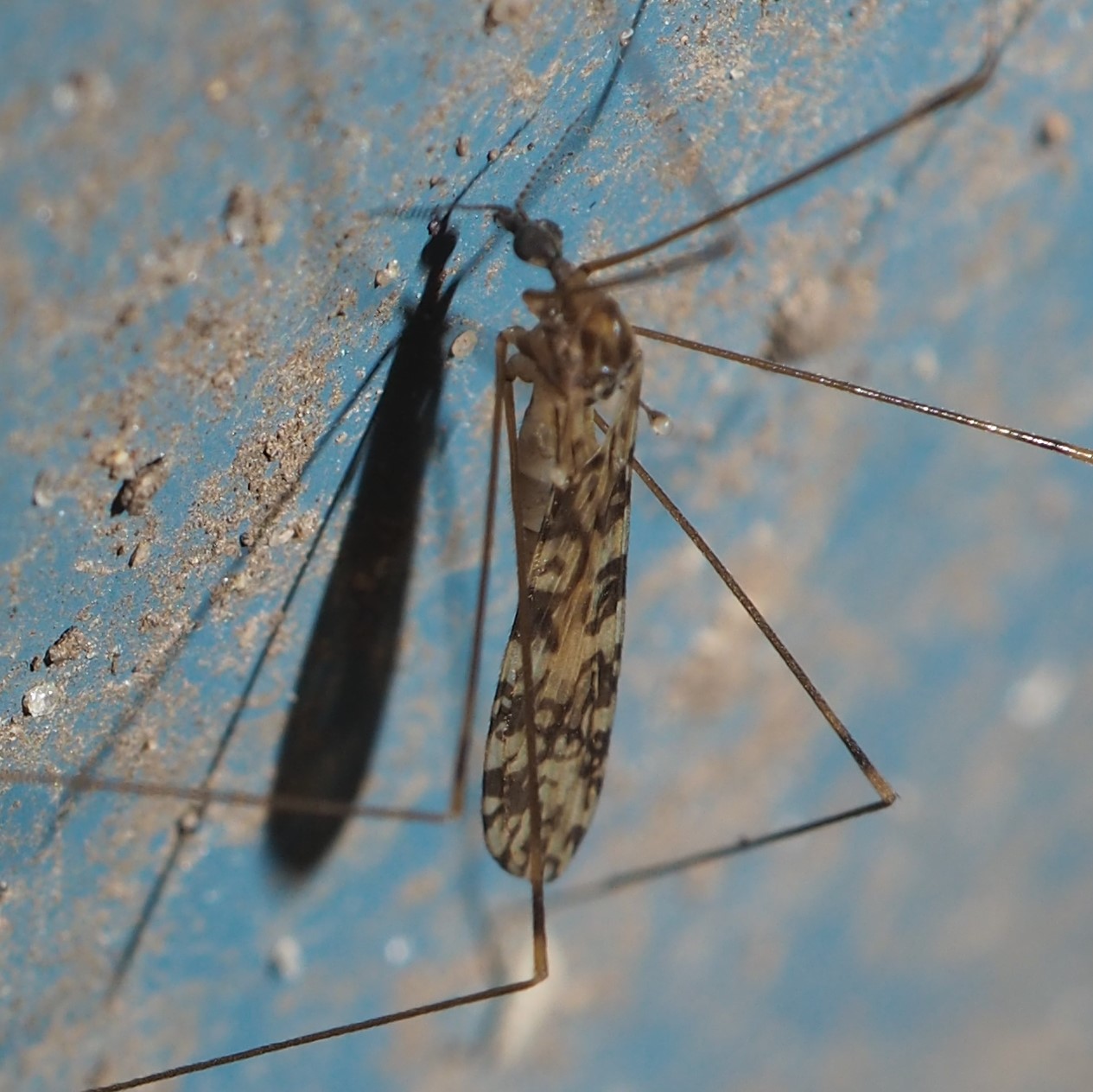
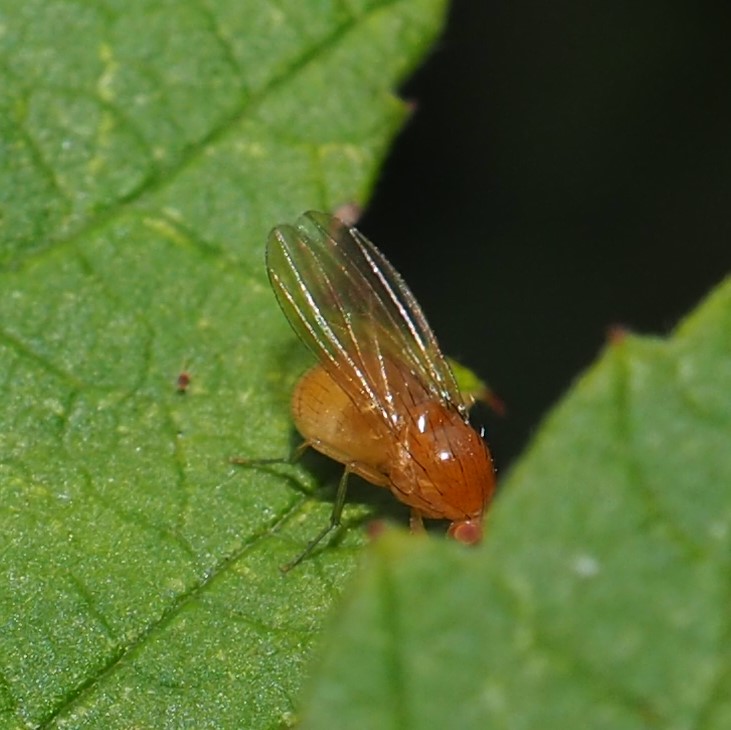
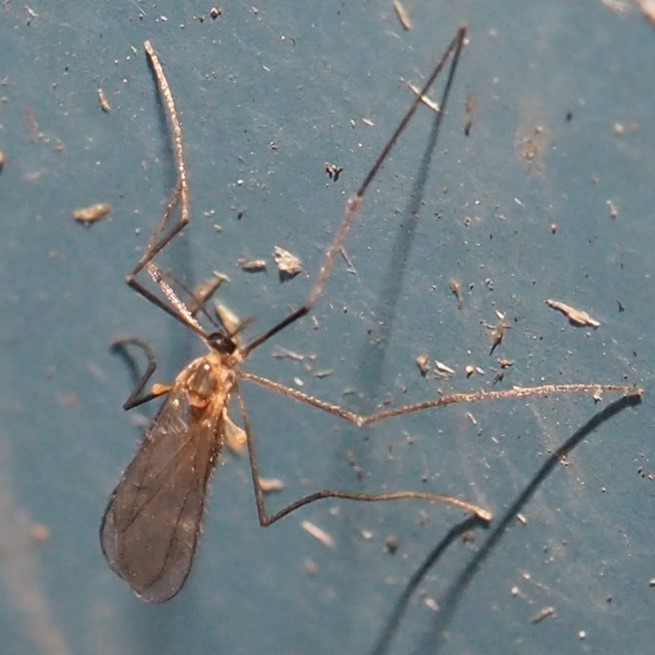
Here is an example. This tiny fly is in genus Liriomyza. It isn't a Gall Midge but is related, being a fly, and it is responsible for leaf minings such as the ones in picture 2. Third is the fly on the end of that leaf. I thought it was interesting to see the fly and the mining in one picture, though I'm told this mining may be from another fly, not this exact one.
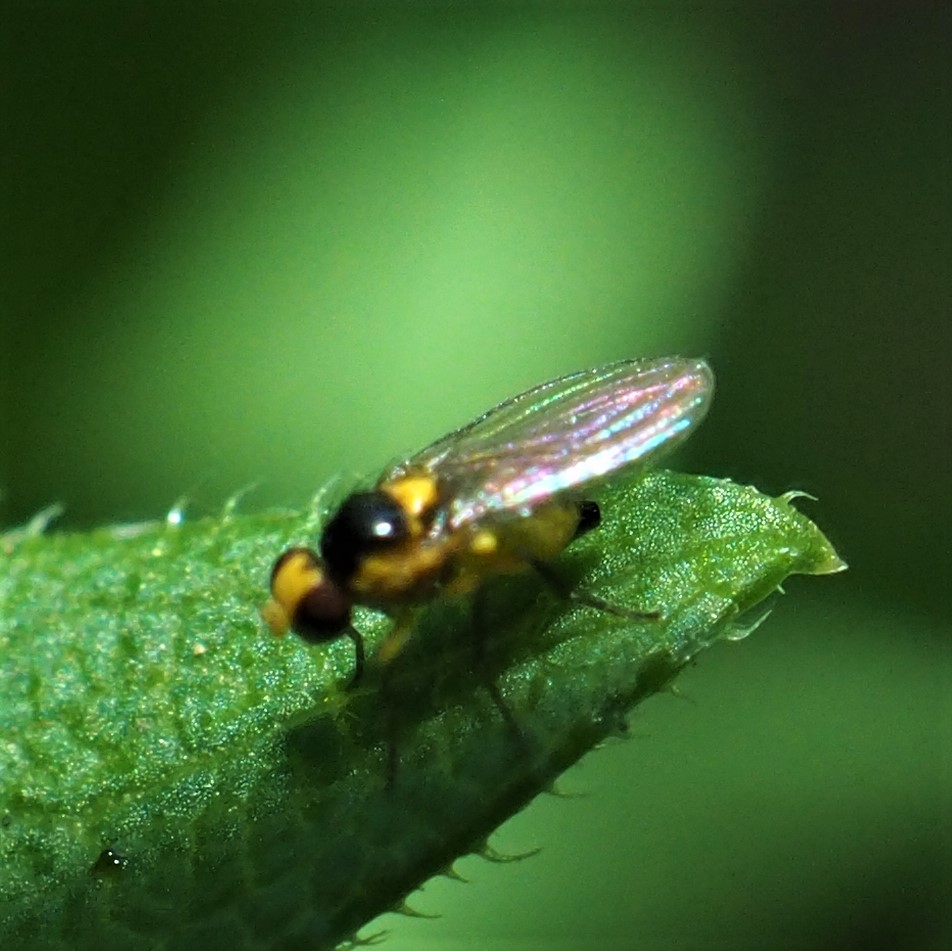
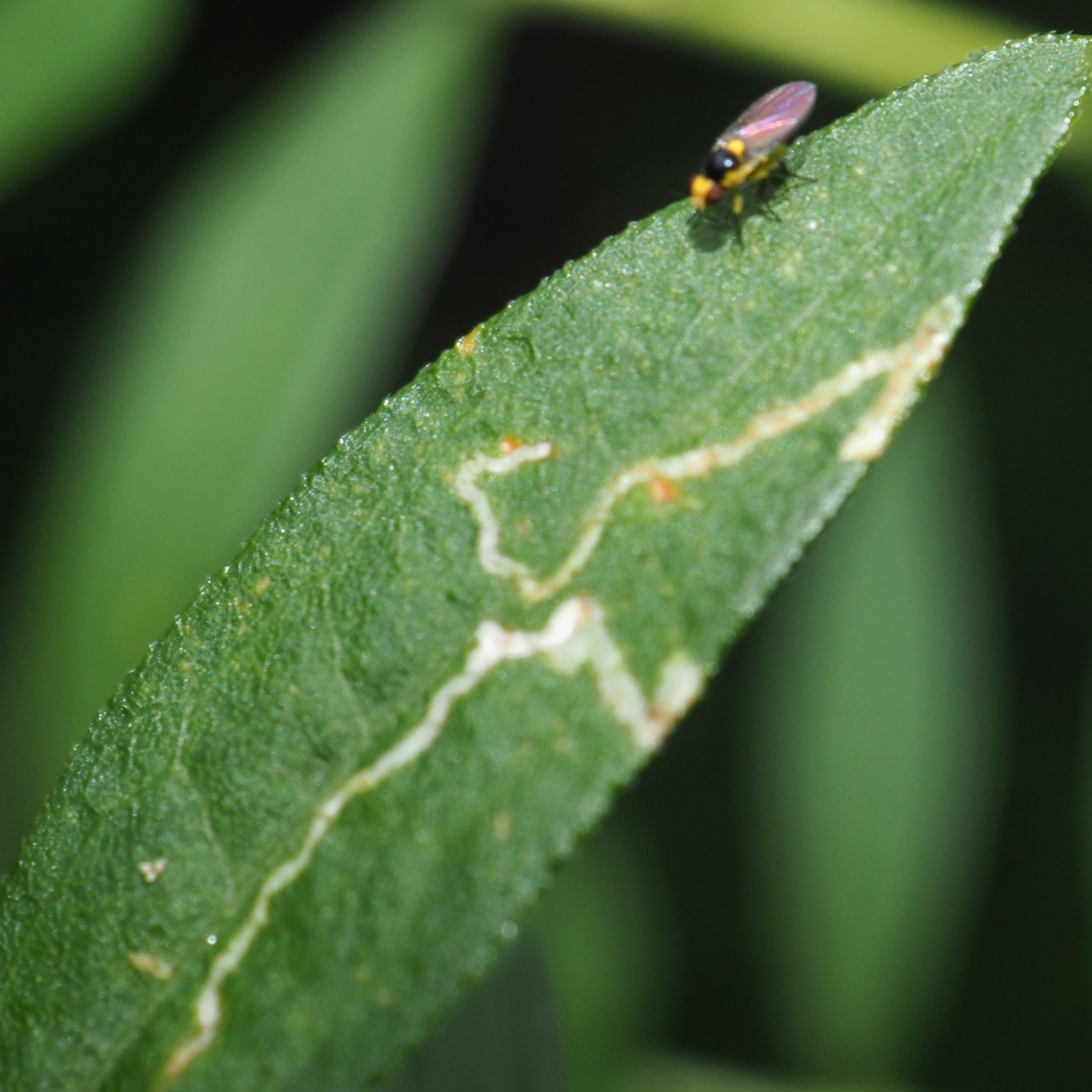
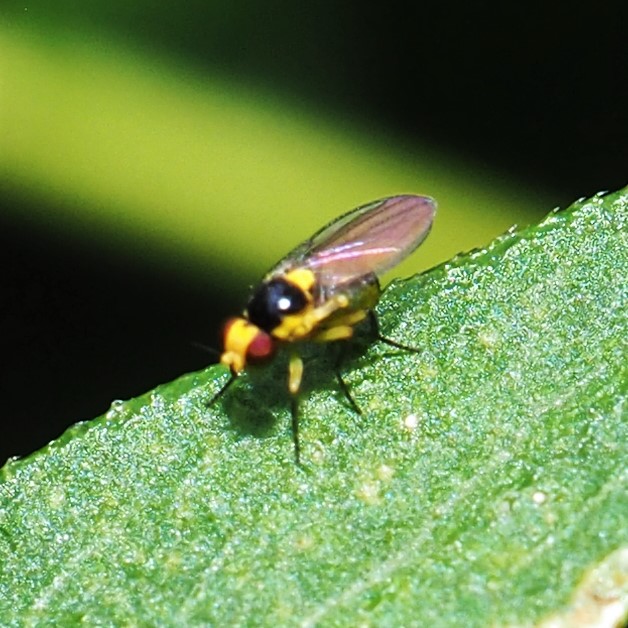
Here is a real Midge, non-biting I believe, and not a Gall Midge either. It seems to be larger than the ones we saw earlier in the year. Second is a Long-legged Fly, and third another Moth Fly. The fourth fly is one I've never seen before. In fact I don't think it's a Fly at all. It has little short wings and so I'm thinking it is a Bug in one of its nymphal stages. Whatever it is, it seems to have been set aside as a spider snack.
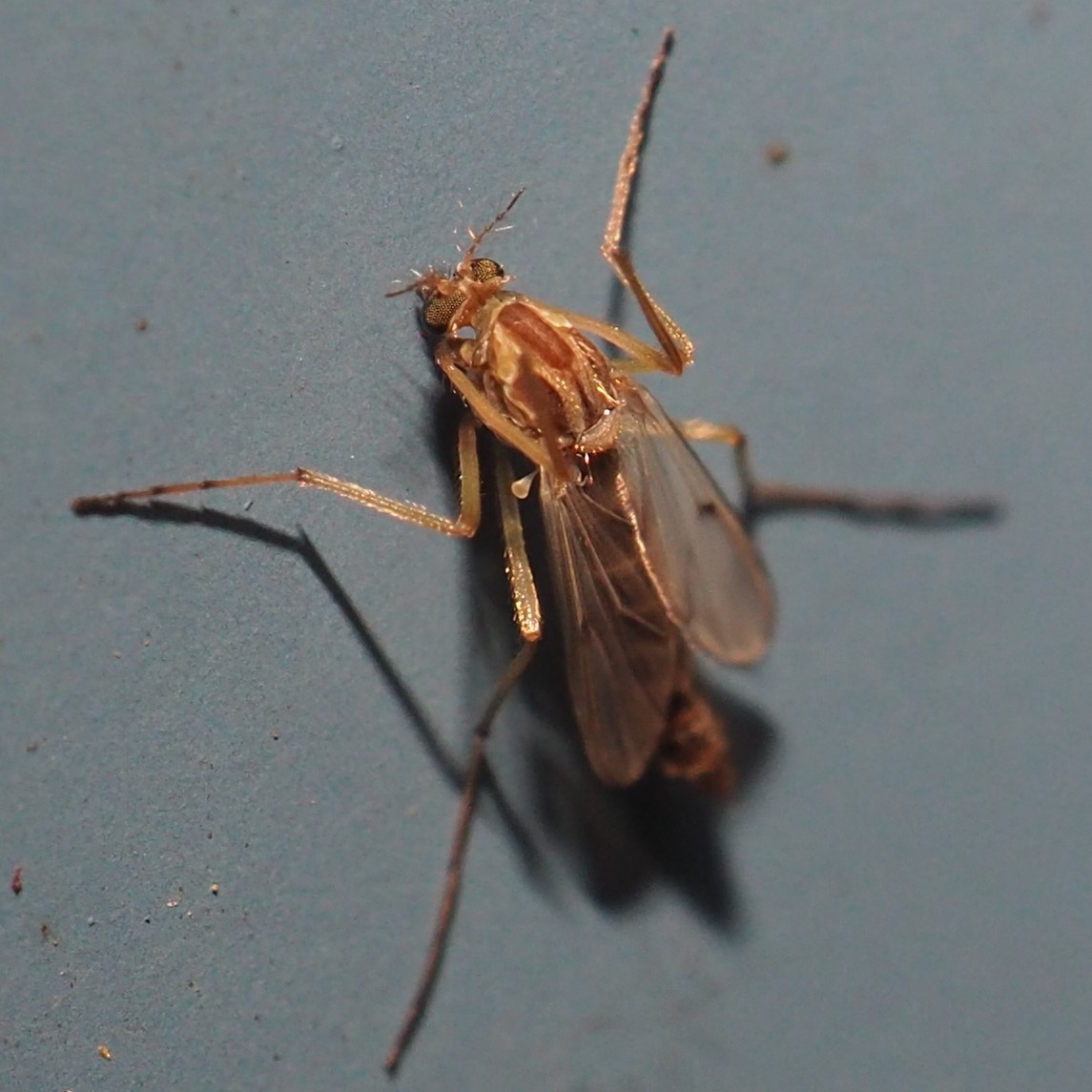
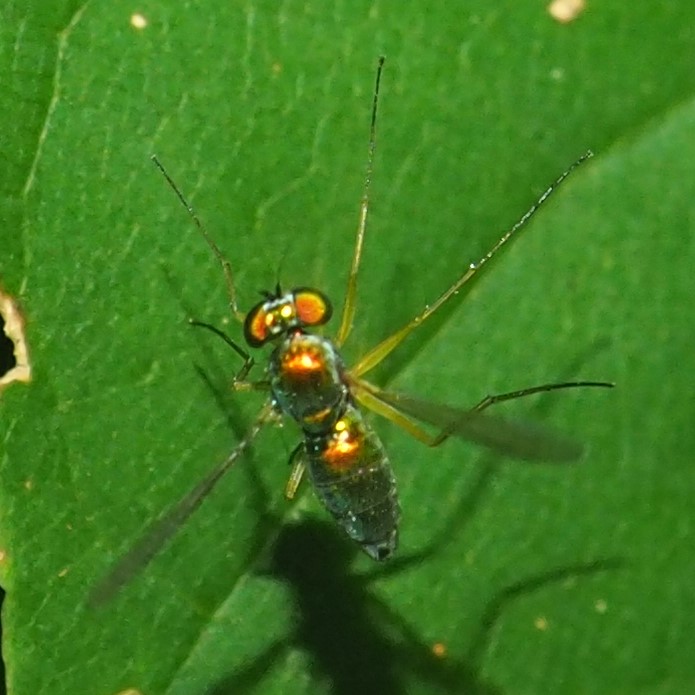
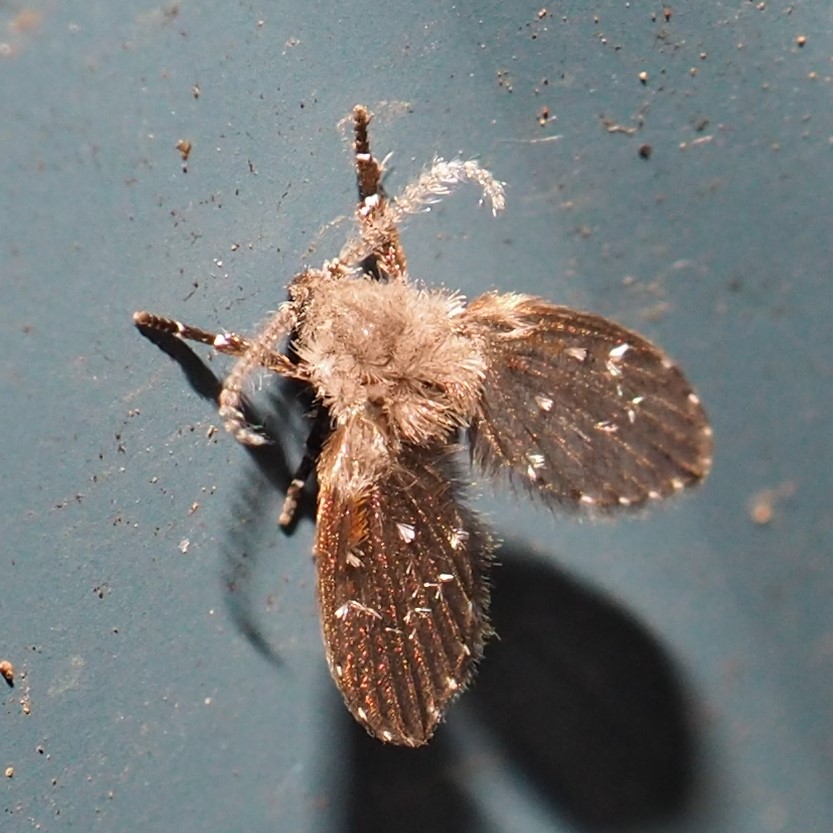
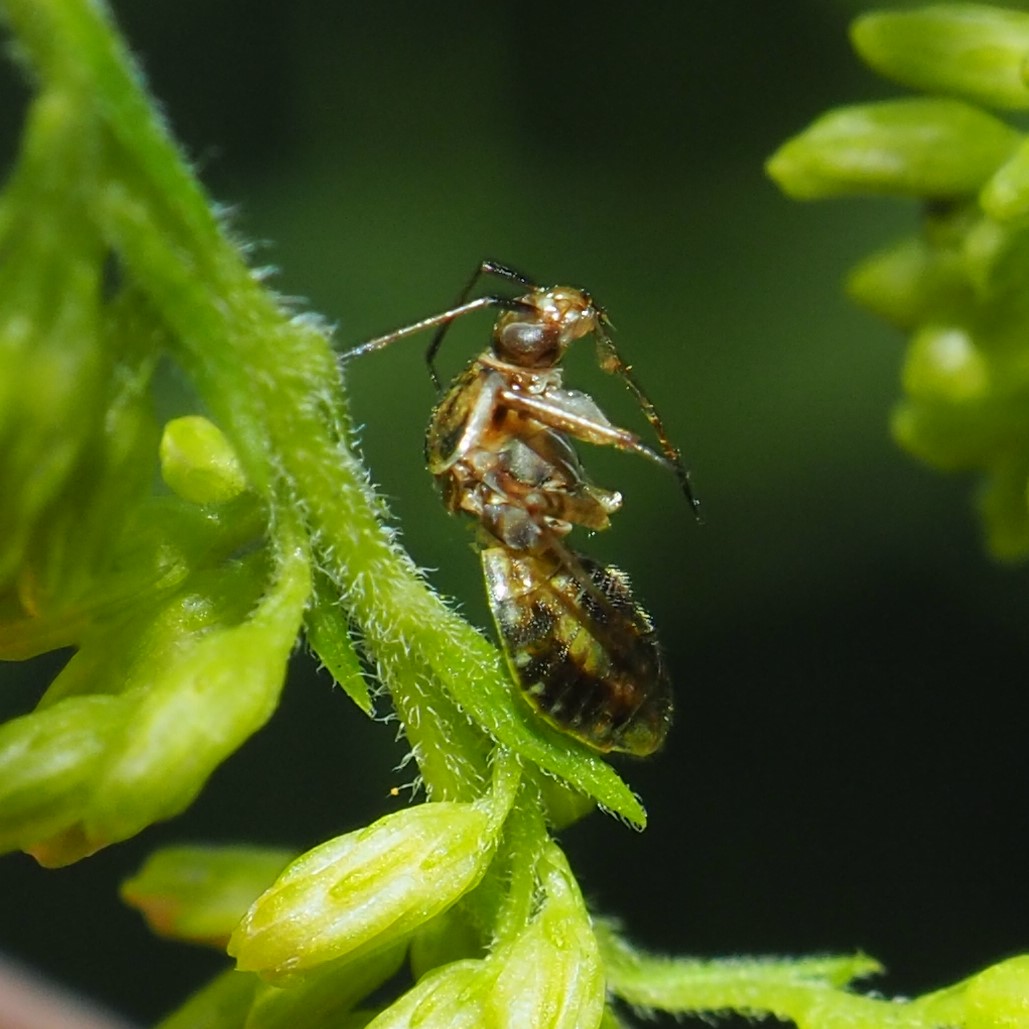
This first fly (also in picture 2) is probably a Marsh Fly of some sort. Third is an enlargement of one of the fruit flies we've seen before. It's in the process of licking up some kind of prey or other delight. The fourth fly is a Hybotid Dance Fly,subfamily Tachydromiinae.
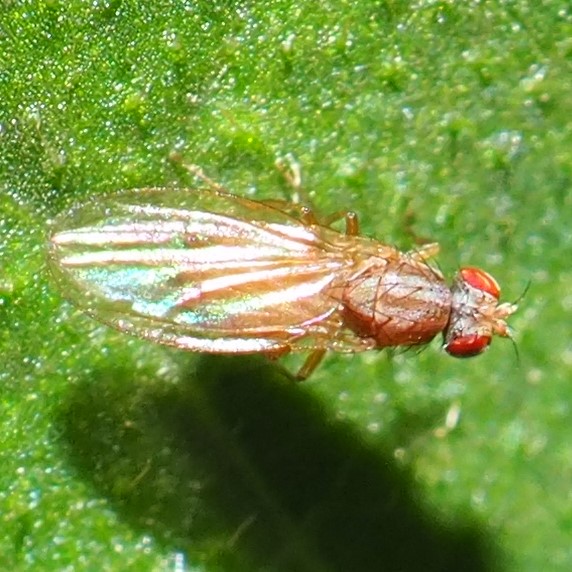
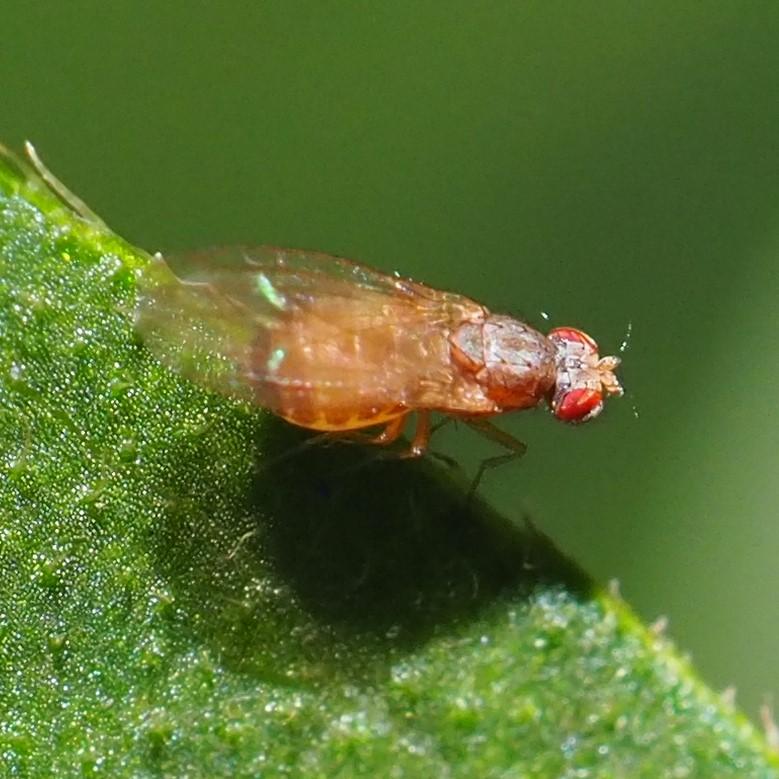
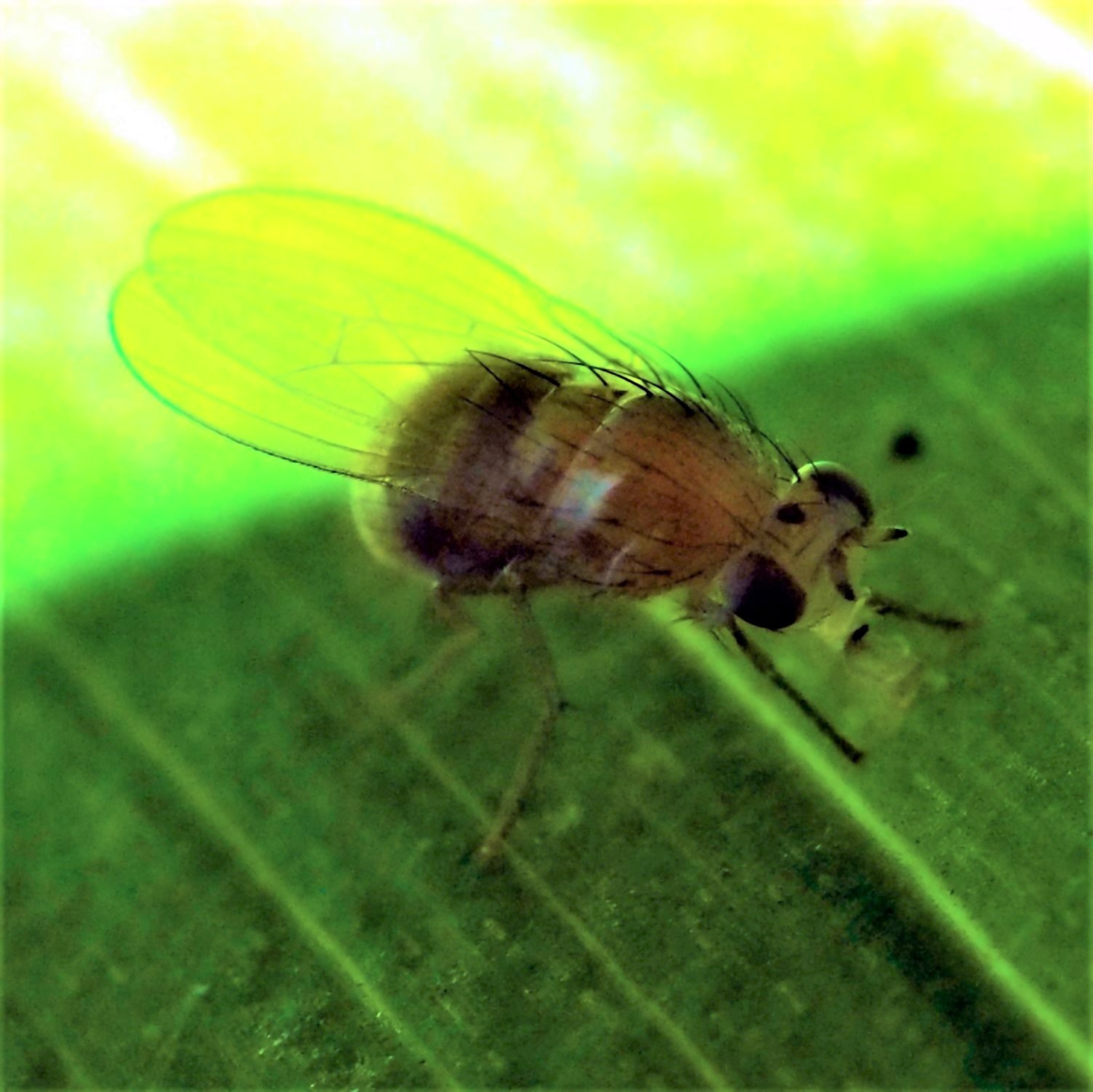
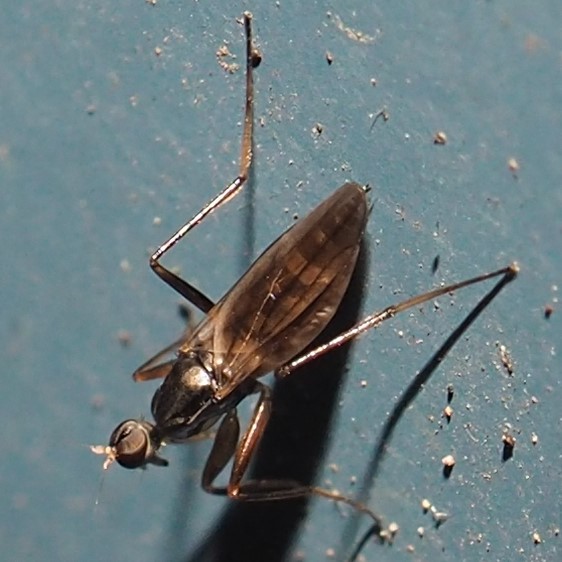
Here's Froggy! I don't see him often these days, but if I'm outside and talking to someone on the phone or a neighbor at her window, then here comes Froggy's curious voice "Gollum". What a treat to have an invisible playmate. The second picture was taken from an upstairs window. It's the little Bullfrog that was a tadpole not so long ago. I often see it sitting on a barley bale from upstairs, but when I go downstairs and the back door clicks, I then hear "SPLOOSH" and know that it has gotten out of Dodge. So excuse this fuzzy picture and try to take my word for it, it's Bully! Almost every day I can almost step on a little toad. The young ones are growing steadily and must be about twice as long as they were when I saw them clambering out of the pond!
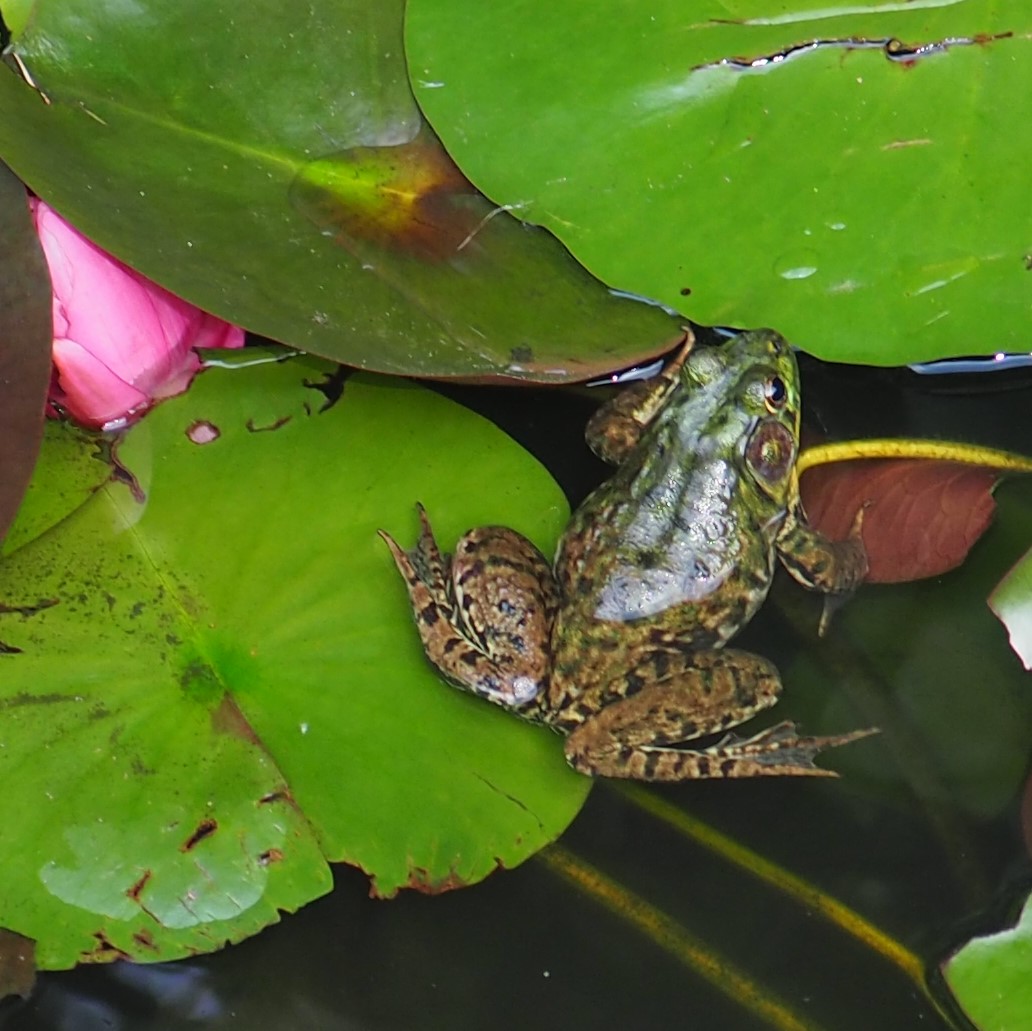
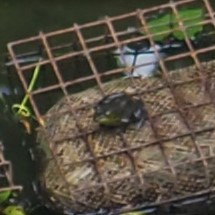
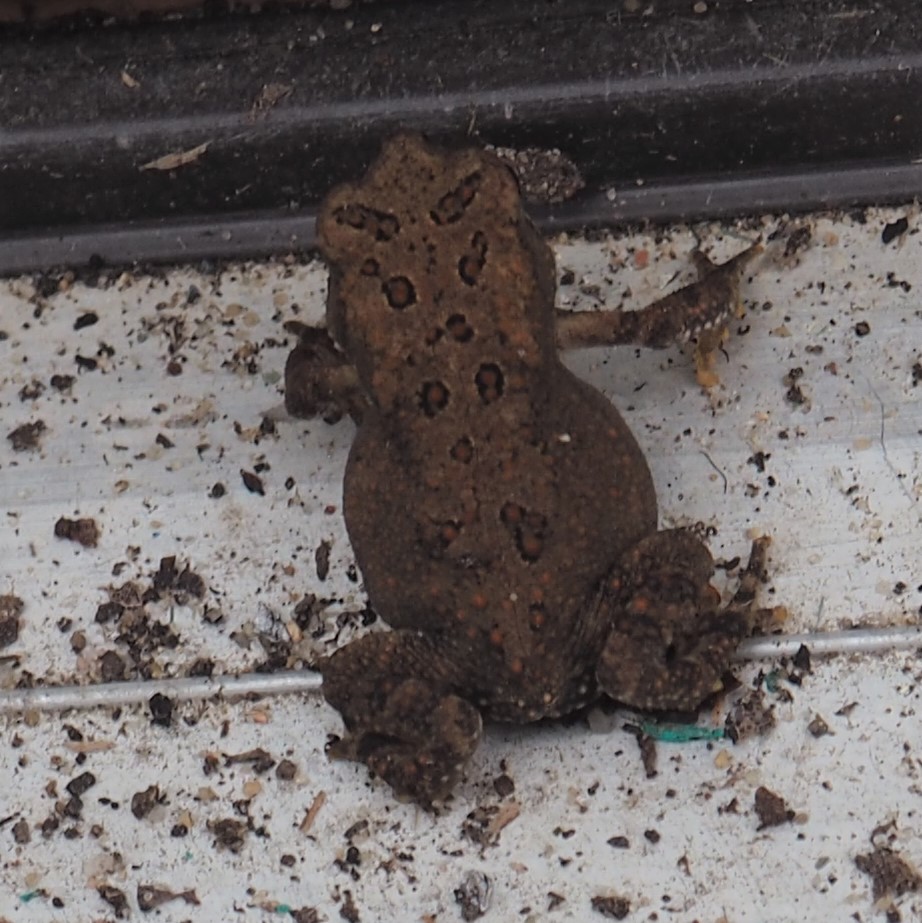
Here are some galls on goldenrod. This bunching is caused by a Gall Midge. Each of the other pictures shows a fluffy gall made at various places on the goldenrod plant. The brown gall in picture 3 may be due to drying up or other kind of deterioration - I've never seen one this color.
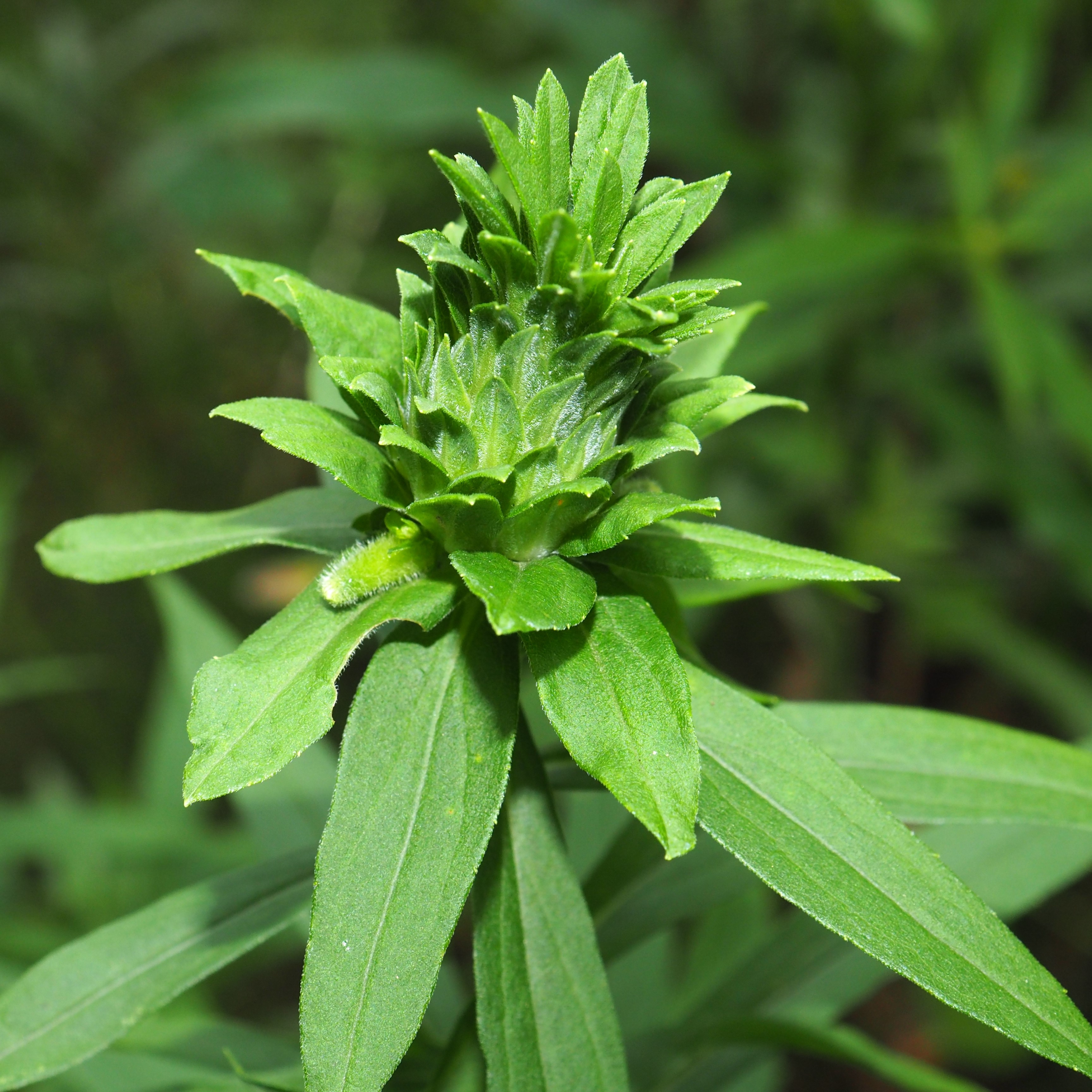
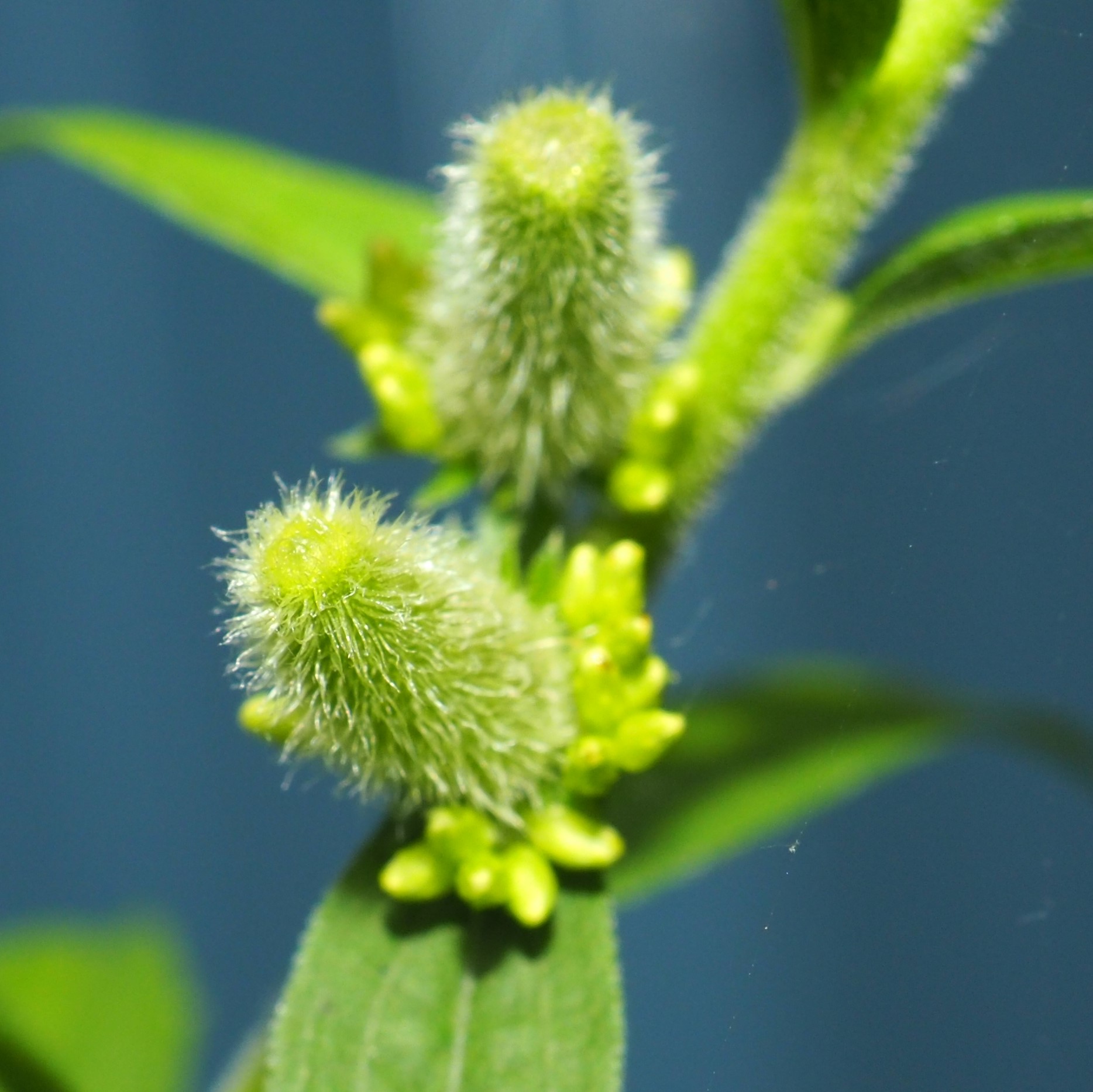
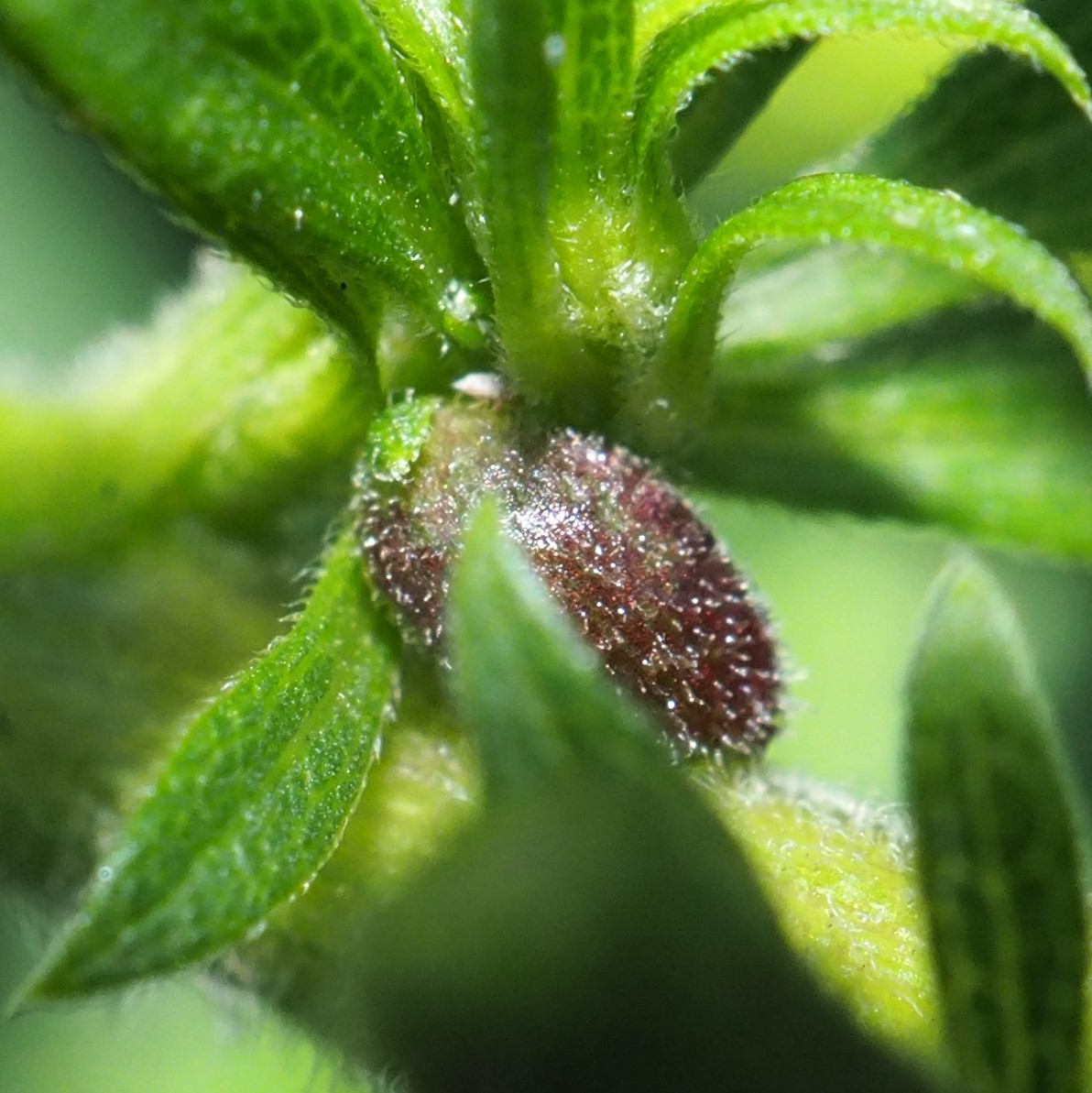
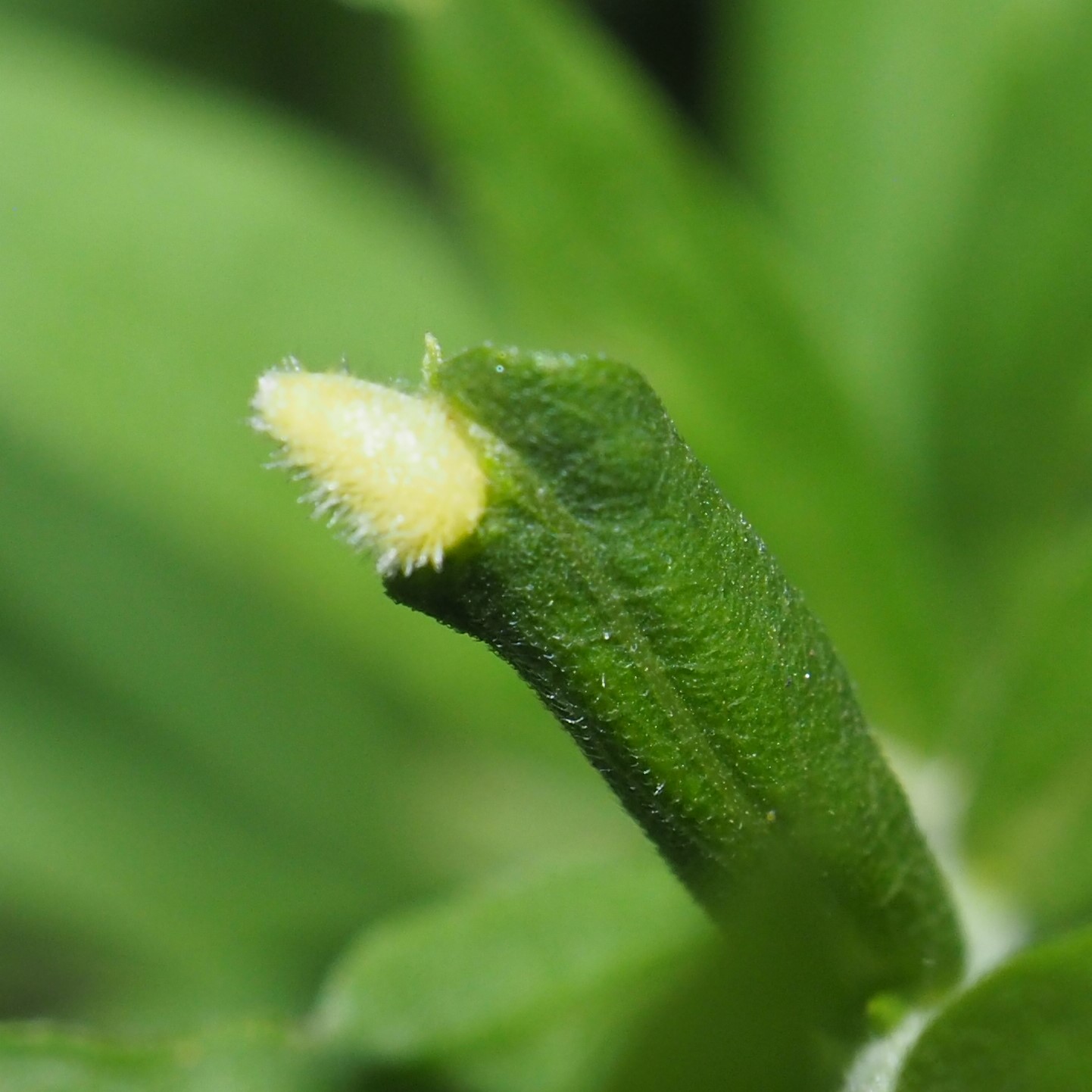
There are a couple more items that I don't know much about. The first image is of a spot of bright red - some kind of rust?
The second is a white powder on an aster leaf, also unknown (to me). There seems to be one or a pair of Something at the apex of the leaf.
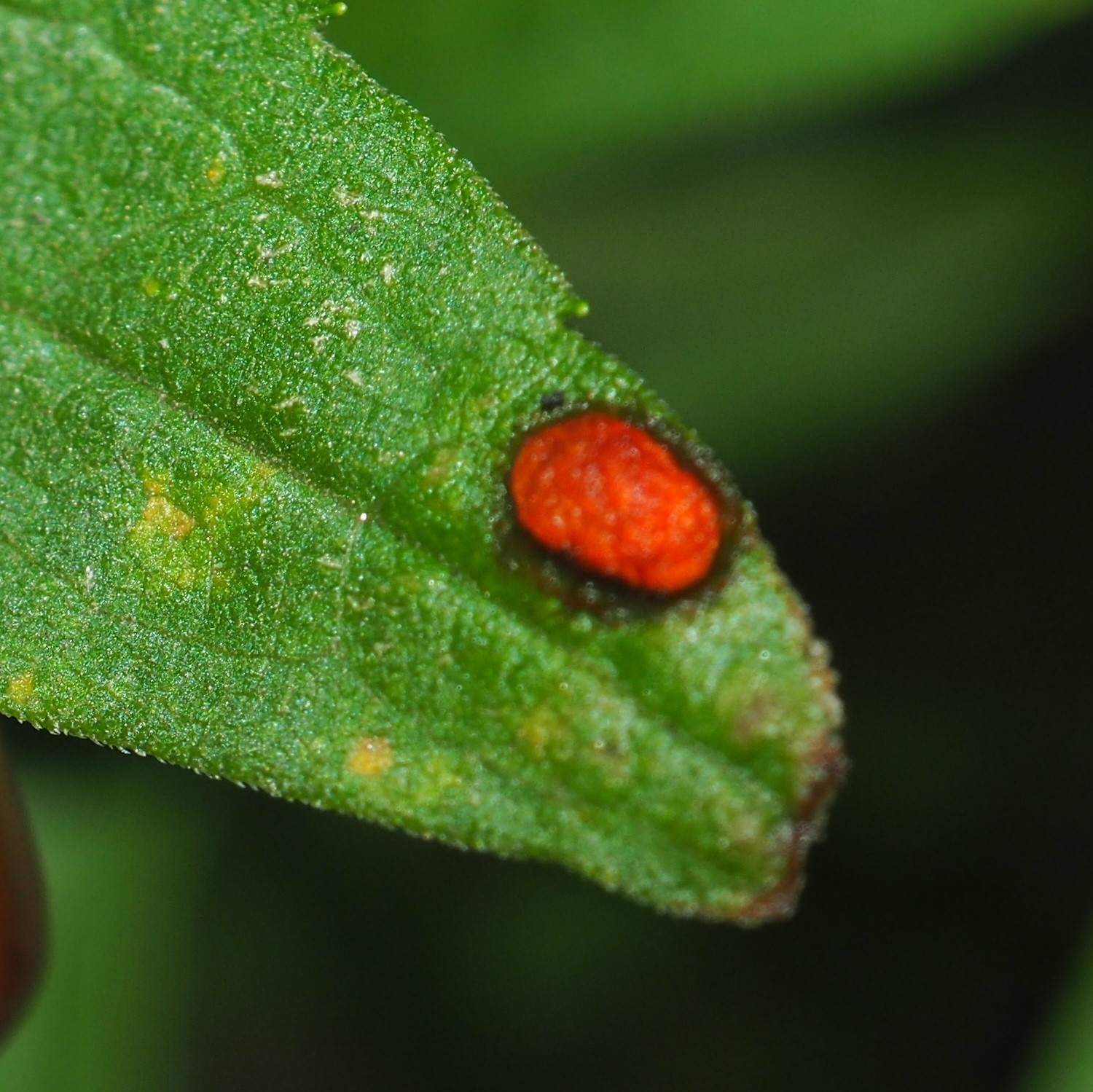
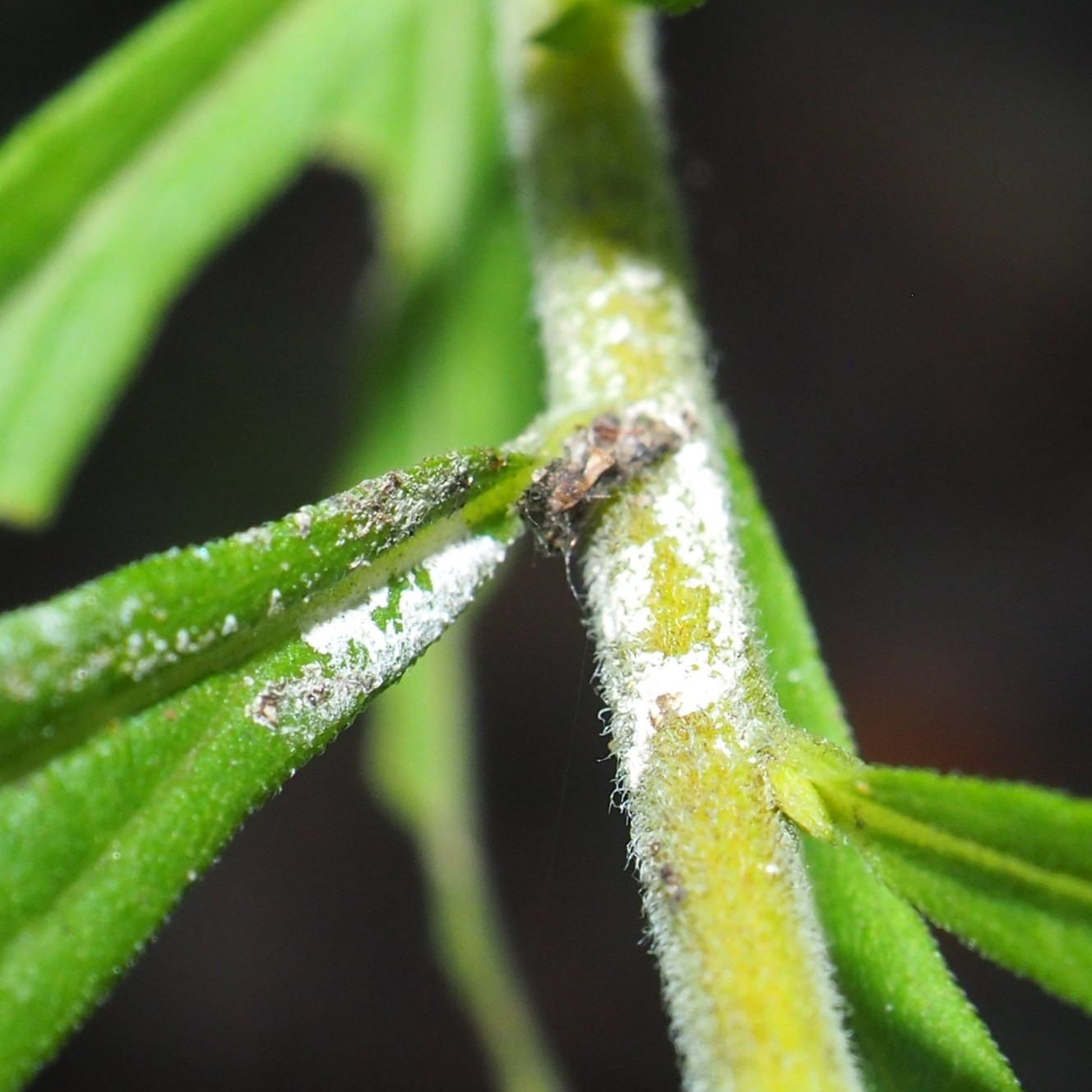
Here is a Grape leaf with elaborate minings. Second is a Grape leaf with small spots, and third a Maple leaf with blotches. I believe they are called Black Tar Spots. Aside: Since we've been looking at problems with Wild Grape leaves, here's a cheery sight - some little grapes that seem to have survived the pests that usually pick them off soon after the tiny grapelets form.
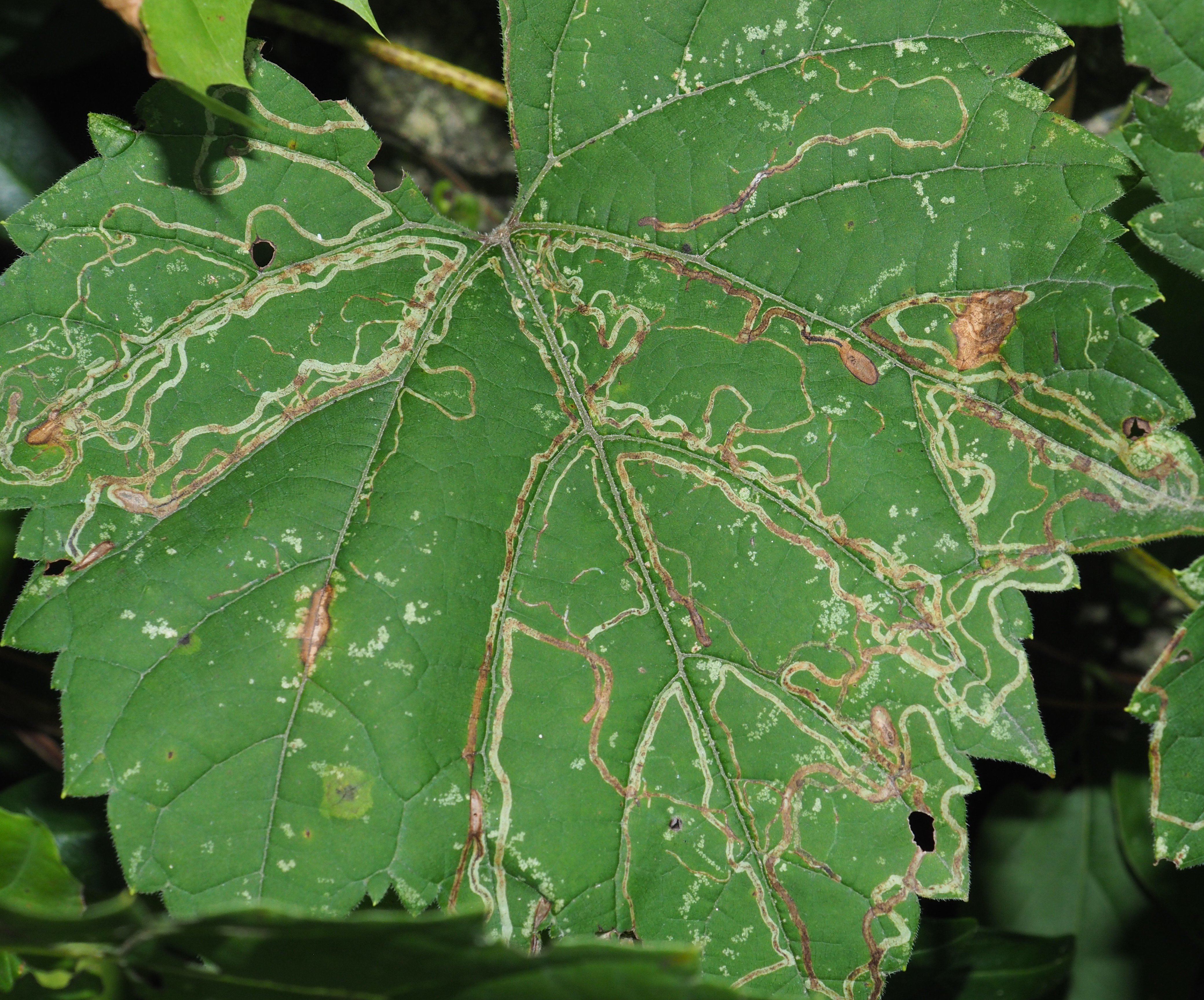
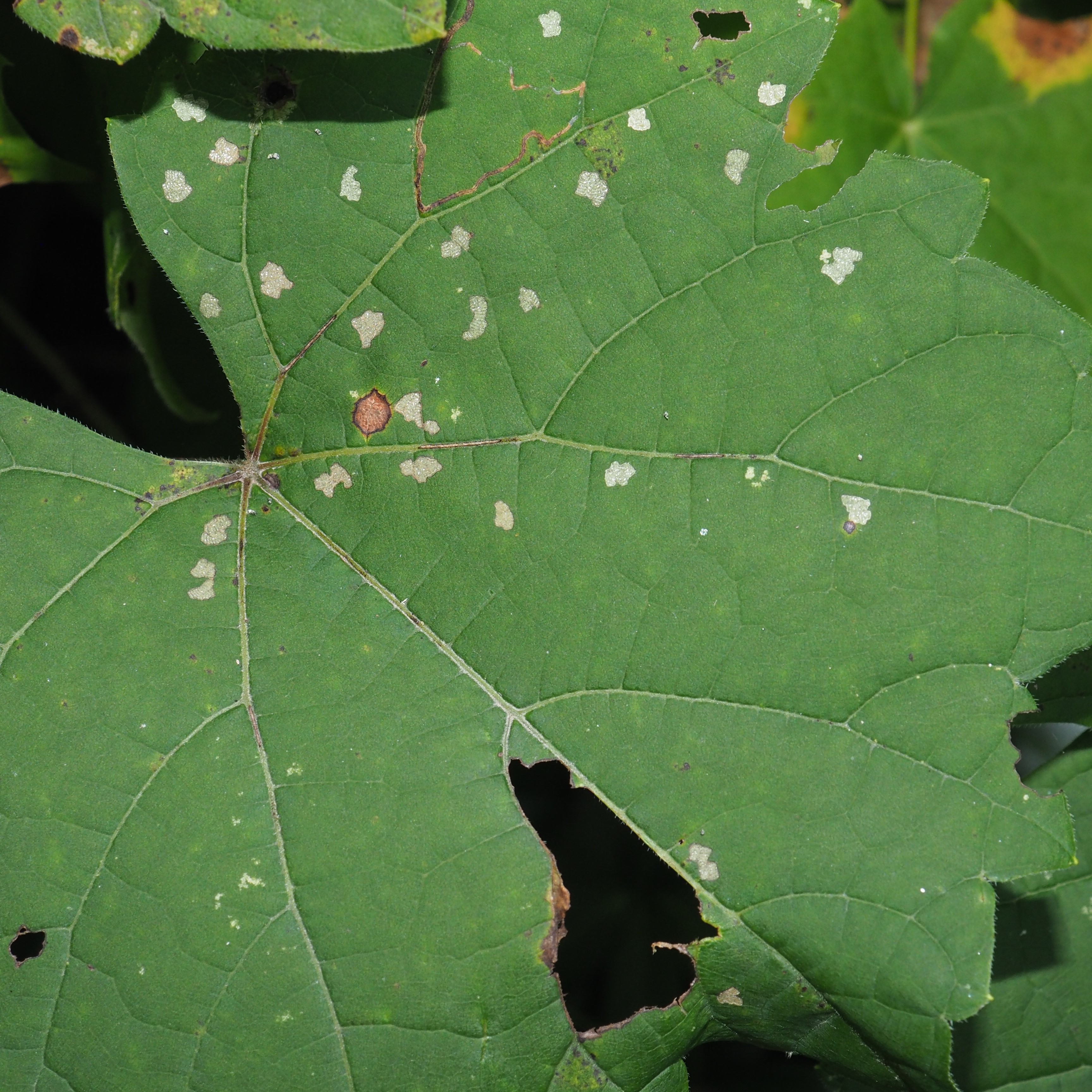
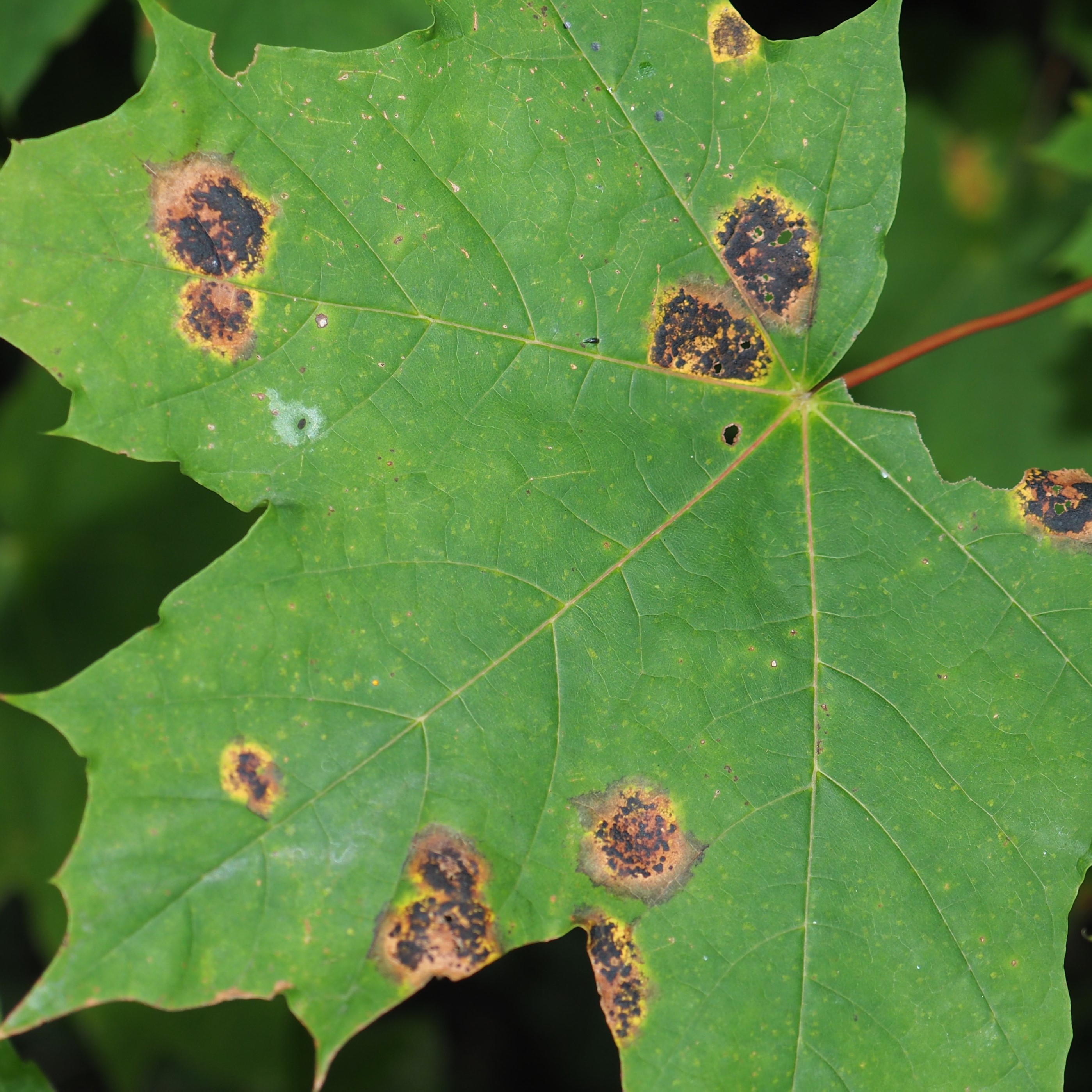
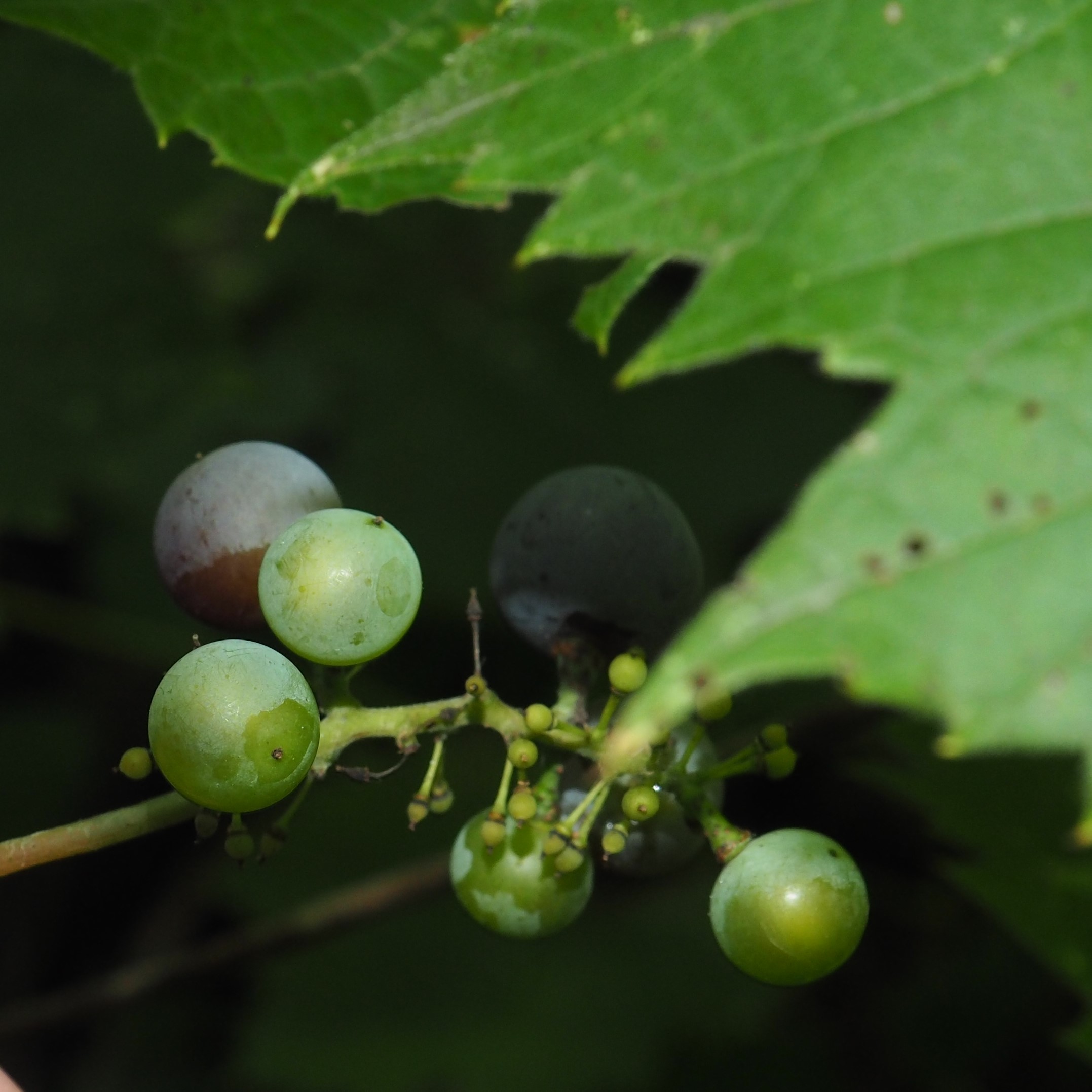
Here are some of our favorite Harvestmen. The last picture is sort of a mystery: Are they mating or fighting?
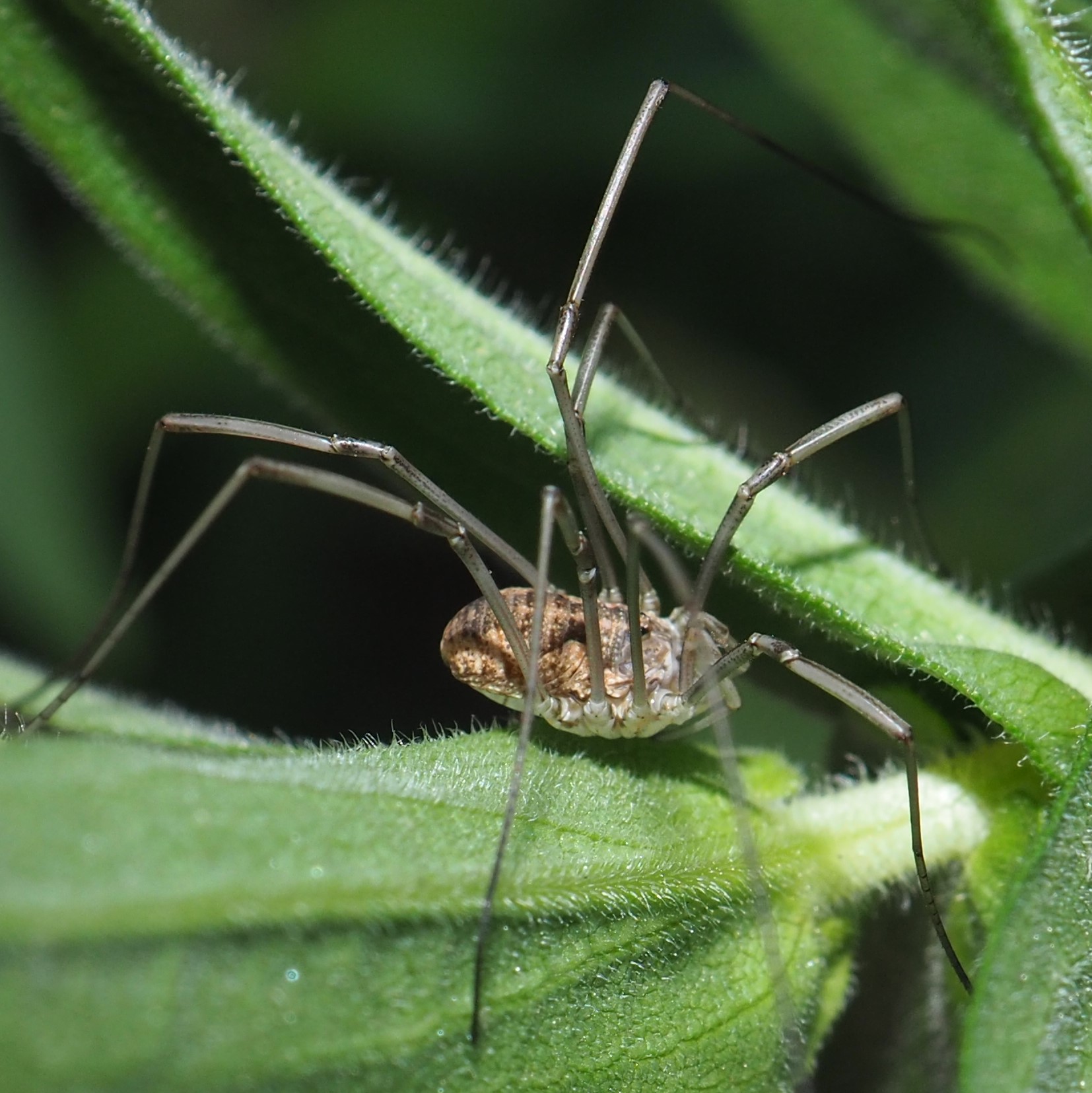
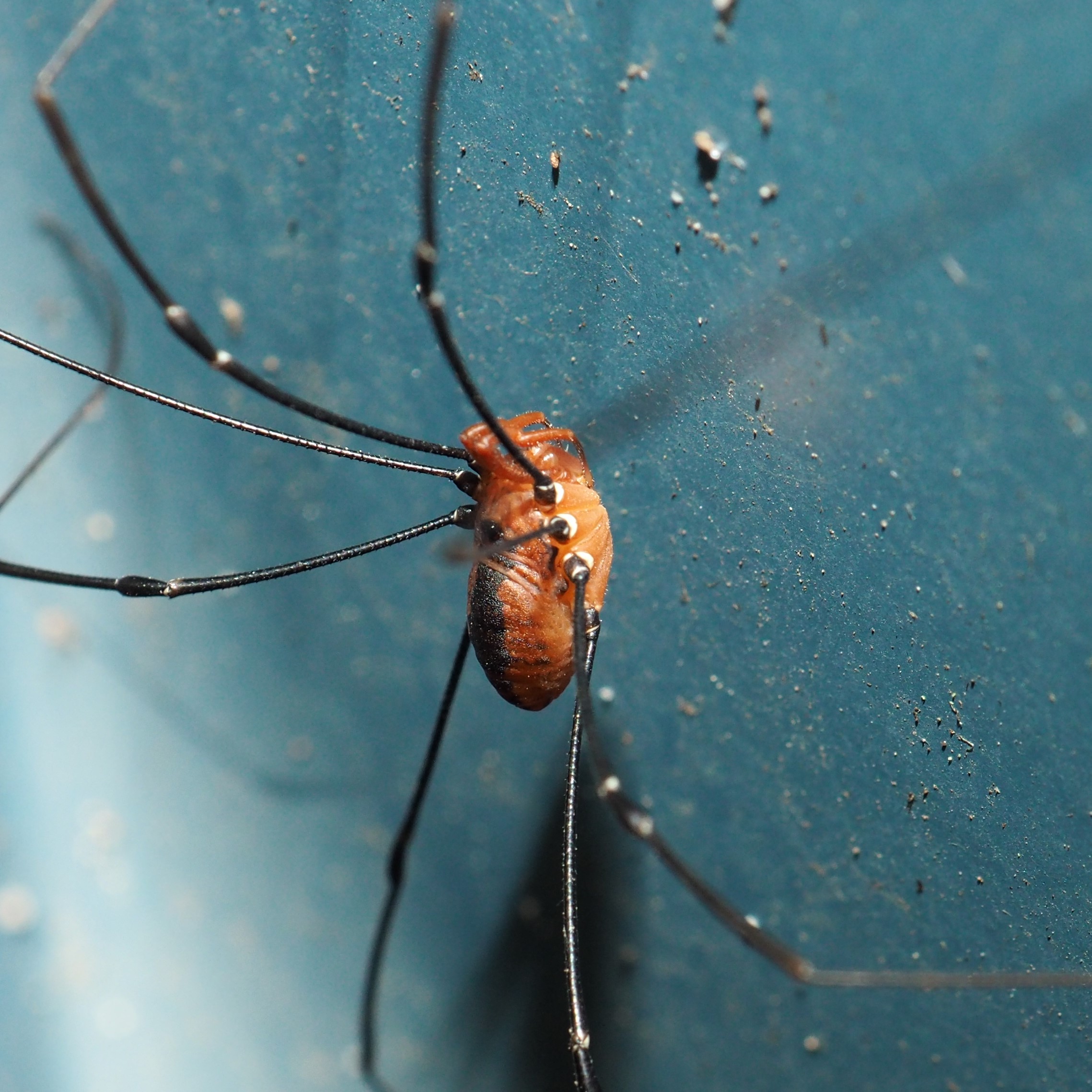
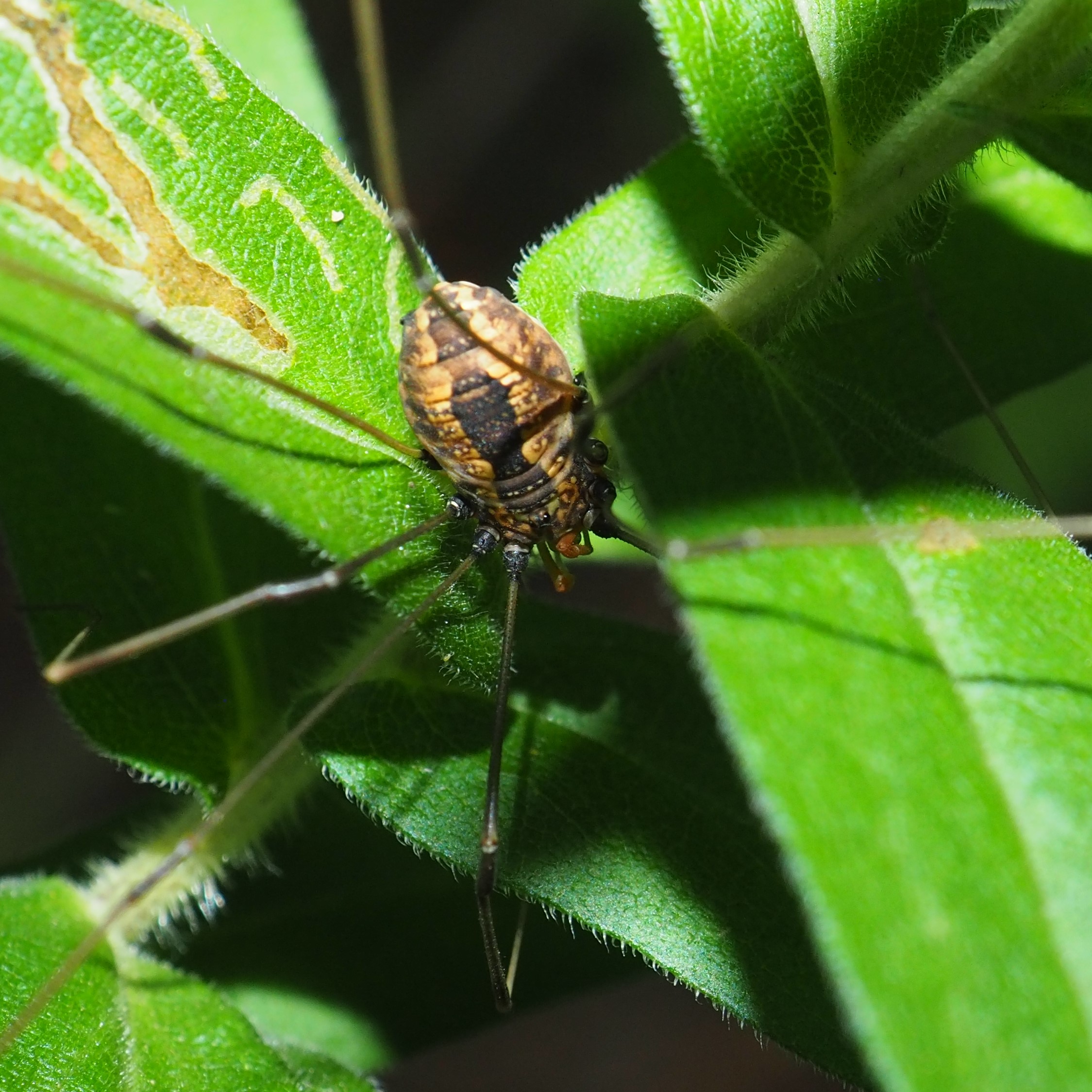
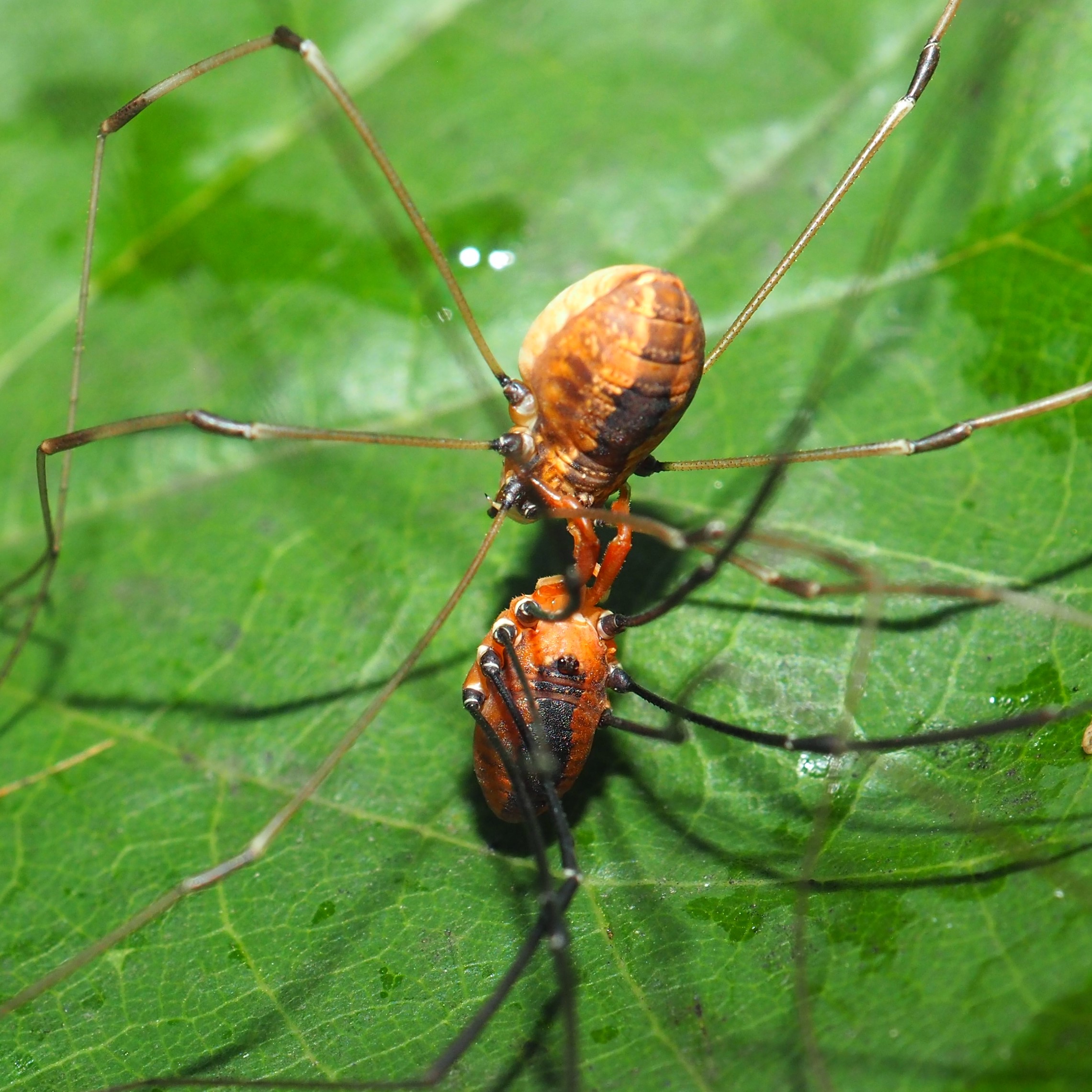
Remember when we saw the Green Lacewing larva? Well, here's the adult - worth the wait! Then only these Scorpionflies stand between us and our Spiders!
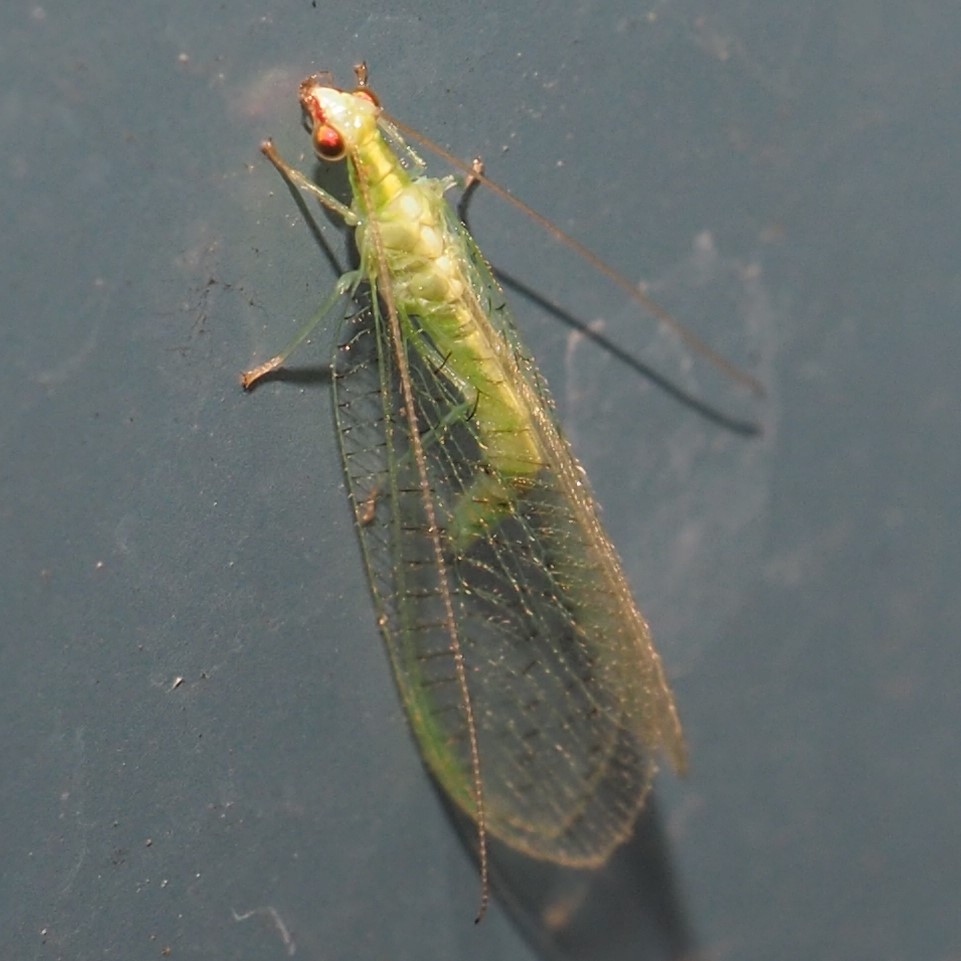
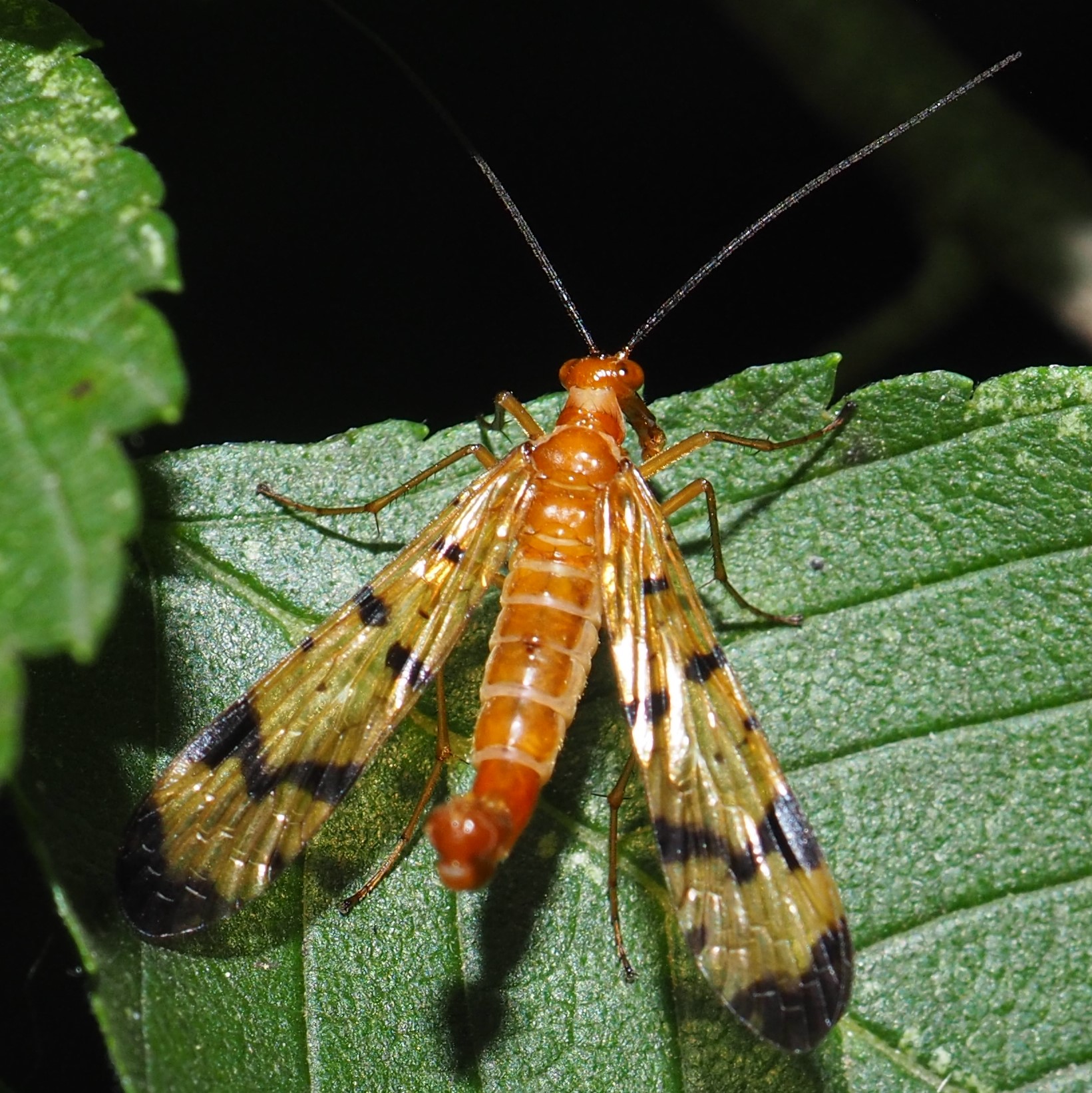
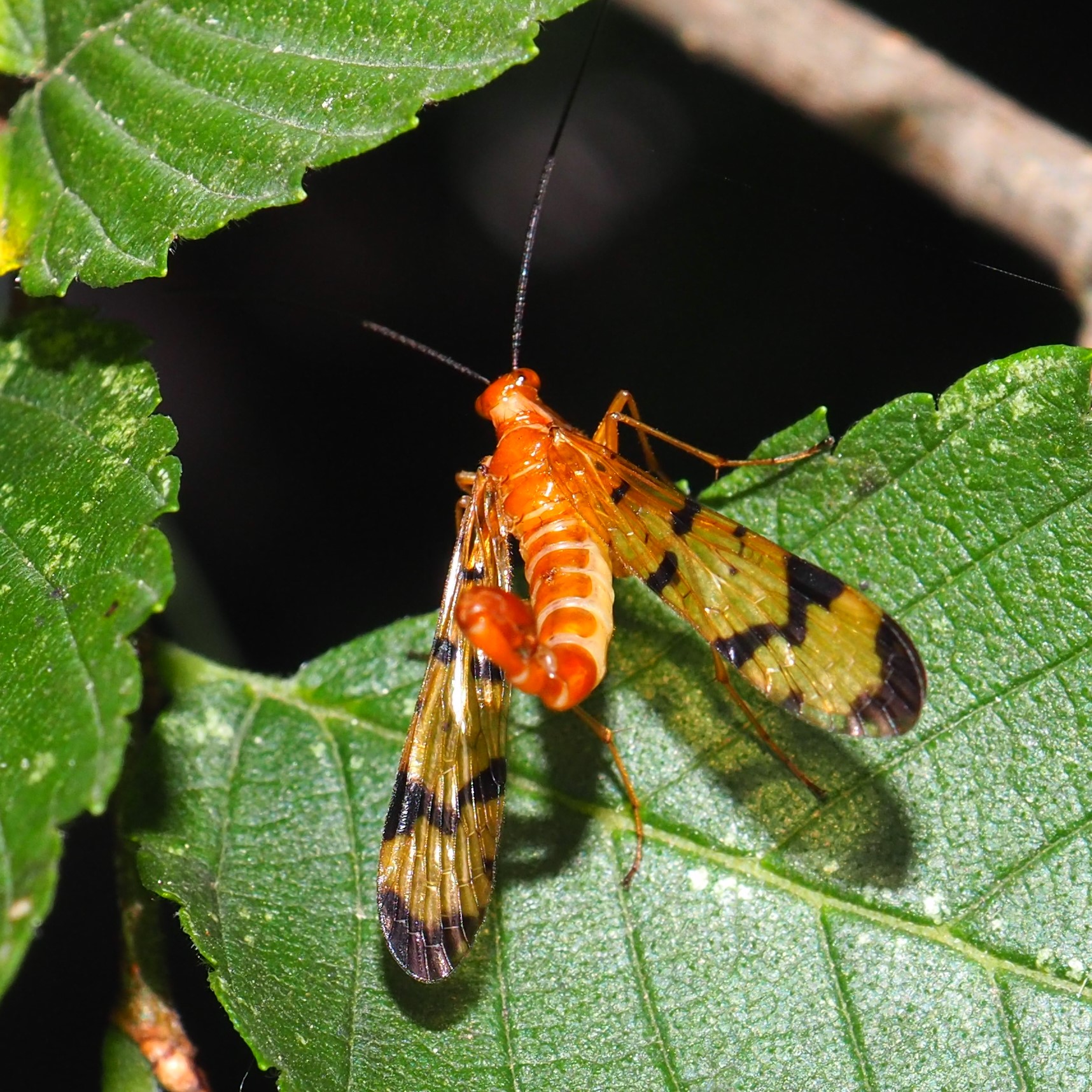
Spiders! A Cellar Spider, genus Pholcus. A Cobweb Spider, probably in the genus Theridion. Third, a large Grass Spider coming out of its sheet web to hunt for something. Last, an Orchard Orbweaver, Leucauge venusta. This one is a female.
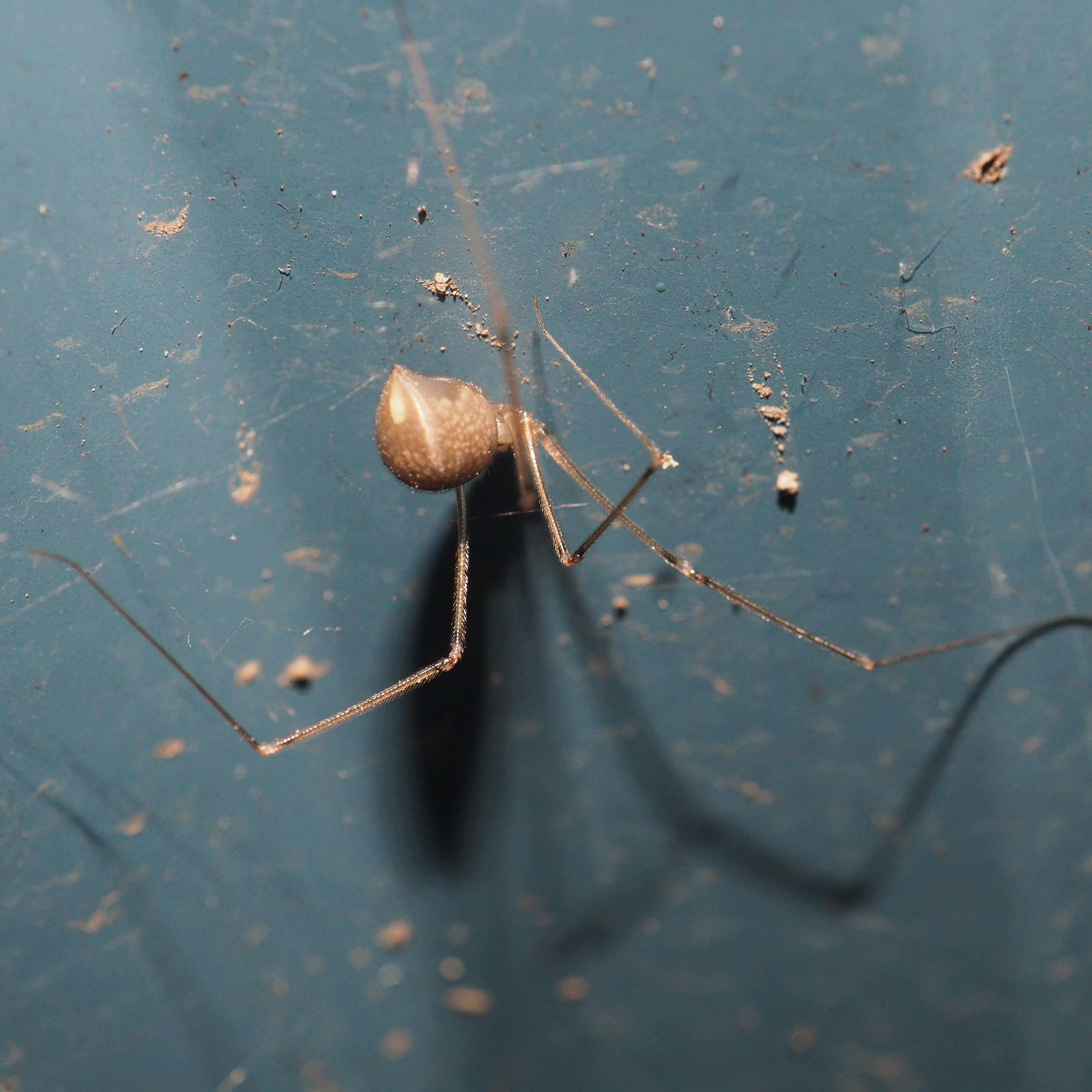
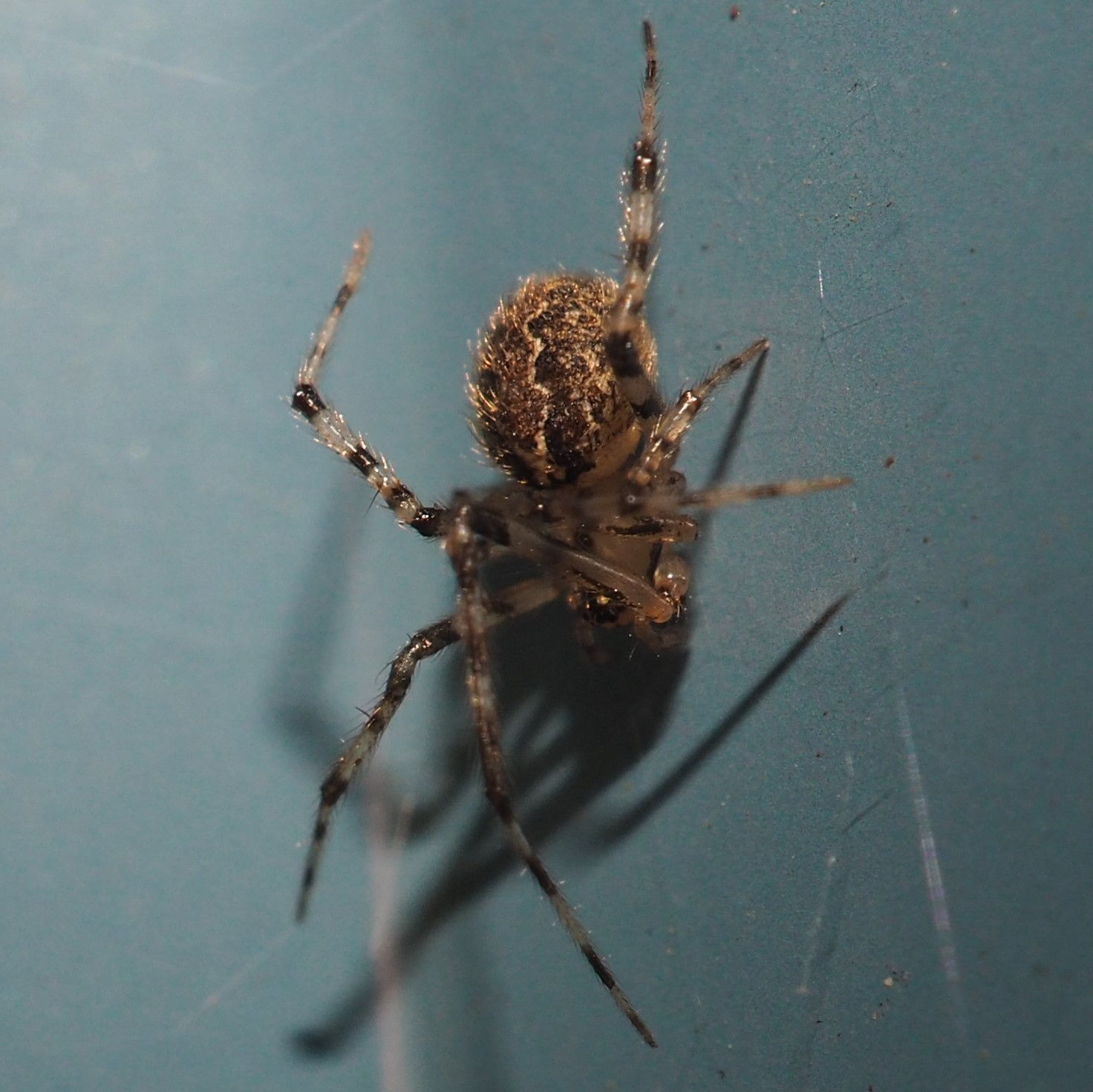
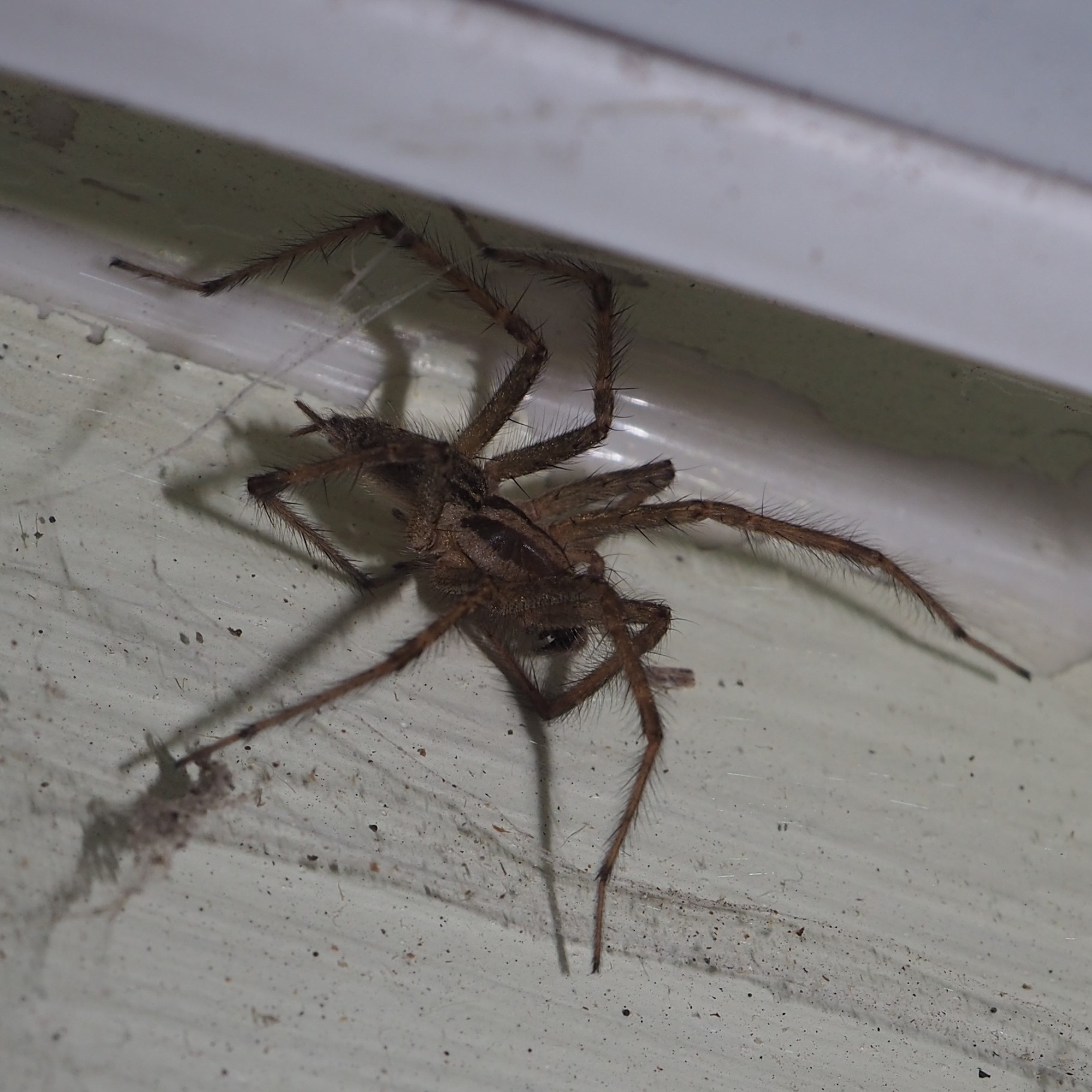
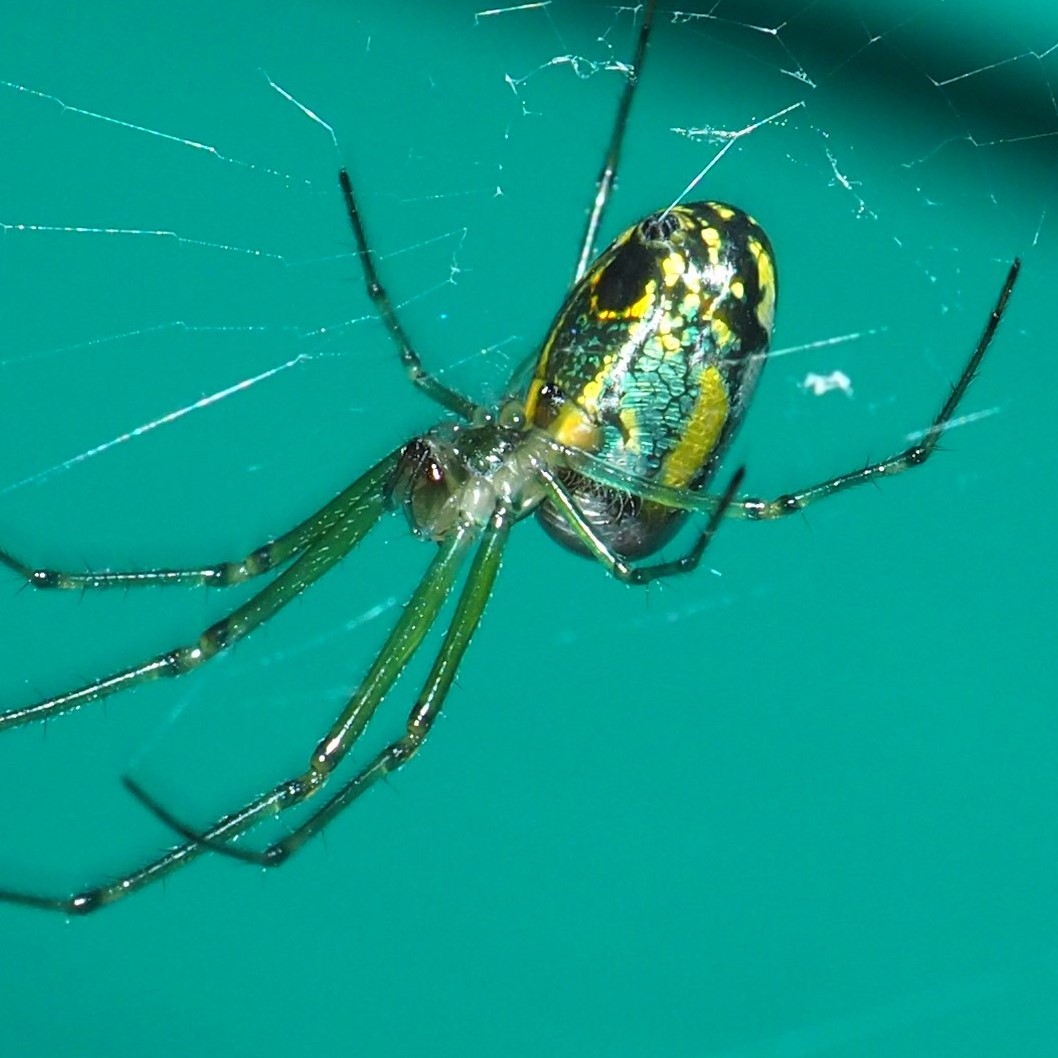
This next two spiders really fooled me - then Matt Claghorn told me that they were the SAME spider from different angles - genus Euryopis. I did some looking around on iNat for Euryopis and found a picture labeled Euryopis but showing a familiar spider egg mass. It was almost identical to the one we've been following for about a month. It must have already hatched before I found it and the spider here may be one of its babies - all grown up.
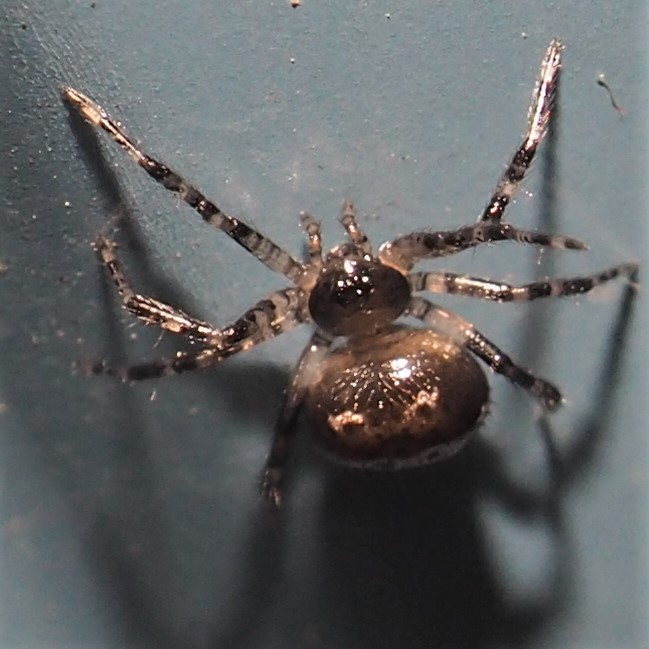
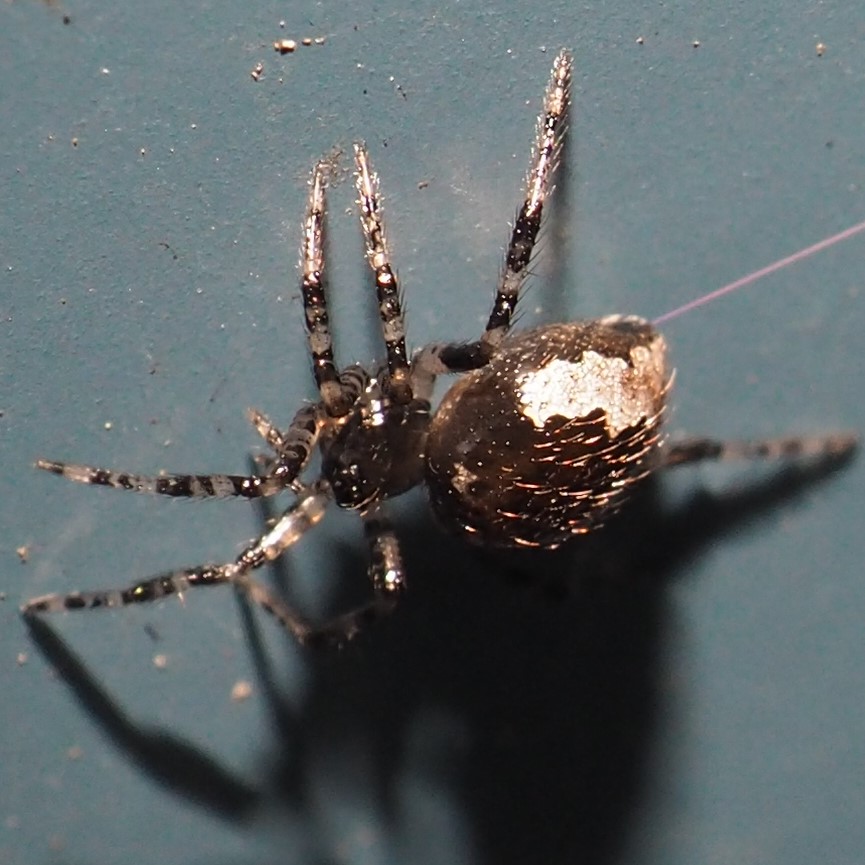
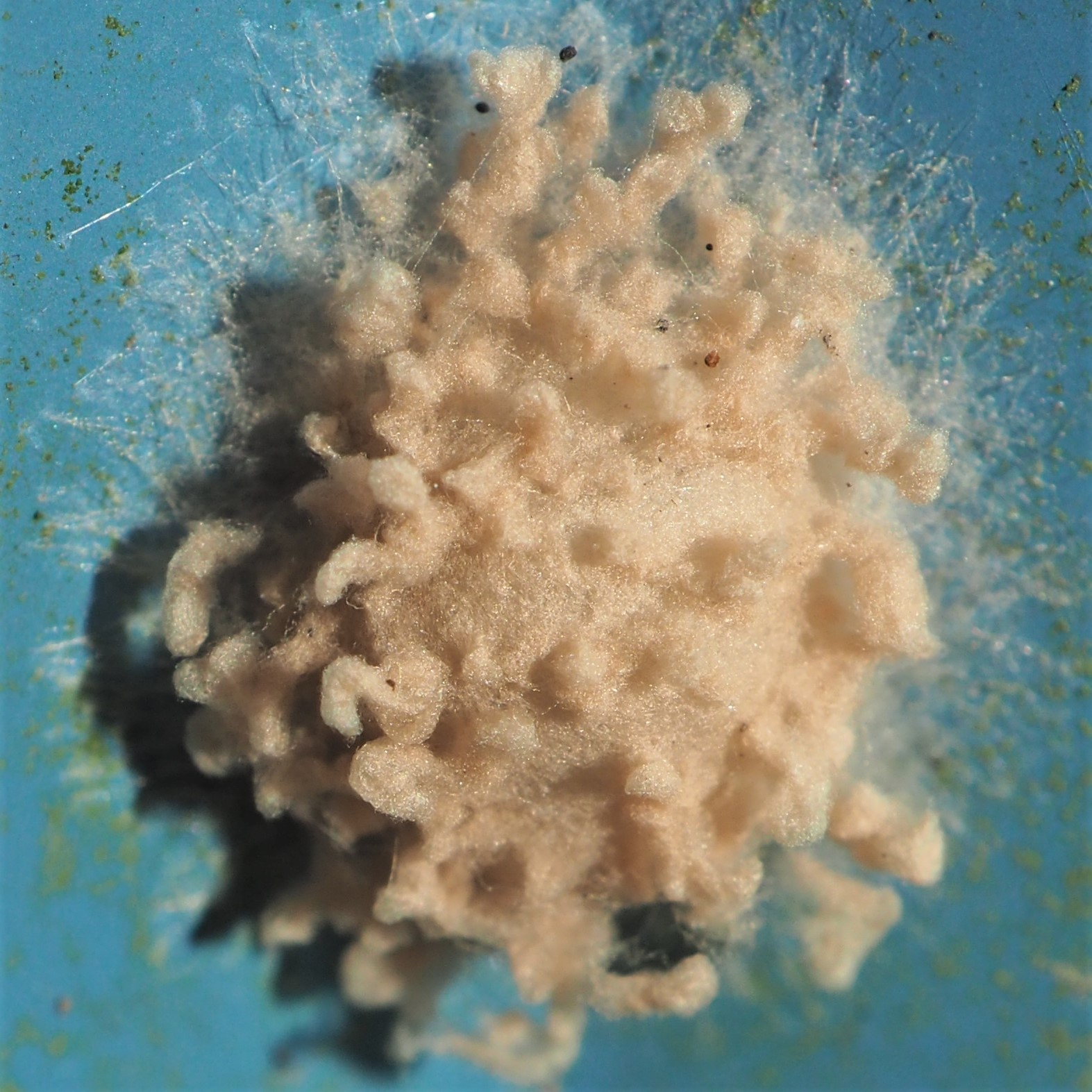
The most common spiders of the week were the tiny, almost invisible, Crab Spiders, especially the ones of genus Mecaphesa. I particularly like the bright yellow ones. Look at the face on this one! And this one. Oops, remember the "face" you see is actually the pattern on its abdomen! The third one is diving into the vegetation.
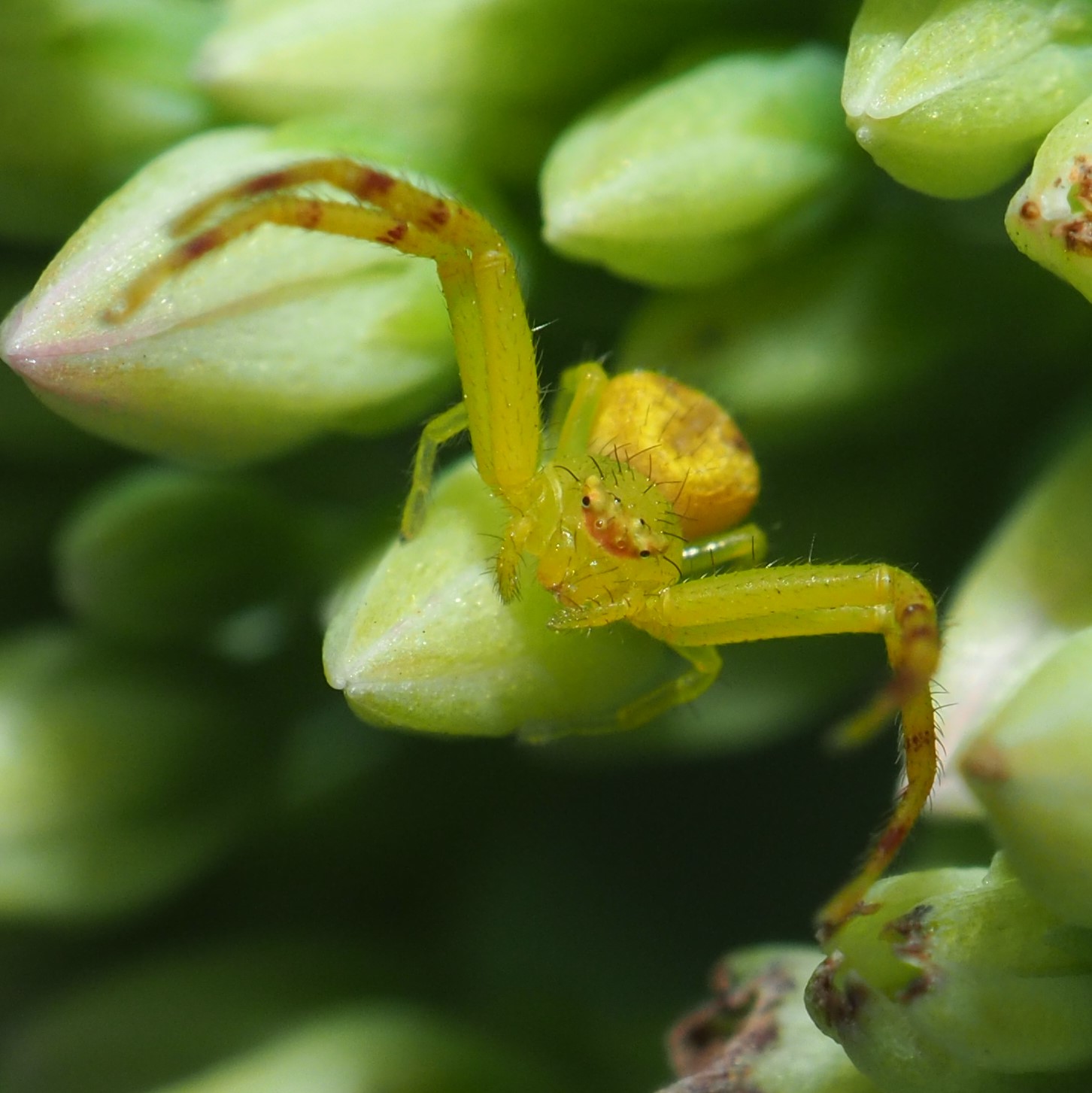
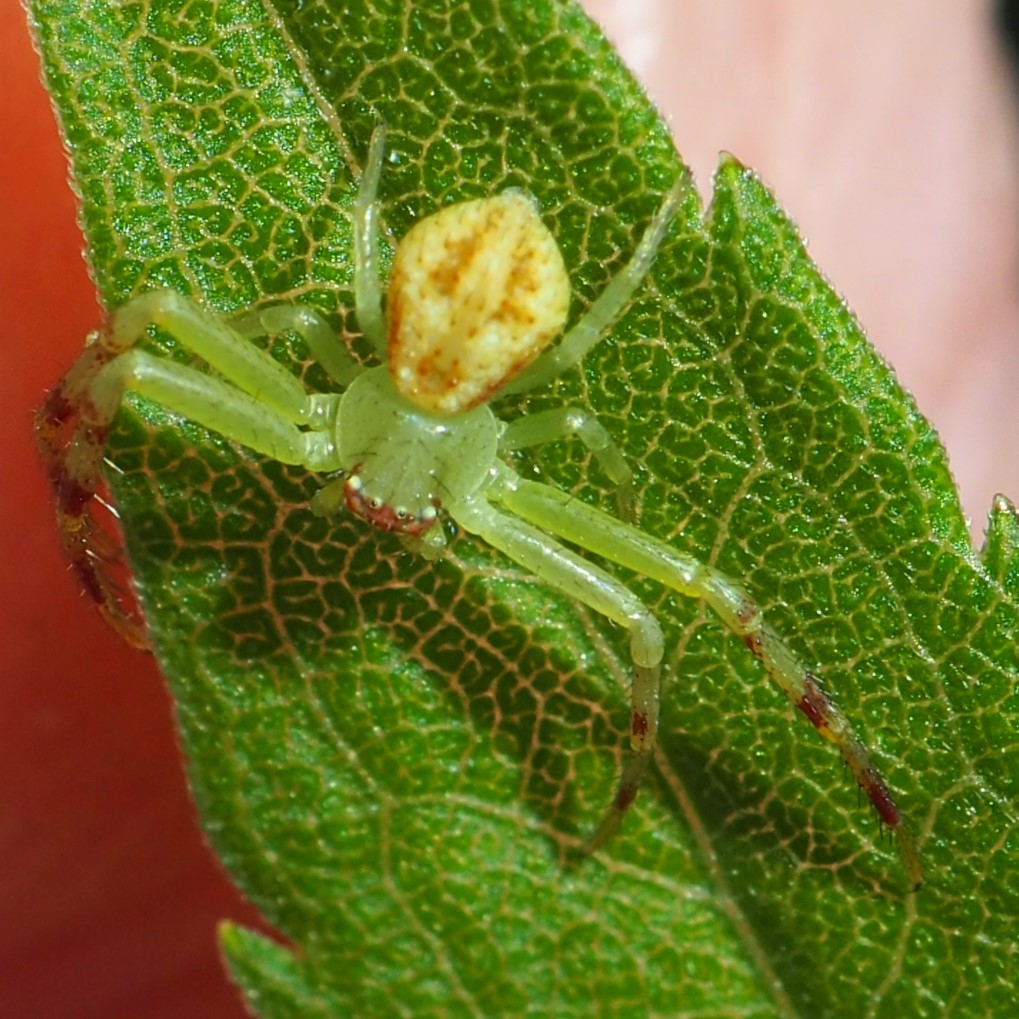
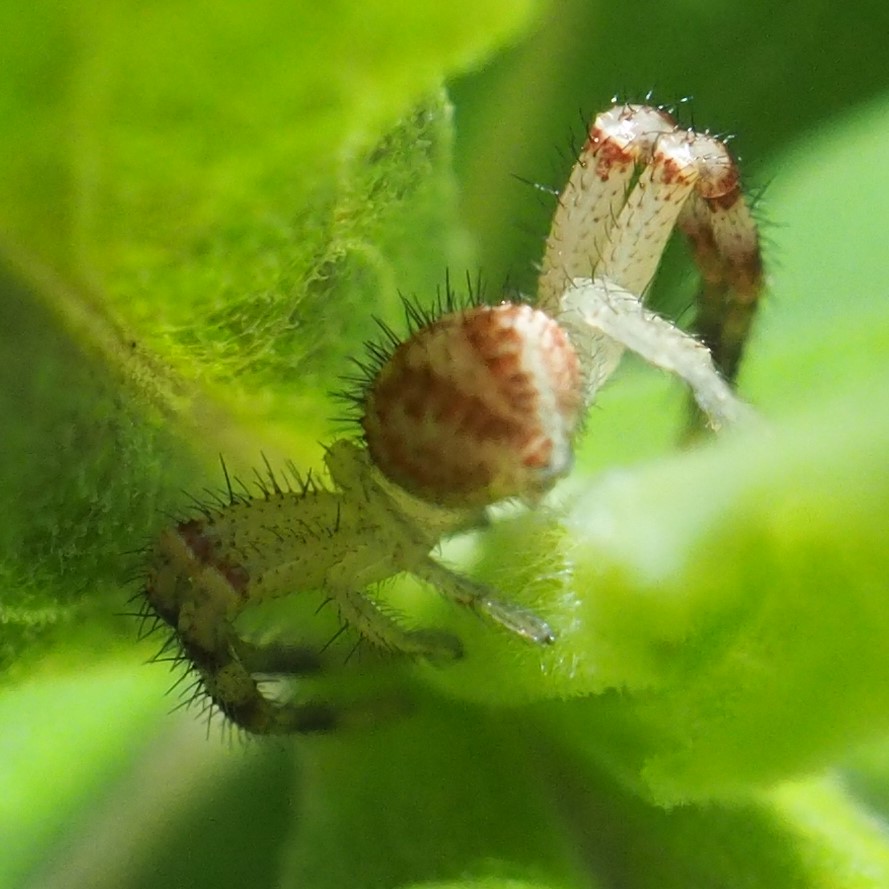
This beautiful wasp is an Ichneumon, Ichneumon annulatorius. It continually wiggles its antennae and has the tell-tale white bits in the antennae. It is a male since it has no ovipositor. The next wasp has such a long ovipositor it takes up half the field of vision. The third wasp is small and seems to be tasting or licking the leaf for prey of some kind.
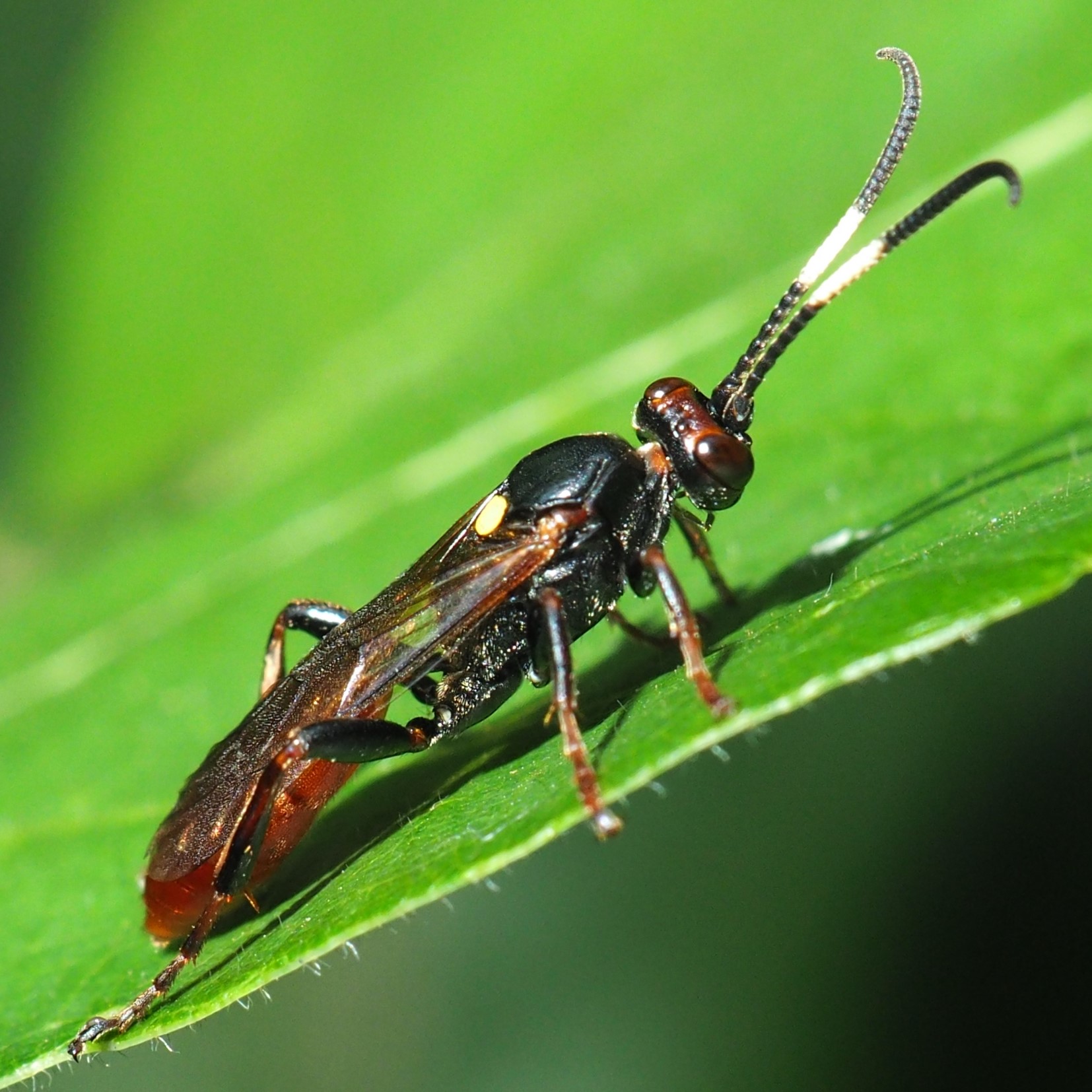
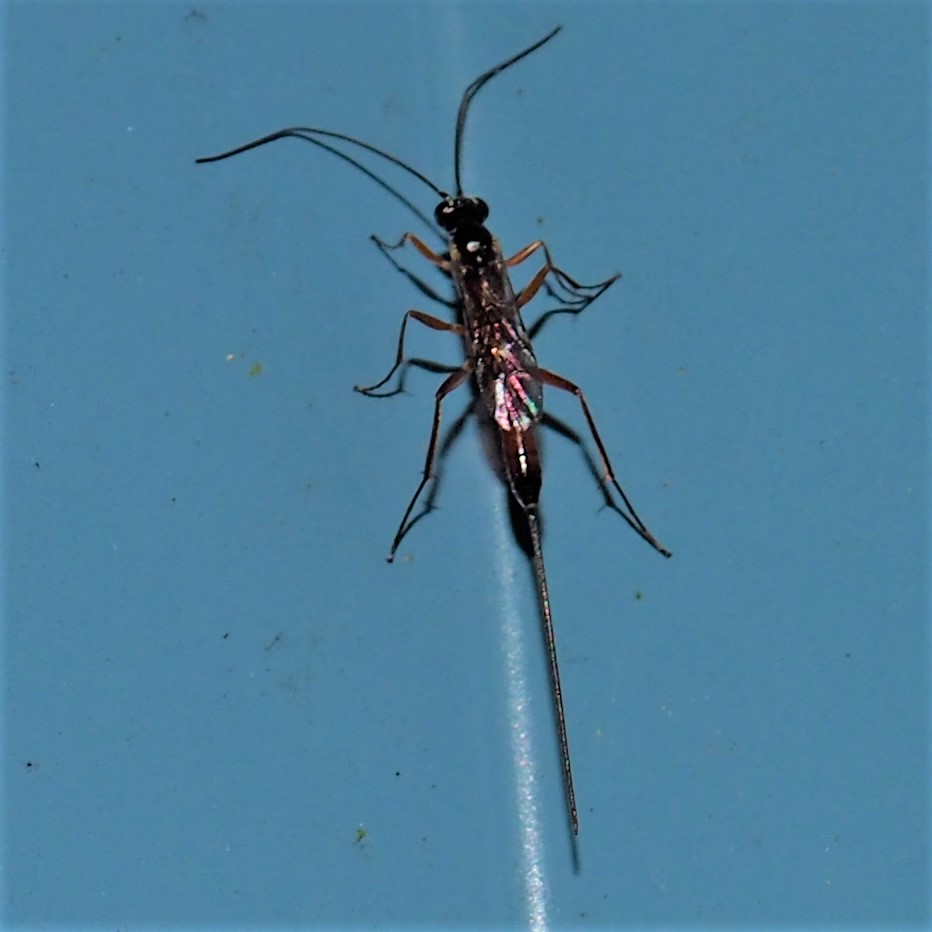
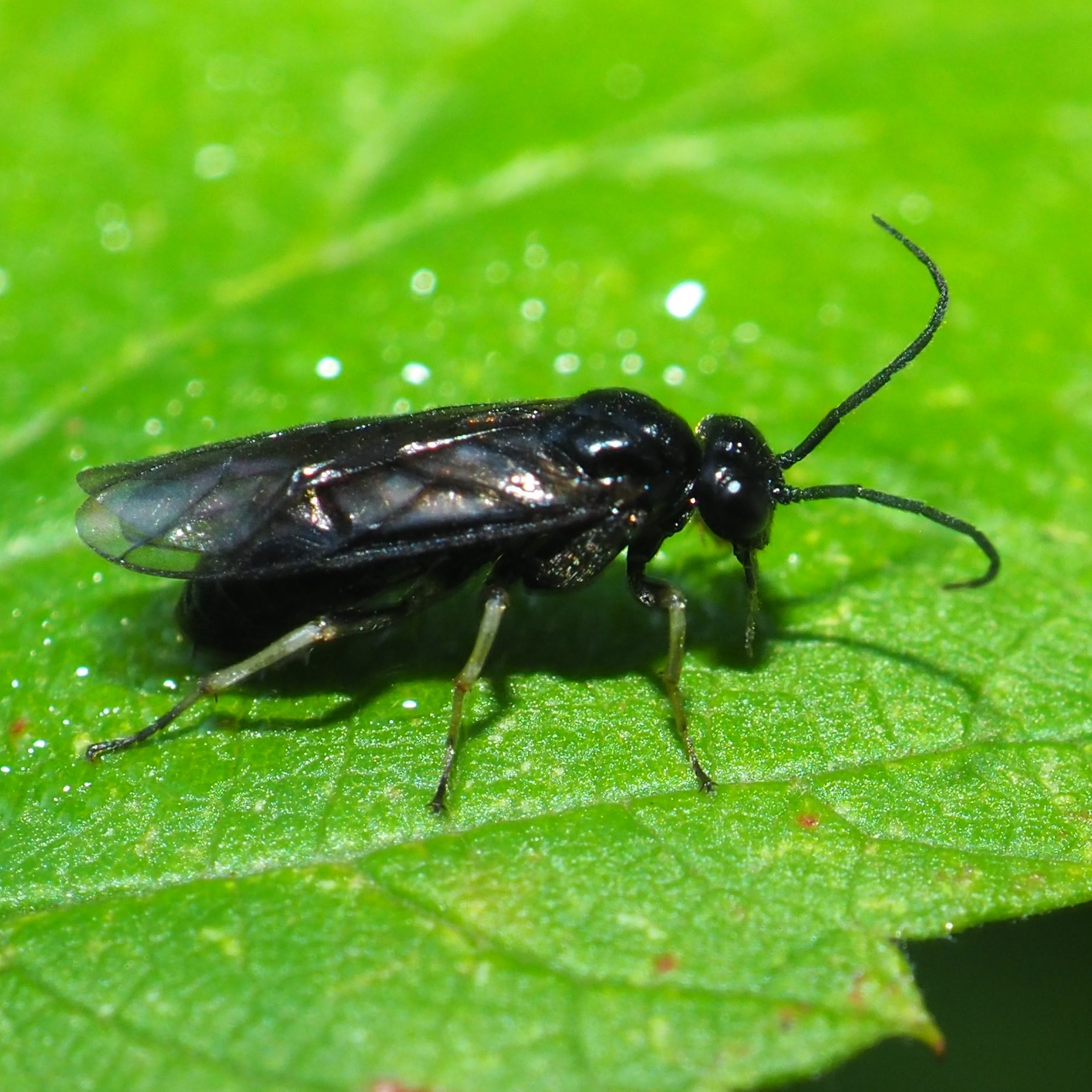
This little wasp was running about on the shop side so that I thought at first it might be a winged ant. It turns out to be a tiny ichneumon wasp indeed, with a rhyming name Gelis tenellus. The next one was the first wasp on goldenrod of the season. Too bad the wind kept blowing the goldenrod, but I'm pretty sure this is one of the Dark (or Northern) Paper Wasps.
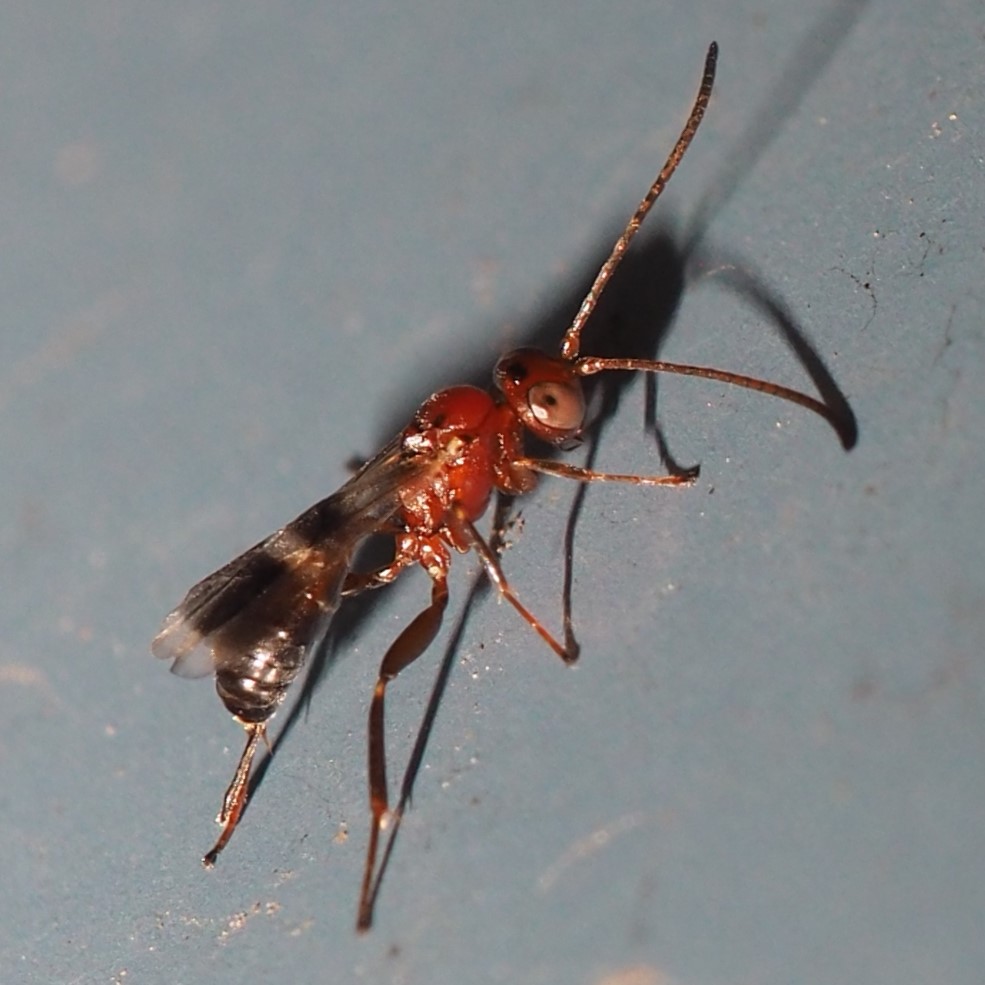
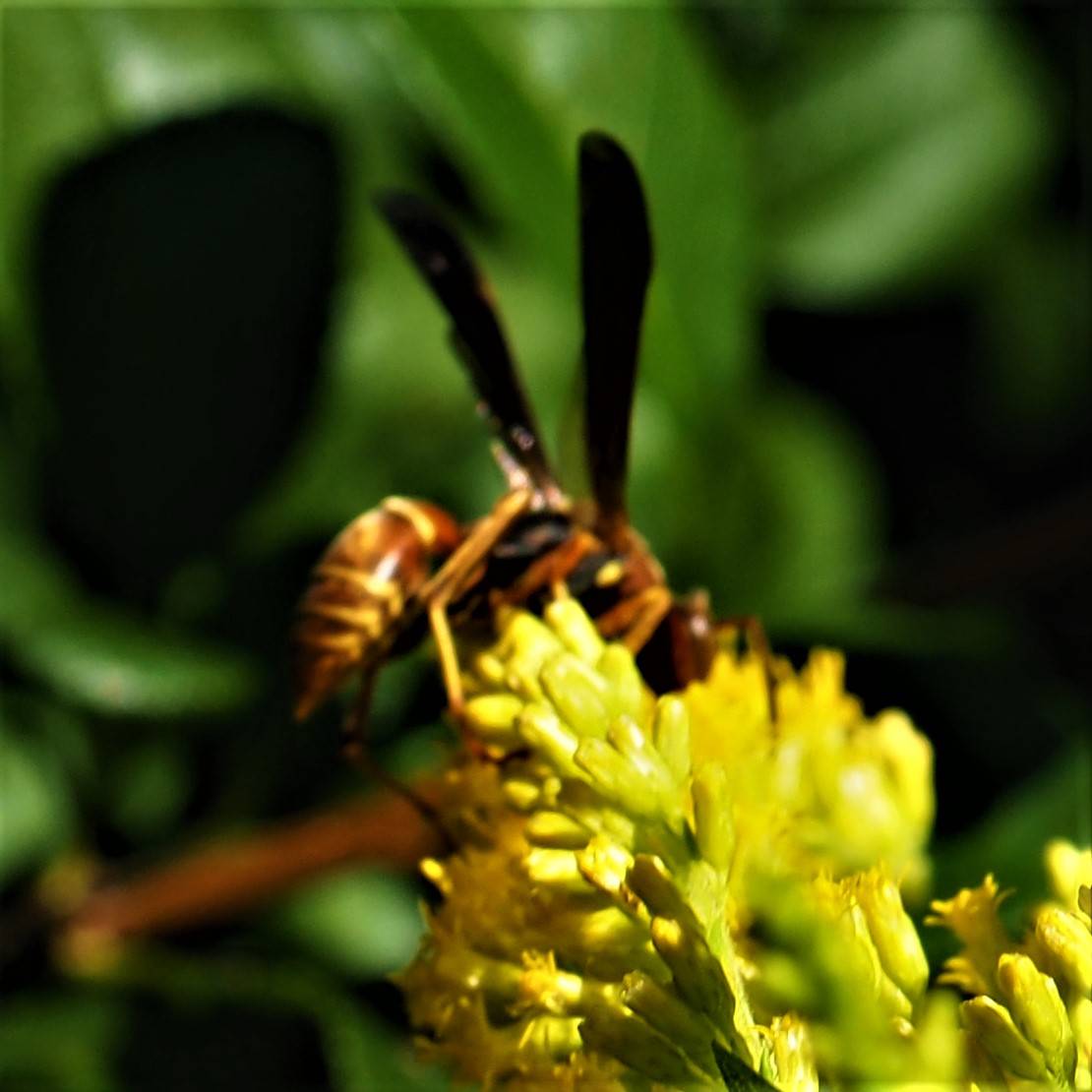
We've gone through most of the lively creatures of the week. But maybe you'd like to refresh your palate with some flowers. Here we have two colors of Water Lily- a greenish white one and the faithful pink one. The colors seem to be brighter when I take the picture on the north end of the pond facing south, at least in the late afternoon. The Trumpetvine flowers are falling just as the Japanese Anemones are beginning their bloom.

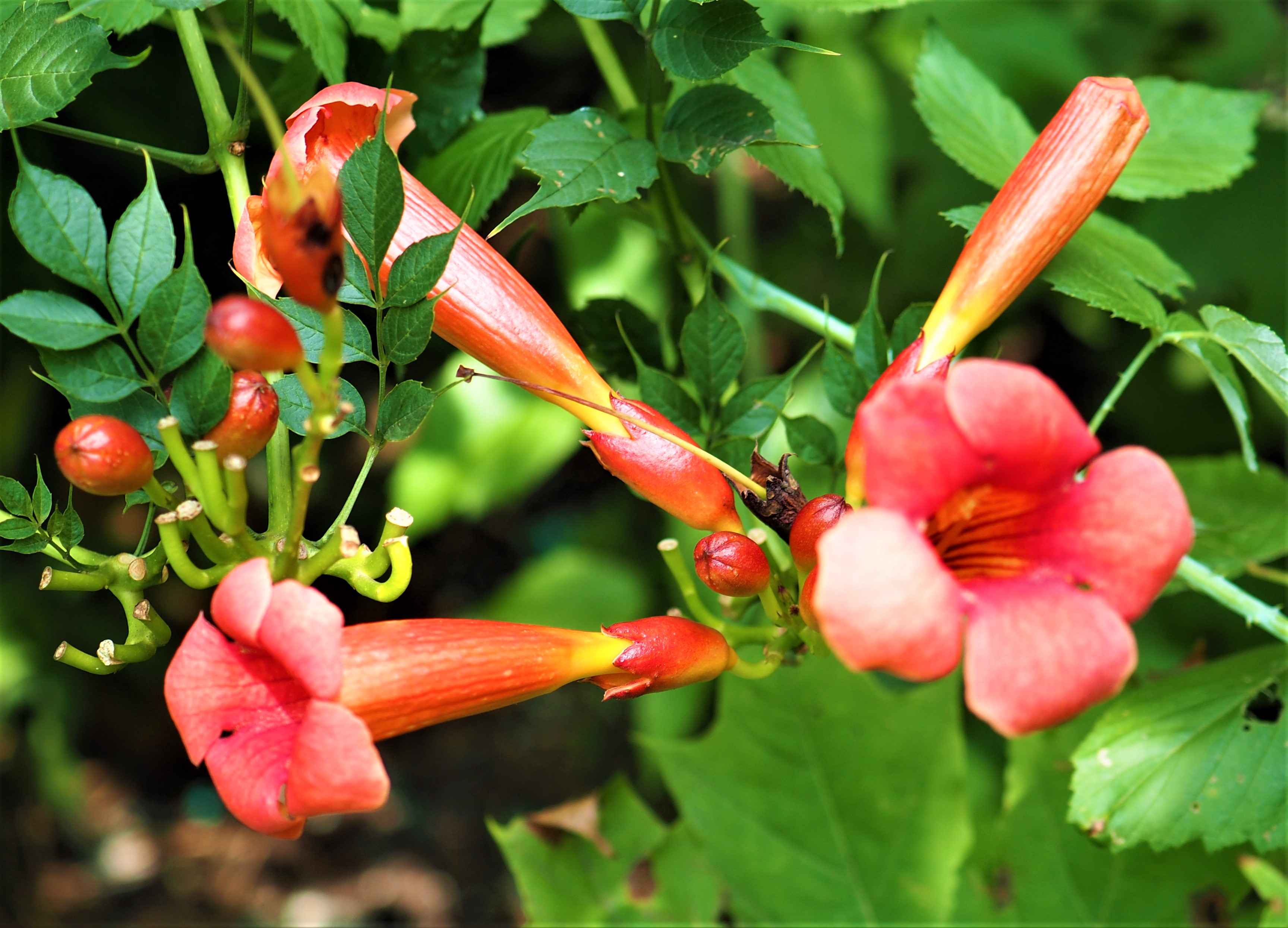
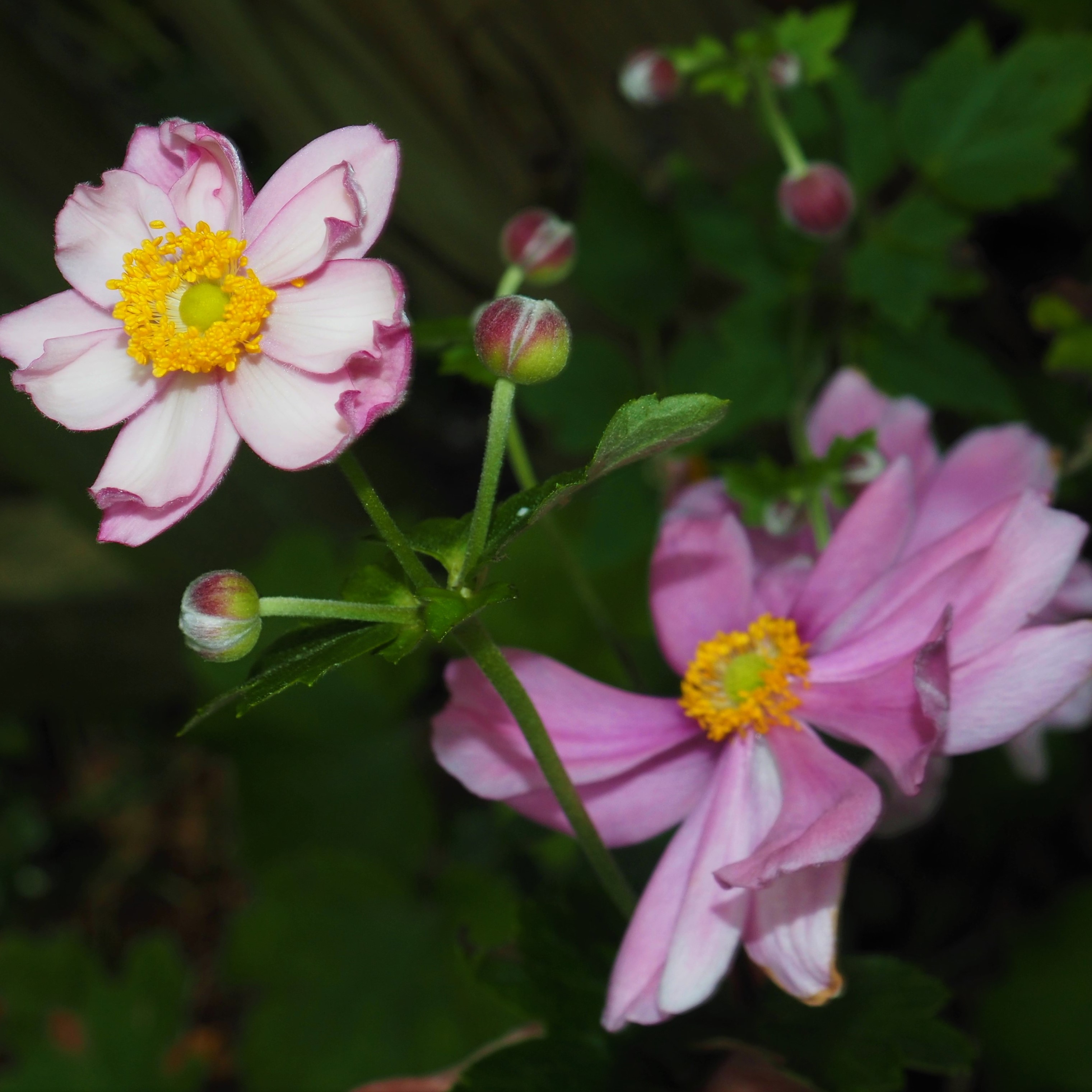
The Fall Phlox is also reaching the end of its reign, while the Autumn Joy Sedum is working up to a flowering. I'm not sure what this "bloom" is - maybe it's something special and maybe it was injured in the bud. I like it.
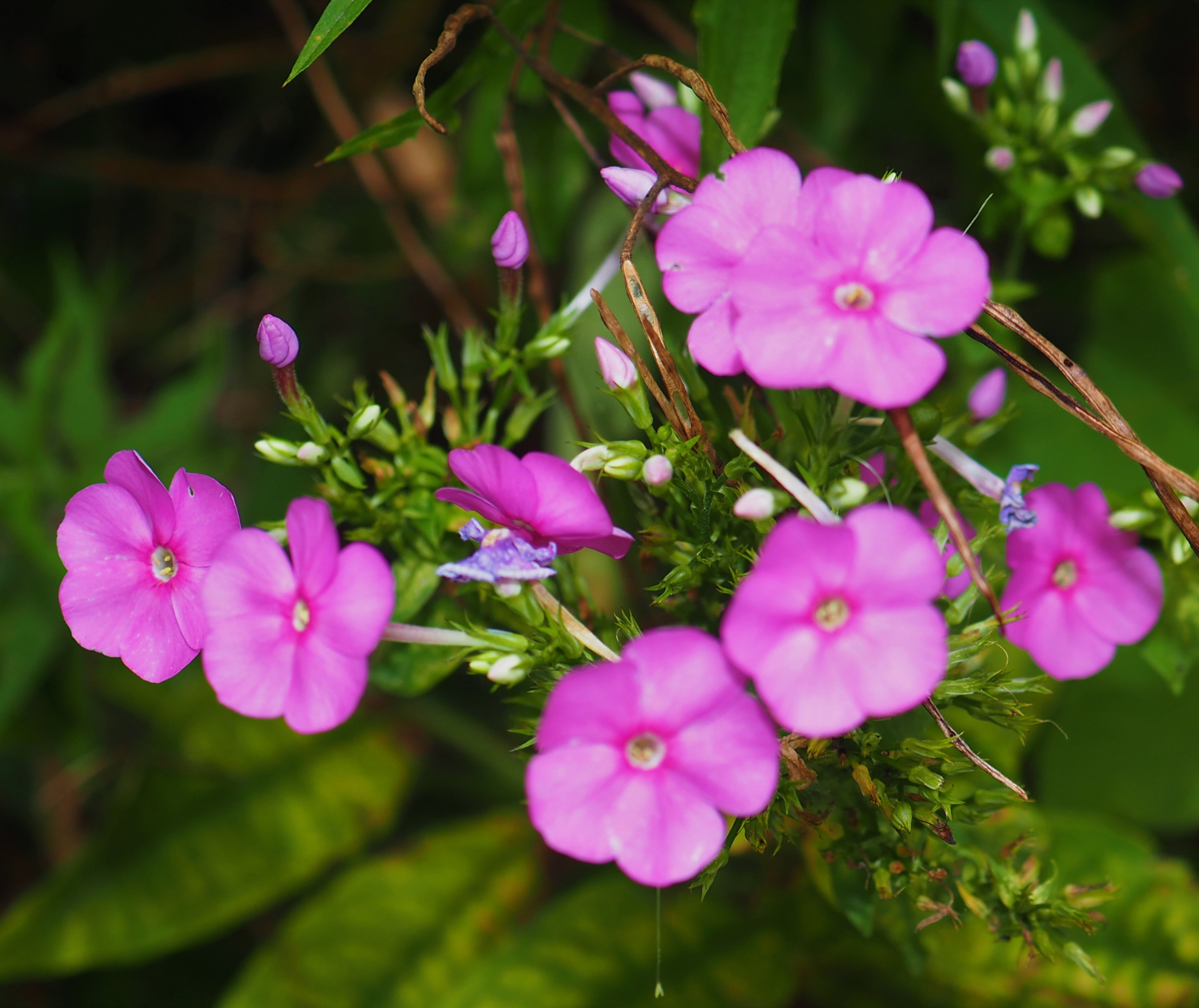
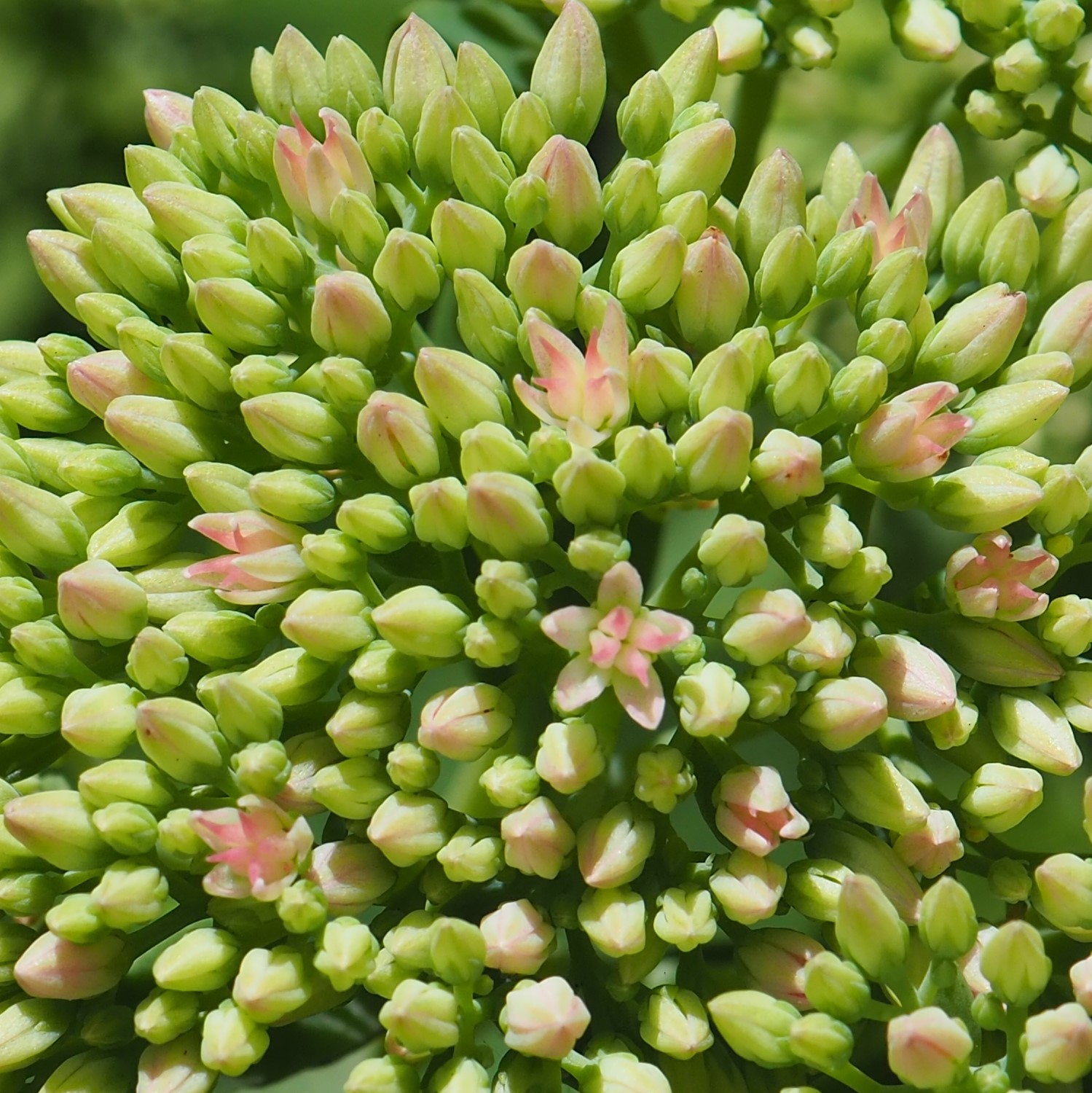
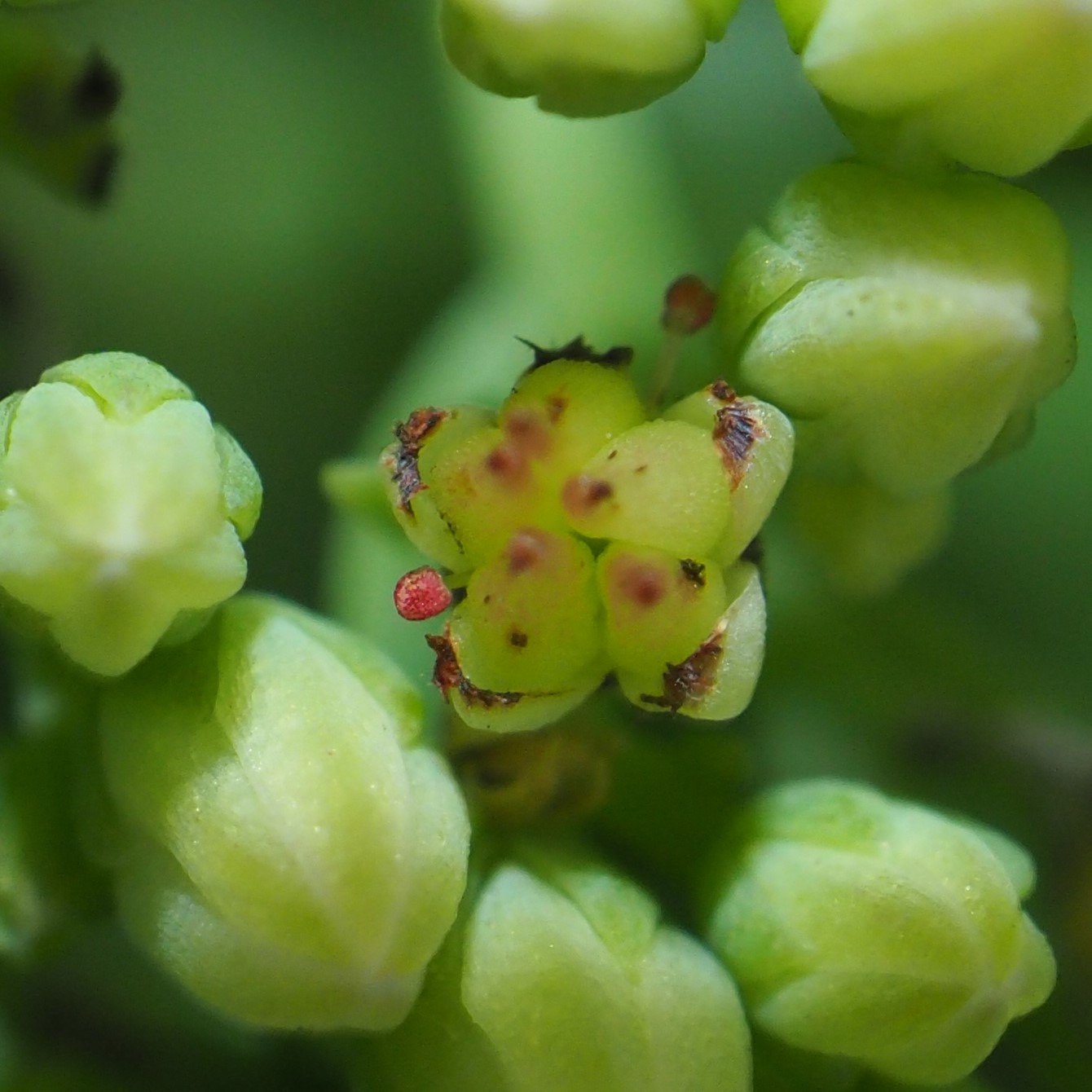
Well, that's about it for another week. Keep in touch with the nature in your world and work to keep it alive. Be good to each other too, and I'll see you next week. Oh, did I mention that tomorrow is my birthday and I will finally be able to say, "I'm going on 80"? A restrained "yay".
Love, Martha
Back to August 18, 2019
Forward to September 1, 2019
Back to main menu
copyright Martha O'Kennon 2019










































































































